Regional Academy Learning Manual For Women in Political Participation



 PAD A RE ENKU N DLENI MENSFORUM ONGENDER
PAD A RE ENKU N DLENI MENSFORUM ONGENDER



REGIONAL ACADEMY LEARNING MANUAL FOR WOMEN IN POLITICAL PARTICIPATION (WPP) 1
Published By:
Forum For African Women Educationalists (FAWE)

FAWE House, Chania Avenue, Off Wood Avenue, Kilimani P.o. Box 21394 - Ngong Road, Nairobi 00505, Kenya.
Tel: (254-020) 3873131/3873359 Fax: (254-020) 3874150
Email: Fawe@Fawe.org www.fawe.org
Copyright:
This publication may not be reproduced for any purposes without prior written permission from FAWE. FAWE cannot be held responsible for any inaccuracies. Parts of this publication may be copied for use in research, advocacy and education, provided that the source is acknowledged.
© FAWE Forum For African Women Educationalists (FAWE). 2021
This publication was copy edited and designed by: EKAR COMMUNICATIONS © Nairobi, Kenya
W: www.ekarcommuncations.com
E: info@ekarcommunications.com T: +254711409860
REGIONAL ACADEMY LEARNING MANUAL FOR WOMEN IN POLITICAL PARTICIPATION (WPP)
2 3
REGIONAL ACADEMY LEARNING MANUAL FOR WOMEN IN POLITICAL PARTICIPATION (WPP)
Executive Summary Acknowledgements
The completion of this learning manual would not have been possible without the collaboration between various actors to whom we owe a word of appreciation and recognition. We would like to express our sincere appreciation to the International IDEA and Sida that, through the above programme, provided financial and technical support to implement this project. The realisation of this learning manual is part of the project’s activities. Similarly, our special appreciation to members of consortium for their useful contribution towards the achievement of this learning manual
Special gratitude goes to the team consultants led by Dr Rutebuka Balinda for their intellectual contribution in the completion of this learning manual. We finally thank the management and the team from FAWE for their invaluable role in the development of this learning manual.

Over the last decades, women empowerment has been at the heart of the debate on how to achieve gender equality between men and women across the world. Women empowerment is considered as a key condition for the success of development programmes and endeavors. In this regard, various initiatives, commitments, and efforts have been deployed both at global, regional and at country level to improve women and girls’ participation in politics, including the Beijing declaration, CEDAW, UNSCR 1325 and Maputo protocol, etc;. However, despite of the efforts that have been made in enhancing participation of women in politics in most African countries, women are still
under represented in different political, and decisions making positions across the word.
To fill the above gap, and for them to make a meaningful participation in politics, there is a need to prepare women and girls and equip them with required capacity and attitudes. Thus, FAWE in partnership with the International Institute for Democracy and Electoral Assistance (International IDEA) is implementing the Women in Political Participation (WPP) project for a period of three (3) years. The project aims at increasing the political participation and representation of women in Africa.
REGIONAL ACADEMY LEARNING MANUAL FOR WOMEN IN POLITICAL PARTICIPATION (WPP)
(WPP) 4 5
REGIONAL ACADEMY LEARNING MANUAL FOR WOMEN IN POLITICAL PARTICIPATION
Every great dream begins with a dreamer, always remember you have the strength & the patience.
Ms. Martha R.L. Muhwezi Executive Director, FAWE Africa
Table of Contents
Objective Of The Manual ................................................................................................ 3
Acknowledgements ................................................................................................ 4
Executicve Summary ................................................................................................ 5
Module Overview ................................................................................................ 12
Background 11 Manual Design Approach 15 Module Development Process 16 Methodologies And Techniques To Be Used For The Facilitation 17
Module 0: General Introduction Of The Training Module..................................................................
21
Introductory Module Overview 21
Objectives: Of The General Introductory Module 21
Activity 1: Welcome And Introductions 22
Activity 2: Expectations From Participants 23
Activity 3: Goals And Overview Of The Module 24
Activity4: Setting The Norms And Logistics 24
Activity 5: Module Review Activity 26
Module 1: Introduction To Politics And Governance 28
Module 1 Overview 28
Introductory Activity To The Module 1 29
Activity 2: Introduction To Politics 30 Political Behaviour 30
Activity 3: Political System 31 What Is A Political System? 32 Monarchy 34 Authoritarianism And Totalitarianism 36 In Africa 37 Key Takeaways 37 For Your Review 37
Activity 4: Electoral System 38
What Electoral System? 37 A. Majoritarian Systems 39 B. Proportional Representation 40 Constitutionalism And Elections 43
Activity 5: Political Participation 44
What Is Political Participation? 44
Expanding The Concept Of Participation 45
Barriers To Women’s Effective Participation In The Electoral Process 45
Strategies For Effective Political Participation 47
Activity 6: Forms And Mechanisms Of Political Participation 48 Civic Engagement 48 The Full Typology 50
Activity 7: State Of Democracy In Africa 53
Challenges To Democracy 54
Representative Government 55 Summary On Representative Government In Africa, 2018 56
Activity 8: Notion Of Governance And E-Governance 56 Some General Contexts Of Governance 56 Defining Governance And Good Governance 57
Activity 9: Layers Of Governance 59 Layers Of Governance 59 Central Governance 59 Basic Structure 59
Roles And Responsibilities Of Central Government 60 Structure Of Parliaments 60 Decentralized Governance 61 Local Government Defined 61 Roles And Responsibilities Of Local Government 61
Activity 10: Conclusion 62
Module 2: International Legal Framework For Women Political Participation
63
Activity 1: Introduction 64
Activity 2. UNSCR 1325 65
What Is UNSCR 1325? 65 How Did UNSCR 1325 Come About? 65
The Focus Of UNSCR 1325 66 The Four Pillars Of UNSCR 1325 66
Activity 3: Convention On The Elimination Of All Forms Of Discrimination Against Women (CEDAW) 67
Key Notes On CEDAW 69
Activity 4: The Maputo Protocol 69 The Maputo Protocol 70 Case Studies On Maputo Protocol Implementation 70 Is The Maputo Protocol Being Domesticated 70 In African Countries? 70
Constitutional And Legislative Framework 70 Comparison: Constitution, Gender Equality And Sexual- And Gender-Based Violence Legislation And Policies In Four African Countries 71 Africa Position On Human Rights Of Woman 72 Maputo Protocol On Women Empowerment 72
Activity 5: Beijing Declaration And Platform For Action (BPFA) 73 Beijing Declaration 74 Women And Poverty 74 Education And Training Of Women 74 Women And The Economy 75 Women In Power And Decision Making 76
Activity 6: Sustainable Development Goal-5, ILO 190 And Au Agenda 2063 77 Targets 77
Why It Matters 78
ILO Convention 190: Concerning The Elimination Of Violence And Harassment In The World Of Work 78 Defininitions 80
Activity 7: African Charter On Democracy, Elections And Governance 81
Activity 8: Case Of Some African Constitutions 82 Sample Constitutions 82 Botswana 82
(WPP) 6 7
REGIONAL ACADEMY LEARNING MANUAL FOR WOMEN IN POLITICAL PARTICIPATION (WPP) REGIONAL ACADEMY LEARNING MANUAL FOR WOMEN IN POLITICAL PARTICIPATION
Table of Contents
..................................
Democratic Republic Of Congo 83
Constitution Of Eswatini Part 1(B) 83 The Constitution Of Republic Of Kenya 84 United Republic Of Tanzania 84 Repiblic Of Zimbabwe 84
Activity 9: Conclusion 85
Module 3: Politics And Women Engagement
................................................................................... 86
Module Overview 86
Activity 1: Introductory Activity To Module 3 86
Activity 2: Women In Politics 87
How To Bring Women In Politics? 88
Activity 3: Women’s Personal Development And Self-Confidence Building 89 Personality Development For Women 89
Activity 4: Role Of Women In Politics 96
The Role Of Women In Politics. 96 For Women And Women’s Rights 96
Activity 5: How To Engage Women And Young Girls In Politics 97
Guiding Questions 97 How To Engage Women And Young Girls In Politics: 97 For The Nation As A Whole 97
Sustainable Development Goal #5 98
Leadership And Political Participation Of Women With Disabilities. 98
Activity 6: Political Aspirant Recruitment 101 What Strategies Work? 101
Activity 7: Political Mentorship 101
What Is Political Mentorship? 101 The Purpose Of Mentorship 102
Activity 8: State Of WPP In Africa 103
The State Of WPP In Africa 103
Activity 9: Case Studies Of WPP (Successful Stories) 104 Case Of Rwanda 104 Case Of South Africa 104
Activity 10: Conclusion 107
Module 4: Women In Elections 108
Module Overview 108
Activity 1: Introductory Activity 109
Activity 2: Political Positioning 110
What Is Political Positioning 110
The Purpose Of Political Positioning 110
Activity 3: Constituency Building 111
What Is Constituency Building? 111
The Role Of Constituency Building In Advancing
Gender Equality 112
Activity 4: Effective Manifesto Building 112
What Is A Manifesto? 112
Why Have A Manifesto? 113
Content And Structure Of The Manifesto 113
Activity 5: Campaign Fund Raising 114
The Rules For Political Fundraising 114
Identifying Potential Donors 117
Activity 6: Campaign Resources Mobilisation And Funding 117
What Is A Political Campaign? 117 Campaign Requirements 117
Activity 7: A Case Study 118 Case Of Rwanda 118 Case Of South Africa 118 Case Of Senegal 119
Activity 8: Conclusion 119
Module 5: Communication, Public Relation And Branding Skills 120
Module 5 Overview 121
Activity 1: Introduction 121
Importance Of Communication 122
Activity 2. Types Of Communication 122
Types Of Communication 123
Political Nonverbal Communication 123
Social Media 126
ICT And African Politics 127 Recruitment Propaganda 127
Activity 3: Tips For Effective Communication 128
Tips For Effective Communication 128 Personal Presentation And Image 129 Speech Preparation 130 Handling Negative Situations 130
Political Writing 131 Facilitator’s Input 131
Activity 4: Barriers To Effective Communication 132 Common Barriers To Effective Communication 132
Activity 5: Political Communication 134 How To Write A Press Release 135
Political Interviews 137 Elevator Speeches 137 Content Of An Elevator Speech 138
Activity 6: Public Speaking 139
Political Public Speaking 139
Activity 7: Public Relations 140
Five Things Everyone Should Know About Public Relations 141 What Is Public Relations? 141
How Is Public Relation Different Than Advertising? 141 What Is News? 142
Can Social Media Replace Traditional Media? 142 Can You Measure Pr? 142
Activity 8: Public Branding 142
What Is The Public Branding? 142 What Are The Steps In Public Branding? 142 What Is The Difference Between Public Branding And Pr? 142
Activity 9: Case Studies 143 Case Of Louise Mushikiwabo 144
Activity 10: Conclusion 145
Module 6: Gender And Gender Mainstreaming ...................................................................................... 146
Activity 1: Introduction 147
Activity 2: Gender And Gbv 147
Sex And Gender 149 Stereotypes 149
REGIONAL ACADEMY LEARNING MANUAL FOR WOMEN IN POLITICAL PARTICIPATION
REGIONAL ACADEMY LEARNING MANUAL FOR WOMEN IN POLITICAL PARTICIPATION (WPP)
(WPP) 8 9
Examples Of Gender Based Violence 151
Activity 3: Gender Mainstreaming 152
Activity 4: Gender Analysis 155
Gender Analysis 155
What Are Gender Analysis Tools? 155 What Is Gender Mainstreaming? 156 What Is Gender Analysis Matrix? 162
Stated Gender Objectives: 162 Why Is Gender Analysis Important In Any Project? 163
Activity 5: Gender Responsive Budgeting 163
Why Is Gender Responsive Budgeting Important? 163 Gender Responsive Budgeting (Grb) Steps 164 Case Of Where Is Gender Responsive Budgeting Successful 164
Activity 6: Resource Mobilization 166
What Is Resource Mobilization? 166 Main Challenges Of Gender Mainstreaming 167 Key Elements Of A Resource Mobilization Strategy 167
Activity 7: Women Economic Empowerment 168
What Is Women Economic Empowerment 168 Importance Of Empowerment 169 Transparency Rules 170 Oversight And Enforcement 170 Key Principles And International Standards 171
Activity 8: Financial Literacy 173 How To Assess Your Financial Literacy 176 How To Improve Your Financial Literacy Right Now 176
Activity 9: Conclusion 177
Module 7: Women’s Political Influence And Sustainability
178
Activity 1: Introduction 179
Activity 2: How To Make Influence In Politics 179
Activity 3: Political Sustainability 187
Activity 4: Advocacy And Lobbying In Politics 189 Meaning Of Lobbying 191
Activity 5: Negotiation 191
What Is The Negotiation? 191
Activity 6: Coalition Building 194
What Is A Coalition? 194 What Is Coalition Building? 194 Coalition Planning Tools 194 How Is A Coalition Formed? 195
Activity 7: Experience And Record Keeping 195
What Is Record Keeping Experience? 196 What Defines Experience? 196 What Are The Types Of Record Keeping? 196
Activity 8: Political Succession 196
What Does Political Succession Mean In Politics? 197
Democratic Succession And Transition 197
Succession In Non-Democratic Regimes 198 Succession In Africa 198
Activity 9: Conflict Resolution 201
5 Conflict Resolution Strategies We All Use 202
Activity 10: Conclusion 206
Module 8: Transformative Leadership For Women In Politics 207
Module Overview 207
Activity 1: Introduction 208
Activity 2: Women’s Transformative Leadership In Africa 209
Activity 3: Gender Justice And Women’s Rights 211 Achieving Gender Justice To Tackle Poverty 211
Activity 4: Transformative Change And Power 212
Activity 5: Transformative Leadership For Women’s Rights 214 Women’s Political Participation And Leadership 214
Activity 6: Role Model And Characteristics Of A Good Leader 215 The Characteristics Of A Good Leader 215
Activity 7: Conclusion 220
Module 9: Work Life Balance
................................................................................................ 221
Module 9: Overview 222
Activity 1: Introduction 222 Work-Life Balance Introduction 223
Activity 2: The Benefits Of A Work-Life Balance 223 Work-Life Balance Benefits For The Employees 223 Work-Life Balance Advantages For Employer 224
Activity 3: The Signs Of An Unbalanced Life 224
Activity 4: Psychological Counselling 227 Unhealthy Habits And Addictions 229 Mental Clarity 229 Mental Disorders 230
Finding The Right Help 230 Accessing Help 230 Emotional Intelligence 230 Emotional Intelligence In Leadership 230
Module 10: Mainstreaming Disability For Women Political Participation
........................................... 234
Module 10: Overview 235
Activity 1: Introduction To The Module 235
Introduction 236 Relevance 236 Defining Disability 236 Understanding Disability Perspectives 236 Disability Data In Africa 237 World Population 237
Activity 2: Legal Framework For Mainstreaming Disability For Women inPolitical Participation 238
National Legal Framework 239
Activity 3: Disability Mainstreaming In Politics 240 Mainstreaming Disability In Politics 240
Activity 4: Obstacles/ Barriers To Equal Political Participation 241
WWD Level Of Political Representation In Africa Country/Region/Continent 242
Activity 5: Strategies For Effective WWD Participation In Politics 243
Activity 6: Conclusions 244
References
................................................................................................ 245
REGIONAL ACADEMY LEARNING MANUAL FOR WOMEN IN POLITICAL PARTICIPATION (WPP)
(WPP) 10 11
REGIONAL ACADEMY LEARNING MANUAL FOR WOMEN IN POLITICAL PARTICIPATION
..............................................................
The drive to promote women to decision-making positions worldwide gained momentum between 1980 and early 1990 through a series of international conferences. Further impetus came from the 1995 fourth World Conference on Women: Action for Equality, Development and Peace, held in Beijing, China, which called for at least 30 per cent of female representation in local and national governments. In September 2000 at the UN Millennium Summit in New York, world leaders pledged to “promote gender equality and empowerment of women as effective ways to combat poverty, hunger and disease and to stimulate development that is truly sustainable.” At the UN Millennium Summit, world leaders adopted the goal of gender equality and seven others that are now known collectively as the Millennium Development Goals. Note that later on, the Millennium Development Goals were renamed Sustainable Development Goals (SDGs). Since these goals were set, the number of women in leadership positions has been rising.

Despite committing to the SDGs all those years ago, progress in increasing womens’ participation in key leadership positions around the world has been slow. As a result, women continue to have less access to decision-making bodies in both public and private institutions. In public office, the proportion of women parliamentarians-while on the rise-was still only 22 percent in 2015 (O’Neil and Domingo 2015). In addition, women still make up an incredibly small proportion of CEOs among fortune 500 companies-26 out of 2015 (ibid). Strong social norms, like the perception that men are better leaders than women, have made progress a lot more difficult to realize. Where progress has been attained, it has been the result of a collective
effort to expand women’s capabilities and change the institutions’ and publics’ perception surrounding womens’ participation (for example, quotas).
For instance, in Honduras, when it comes to reducing gender inequalities, political participation is one of the areas that has seen the least amount of progress made. The Law for Equality of Opportunity for Women established a 30 percent quota for women in political positions, but the country has had little success in meeting this quota. The largest gains the country made were realized in the period 2006-2009 when 25 percent of officials elected to Congress were women (USAID, 2013). Women’s groups have continued to advocate for more support for female political participation, succeeding in increasing the quota to 40 percent. It is worth mentioning that a lot more significant gains have been made at the national than at the municipal level. Between 2005-09, the number of female members’ elected to municipal level positions dropped from 25 percent to 19.5 percent (USAID, 2013).
According to the UN report (2019), in the fight for gender equality, women around the world have advanced in small and large ways. Yet for women in Africa, progress is measured in micro-steps and the struggle still has a long way to go.
The good news is that women’s representation in political decision-making has been on the rise globally. The notso-good news is that the increase has been stubbornly slow-barely 1 per cent in 2018 compared with the previous year. In 2018 the number of women ministers worldwide reached an all-time high at 20.7 per cent (812 out of 3922).
In sub-Saharan Africa, the number of women seated in parliament grew in 2018-with a regional average share at 23.7 per cent-according to the just-released 2019 edition of the biennial Inter-Parliamentary Union (IPU) Map of Women in Politics.
The IPU, made up of more than 170 national parliaments from around the world, tracks the number of women elected to parliaments globally every year and produces an analysis that helps to monitor progress, setbacks and trends.
Djibouti, which in the year 2000 had zero women in parliament, saw the most dramatic gains globally in the legislatures’ chambers. The share of women in parliament rose in 2018 from 10.8 per cent to 26.2 per cent (a 15.4-point increase)-to include a total of 15 women-states the report
20.7%
(812 out of 3922)
LEARNING
IN
(WPP)
MANUAL FOR WOMEN IN POLITICAL PARTICIPATION (WPP) 12 13
REGIONAL ACADEMY
MANUAL FOR WOMEN
POLITICAL PARTICIPATION
REGIONAL ACADEMY LEARNING
Module Overview Background
World Conference on Women, Beijing China, 1995 (Image Source: Wikipedia)
Women Ministers worldwide in the year 2018
Number of Women seated in Parliament in sub-saharan Africa in 2019
The slow increase in women’s representation in global political decision making between 2018 & 2019
23.7% 1%
which was launched during the Commission on the Status of Women (CSW) at the UN headquarters in New York, March 2019.

Ethiopia saw the largest increase in women’s political representation in the executive branch, from 10 per cent of women ministers in 2017 to 47.6 per cent in 2019.

On ministerial positions, the report highlights another striking gain—more women in Africa are now in charge of portfolios traditionally held by men compared to 2017. There are 30 per cent more women ministers of defence; 52.9 per cent more women ministers of finance and 13.6 per cent more women ministers of foreign affairs.

The usual practice is to appoint women to “soft issue” portfolios, such as social affairs, children and family.







“We still have a steep road ahead, but the growing proportion of women ministers is encouraging, especially where we see a rise in the number of countries with gender-balanced ministerial cabinets,” said Phumzile MlamboNgcuka, UN Women Executive Director, at the launch of the report. She urged countries to make bold moves to dramatically increase women’s representation in decision-making. More women in politics lead to more inclusive decisions and can change people’s image of what a leader looks like, added Ms. MlamboNgcuka, formerly a minister and Deputy President in South Africa.
Among the top African countries with a high percentage of women in ministerial positions are Rwanda (51.9 per cent), South Africa (48.6 per cent), Ethiopia (47.6 per cent), Seychelles (45.5 per cent), Uganda (36.7 per cent) and Mali (34.4 per cent).


The lowest percentage in Africa was in Morocco (5.6 per cent), which has only one female minister in a cabinet of 18. Other countries with fewer than 10 per cent women ministers include Nigeria (8 per cent), Mauritius (8.7 per cent) and Sudan (9.5 per cent).

Notably, Rwanda, the world leader in the number of women in parliament, saw a slight reduction in their number, from 64 per cent in 2017 to 61.3 per cent in 2018. Other African countries with high percentages of women MPs include Namibia (46.2 per cent), South Africa (42.7 per cent) and Senegal (41.8 per cent), according to the report.


Countries achieving the 30 per cent benchmark appear to have adopted a form of affirmative action. For example, Rwanda has constitutional provisions reserving 30 per cent of seats for women in its bicameral legislature while South Africa’s Municipal Structures Act of 1998 requires political parties to “ensure that 50 per cent of the candidates on the party list are women” and that “women must be equitably represented in a ward committee.” Although there is no penalty for noncompliance in South Africa, the country’s ruling party- the African National Congress (ANC), voluntarily allocates 50 per cent of the parliamentary seats to women.

However, two main obstacles prevent women from participating fully in political life according to UN Women. These are structural barriers; whereby discriminatory laws and institutions still limit women’s ability to run for office; and capacity gaps, which occur when women are less likely than men to have the education level, contacts and resources needed to become effective leaders.
As countries strive to implement Sustainable Development Goal 5, “Achieve gender equality and empower all women and girls,” governments must also strive to embed gender parity in constitutions and legal frameworks. They must realize full compliance with the law, eliminate all forms of violence against women and ensure that girls receive a quality education.
 REGIONAL ACADEMY LEARNING MANUAL FOR WOMEN IN POLITICAL PARTICIPATION (WPP)
REGIONAL ACADEMY LEARNING MANUAL FOR WOMEN IN POLITICAL PARTICIPATION (WPP)
(WPP) 14 15
REGIONAL ACADEMY LEARNING MANUAL FOR WOMEN IN POLITICAL PARTICIPATION
Percentage increase of women in portfolios traditionally held by men.
Top 6 African countries with highest percentage of in women in ministerial positions.
Bottom 4 African countries with lowest percentage of in women in ministerial positions.
RWANDA 51.9% SOUTH AFRICA 48.6% ETHIOPIA 47.6% SEYCHELLES 45.5% UGANDA 36.7% MALI 34.4% FOREIGN AFFAIRS DEFENSE FINANCE 13.6% 30% 52.9% SUDAN 9.5% MAURITIUS 8.7% NIGERIA 8% MOROCCO 5.6%
Within the East Africa Community, Uganda and Rwanda have taken the lead in Women in Political Participation (WPP). According to the statistics available from the Inter-Parliamentary Union, Rwanda is ranked first globally-with 56.3 per cent of its parliament composed of women-while Uganda is ranked as twenty-first globally with female representation in the national parliament estimated at 31.5 per cent. Burundi (22nd) and Tanzania (23rd) are in fact not far behind Uganda with 31.4 per cent and 30.7 per cent female representation in their national parliaments (respectively).
How far these will go in advancing the number of women political leaders remains to be seen. There will always be work that needs to be done for aspiring women politicians to ensure that they indeed benefit from this legislation. They need to understand the limitations of the laws in so far as their ability to participate equally with the men is concerned. They and their supporters need to strategize about what can be done to strengthen accountability within party structures in the Senate and National Assembly (respectively). Where the ideals of gender equity and equality are concerned, the accountability mechanisms appear weak.
Beyond these, it is also important to work on promoting female representation in the leadership of the executive arm, that is, within ministries, semi-autonomous government authorities (SAGAs) and autonomous government agencies. Parliament is just one (albeit important) area where women can express their leadership abilities. It is as important that in the day-today management of government resources and in the delivery of services, women be enabled to assume leadership positions. This is one critical way of challenging the norm and possibly transforming our understanding of what leadership is in the public and private spheres.
Despite being one of the poorest regions in the world, the level of women’s representation in parliament in sub-Saharan Africa is higher than in many wealthier countries.
Recent studies revealed that girls are equally as politically confident as boys until they reach high school-when that figure drops by half (Phillips, n.d). Development programming tends to focus on young women’s health, education, economic power, and leadership capabilities but does not delve further into civic and political engagement. However, young women’s realisation of their own potential to become leaders in their communities is critical.
Manual design approach
Developing the module was mainly based on three considerations:
Simplified language: to make this module more accessible and friendly usable to all, the development of the module used a simplified language that could be understood both by the trainers and the trainees.
Using illustrations/ images (especially in trainer manual): although this is not a requirementby the client, it is advised in developing training module to enhance the words. It is said that “a picture is worth a thousand words”
Provide practices: on each of the training steps, we will ensure a piece of exercise is provided to enhance participants’ knowledge of the training content.
Module development process
This training module contains seven modules, and each module has specific Objectives:, as well as a number of activities. Each activity of the Module contains information available at the beginning of the module as follows:
Module Objectives: to guide the users about the aim of each module. Objectives: are found at the very beginning in a text box.
A Module Overview Table that includes the session name, activity name, time required and documentation requirements.
Documentation Requirements: a list of all the work that participants are expected to complete by the end of the module
Materials and Preparation: lists all of the materials and preparations needed to complete the activities in the module.
At activity level, individual activities are detailed and include the following:
Activity X: Name and number of activity;
Methodology:
List the different training methods to be used during the activity;
Objectives:
Knowledge, skills, values and attitudes participants will obtain by the end of the activity;
Materials:
Any materials necessary for the activity and things that the trainer will need, which must be collected beforehand to prepare for the activity;
Time: Proposed amount of time to conduct the activity;
Steps:
Step by step description of what the trainer needs to do to conduct the activity, including basic instructions to the participants, questions to raise, content to deliver and various work to be performed during the training either individually, in pairs or in groups.
REGIONAL ACADEMY LEARNING MANUAL FOR WOMEN IN POLITICAL PARTICIPATION (WPP)
(WPP) 16 17
REGIONAL ACADEMY LEARNING MANUAL FOR WOMEN IN POLITICAL PARTICIPATION
1 2 3
Lastly, Trainer Tools are displayed all along the manual. Some activities require specific information that participants need to do the activity. An example is a description of a role play and the individual roles. These are labelled as Trainer Tool X.Y and can be found at the end of the activity. They need to be photocopied or written on flipchart if a copier is not available, so that participants may access them during their works.
METHODOLOGIES AND TECHNIQUES TO BE USED FOR THE FACILITATION
The design of this module suggests the use of the following types of methodologies / techniques throughout training facilitation using this manual:
Pair share and pair work:
When introducing a new activity or when working with the large group, the trainer may find it useful to have two people sitting next to each other to work together or share their ideas on a module. The trainer should remember to give clear instructions and keep to time.
Small and large group discussion:
Discussions will be happening in every activity whether it is working in small groups or large groups. As a trainer, it is important to be clear on what the task/module of discussion is, keep participants focused on the module, and make sure everyone has the opportunity to participate, keep to time and gauge participants’ levels of energy and interest.
Small group work:
Many activities will be carried out in small groups to allow maximum participation. When working in small groups, it is important to divide participants in different ways and in groups of different sizes, depending on the activity (and mix the groups each time so they aren’t always working with the same people).
Individual work:
Throughout the sessions, participants will be engaged in individual works, from doing self-assessments to developing action plans and writing manifestos. Most of this work can be done directly in the participant’s book or as a part of an activity or exercise.
Role plays:
Role plays provide the opportunity for participants to practice new skills and attitudes in the safety of the training room setting before trying it out in the real world. Role plays can be planned ahead of time with a script or be developed by the participants themselves around a particular issue.
Together, staff and trainers should determine the most appropriate format for helping participants learn, usually involving some combination of theory and practice. In place of workshops where trainers and resources people do all of the talking, interactive, participatory forums are usually favoured by participants because they are allowed to practice their new skills, ask questions and learn from each other.
Based on this model, trainers should provide a brief presentation on a particular module, covering some of the theoretical aspects, before leading participants in an exercise during which they can not only practice what they have learned, but also receive immediate feedback from trainers and peers. Exercises can be carried out through group work or be completed by individuals, depending on the nature of the exercise and the group.
“If I read it, I probably won’t remember it. If I practice the information on my own I might remember it, but if I practice it with you I will surely remember it”
Case studies/ scenarios:
Case studies provide participants with the opportunity to put their newly acquired knowledge into practice to identify, analyse and solve a problem. The case study can be based on a real-life situation or be created to reflect an issue they might face in the workplace.
REGIONAL ACADEMY LEARNING MANUAL FOR WOMEN IN POLITICAL PARTICIPATION (WPP)
(WPP) 18 19
REGIONAL ACADEMY LEARNING MANUAL FOR WOMEN IN POLITICAL PARTICIPATION
Presentations:
Presentations are a more traditional way of providing information to participants and are useful when other participatory methods will not effectively get at the information you are trying to provide. When giving a presentation, it is better to plan it ahead, keep the time to a minimum and break it up with questions and answers from the participants.
Panel discussion:
Panel discussions involve experienced people or participants themselves who have had a particular type of experience discussing a given module. Participants are given the opportunity to ask questions and those on the panel provide information based on their experience.
An important stage of many of these techniques is debriefing the activity at the end. During this stage, the trainer asks a series of questions to the participants to help them reflect on the experience acquired during the activity, drawing out any lessons learned, and linking those lessons back to the Module at hand.
MODULE 0:
General Introduction to the Training Module
Objectives of the General Introductory Module
By the end of this module, participants will be able to: (a) Know each other after a clear and confident introduction; (b) Understand goals and overview of the Module; (c) Create a collaborative, supportive and safe learning environment; (d) Familiarize participants with the nature and design of the training program.
Introductory Module Overview Activity
Welcome and participants Introductions 5 min
Expectations from participants 5 min
Goals and overview of the Module 10 min
REGIONAL ACADEMY LEARNING MANUAL FOR WOMEN IN POLITICAL PARTICIPATION (WPP)
(WPP) 20 21
REGIONAL ACADEMY LEARNING MANUAL FOR WOMEN IN POLITICAL PARTICIPATION
1:
2:
3:
4:
5:
Time
Setting the Norms and Logistics 5 min
Introductory Module Review Activities 5 min Total Time: 30 minutes Note: The time allocated to each activity can be adjusted according to the number of trainees
Activity 1: Welcome and Introductions
Activity 2: Expectations from participants
Activity
Activity Time Needed
By the end of the activity, participants will be able to introduce themselves clearly and confidently and know each other after the introduction
5 minutes
Methodology
Materials Steps
Individual work
None
The participants introduce themselves to each other. This should be kept very brief since they will also participate in icebreakers and other exercises. They will have an opportunity to say more about themselves then.
The facilitator starts by introducing her or himself. This will vary from one participant to the next but will likely include:
• Person’s name.
• Person’s institution.
• Any other interesting information about them.
Time Needed Methodology Materials
By the end of the activity, participants will be able to identify their expectations from the training.
5 minutes
Individual Work, Large Group Presentation
Tape, Flip-Chart And Marker, White Board, Pins/ Stickers
Steps
The participants are going to share their expectations about the training. These expectations could be reached/ achieved during and after the training.
Cards and markers are distributed and each participant is asked to write one main expectation for the training before, during and after the training.
After writing their expectations, two participants are asked to volunteer. One of the volunteers should read the expectations out loud one by one, as another one writes what is being read on the flip chart or pins them on the white board.

Stick/pin their expectations on flipchart as they say them. Afterwards, go through the accumilated list together and explain that the stuck/pinned expectations will be further discussed when the goals and overview of the course are presented in more detail.
 REGIONAL ACADEMY LEARNING MANUAL FOR WOMEN IN POLITICAL PARTICIPATION (WPP)
REGIONAL ACADEMY LEARNING MANUAL FOR WOMEN IN POLITICAL PARTICIPATION (WPP)
(WPP) 22 23
REGIONAL ACADEMY LEARNING MANUAL FOR WOMEN IN POLITICAL PARTICIPATION
Activity 3: Goals and Overview of the Module
Activity Time Needed Methodology
By the end of the activity, participants will be able to explain the goals of the course.
10 minutes
Facilitator presentation
Materials Steps
Tape, Flip-Chart And Marker, Pre-prepared goals on PPT
Steps
The facilitator explains to participants that to create and maintain a supportive environment, they must first identify and agree upon some rules or norms of the training. Give an example of a norm such as “don’t interrupt when someone is talking”.
Participants brainstorm some ideas, writing the norms down on flipchart as they agree upon them. You may refer to the list below just in case you feel something important has been left out. The main ones to highlight are the following:
a. Punctuality: Arrive on time for each training session. Arriving late is a sign of disrespect to the facilitator and your fellow participants as lateness would consequently delay the session.
b. No Disturbances: Cell phones should be turned off at the beginning of the workshop and should remain off until the end except during breaks. Avoid side conversations – if you are unclear about the Module being discussed or the instructions, please ask the facilitator to clarify.
Participants will be reminded of the overall goal of the Gender and GBV legal framework, gender mainstreaming in local planning and budgeting training, as well as the inclusive governance training. Specific Objectives: of the training will be presented using Power Point, and if need be, on flip charts.
The facilitator will briefly share/discuss with participants the main Modules to be covered in the training.
The facilitator explains to participants that the activities in the Module are designed to be participatory, active and very hands-on. In that way, they will learn new information in fun ways and get the chance to practice new skills. As an example of this, ask the group to think about and call out what they have just done in the previous activity.
c. Respect others: Respect each other, yourselves, and the facilitator. Do not speak when someone else is speaking. Listen actively. The trainer and the participants will both have to work in unison to facilitate the discussions succesfully.
d. Active Participation: You are your own best resource. Much of the content within the training will be coming from you. Each one of you brings a wealth of experience to the program. The workshop can only be successful if it is a two-way process and if everyone participates fully. Give everyone a chance to contribute since “every answer is valued”.
e. Agree to disagree: During this workshop everyone must feel free to express opinions and concerns. Please see frank discussions (for example about politics) as healthy exchanges rather than personal attacks. There should be a tolerance of differences and everyone should contribute to a safe/non-judgmental environment.
Activity4: Setting the Norms and Logistics
Activity
Time Needed
Methodology
By the end of the activity, participants will be able to explain the goals of the course.
10 minutes
Facilitator presentation
Materials
Tape, Flip-Chart And Marker, Pre-prepared goals on PPT
f. Ask questions: There are no stupid questions. If you do have a question you don’t want to ask in front of others, ask it privately during a break or write a note to the facilitator. Please do not think any question you have is unimportant.
g. Give your honest feedback: at the end of each day, you will be given a form where you can provide your feedback. This will go a long way in helping us to improve the training. Please be honest! Constructive criticism is appreciated and is the only way that we can improve.
REGIONAL ACADEMY LEARNING MANUAL FOR WOMEN IN POLITICAL PARTICIPATION (WPP)
(WPP) 24 25
REGIONAL ACADEMY LEARNING MANUAL FOR WOMEN IN POLITICAL PARTICIPATION
Emphasize that the list of norms they have created are essentially norms that most people follow in the workplace as well. In addition, every day each of them (participants) will be called upon to take on certain responsibilities as a way of ensuring that everybody is involved. Such tasks may include opening and closing reflections; energizer activities; a small session for the trainer’s assistant and timekeeper-where the ‘eyes’ and ‘ears’ get to report on the general thoughts and feelings of the participants based on what they have observed and heard throughout the day.
The facilitator gives participants the training agenda, showing the days, times of sessions and activities, as well as breaks. It may be necessary to develop this before the training day, though there may be some adjustments made to the training agenda during the training sessions. Review together and make clarifications as needed.
The facilitator covers any course logistics – go through the Workshop Program and Plan of Session quickly with them so they will know what to expect. Here, the facilitator tells the participants:
• When to expect coffee breaks, lunch et cetra.;
• Where to find facilities such as the toilets;
• If and when they should or should not take notes;
• Set ground rules.
Activity 5: Module Review Activity Activity
By the end of the activity, participants will be able to: Review the main activities covered in the session (Welcome and introductions, expectations from participants, goals and overview of the curriculum, setting the norms and Logistics) Reflect upon different training methods.
Time Needed
Methodology
Materials
5 Minutes
Pair Work, Demonstration, Large Group Discussion
Flipchart and Paper, Markers, Tape
Steps
The facilitator explains to participants that they are at the end of the introductory Module. He mentions that activities related to orienting participants to the course, the expectations from participants, goals and overview of the curriculum, setting norms and requirements have now been completed.
Working in pairs: participants are asked to think of one or two things they learned now that each of the 4 previous activities have been completed. They will need to write down what they learned and then demonstrate how they learned it
In the large group: each pair is asked to share one item per the activity with the main group. Have them demonstrate how they learned it first and the rest of the group can guess what they are referring to.
Participants are reminded about the modules to cover and the activities contained under each module.
Participants are reminded that the workshop is going to use a variety of training methods that are active and participatory in nature. Participants will learn from each other, from the trainers, and from participating in a wide range of activities.
REGIONAL ACADEMY LEARNING MANUAL FOR WOMEN IN POLITICAL PARTICIPATION (WPP)
(WPP) 26 27
REGIONAL ACADEMY LEARNING MANUAL FOR WOMEN IN POLITICAL PARTICIPATION
MODULE 1:
Introduction To Politics And Governance
Objectives of Introduction to Politics and Governance Module
After completion of this module, the participant will:
• Be introduced to Politics Know political systems
• Understand the electoral system
• Acquire the knowledge of political participation
• Know the different forms and mechanisms of political participation
• Be familiar with State of Democracy in Africa
• Have some notion of Governance
• Understand Layers of Governance
Module 1 Overview
S/N Activities Time
1 Introduction to the module 30 minutes 2 Introduction to Politics 1 hour 3 Political systems 1 hour 4 The notion of Governance and E-Governance 1 hour 5 The Electoral system 1 hour 6 Political participation 1 hour 7 Forms and mechanisms of political participation 1 hour 8 State of Democracy in Africa 1 hour 9 Layers of Governance 1 hour
10 Conclusion 30 minutes Total: 9 hours
Introductory activity
to the Module 1
Objectives:
After completion of this activity, the participants will be able to:
- Have full knowledge of the Module content
- Be aware of how long the Module will last and the activities
- Be informed on best practices to make this Module well covered and to ensure that there is generated output
Time Needed Methodology Materials Steps
5 Minutes
Pair Work, Demonstration, Large Group Discussion
Flipchart and Paper, Markers, Tape
The facilitator will start by introducing the new Module to the participants.
After the introduction, the facilitator may add some remarks and guidelines that will be followed throughout the Module session(s). The facilitator may elaborate the list of required materials needed to cover the Module and more specifically for each activity (if any).
The facilitator asks the participants to ask questions if there are any and they provide the answers to the questions. The facilitator explains the content contained in the Module and places special attention and emphasis to each activity included in the Module.
The participants are allowed to ask questions where they do not understand or where clarification is needed and the facilitator provides them with an answer.
The facilitator may also ask the participants questions to see if they are prepared to carry on with the new Module.
(WPP)
PARTICIPATION (WPP) 28 29
REGIONAL ACADEMY LEARNING MANUAL FOR WOMEN IN POLITICAL PARTICIPATION
REGIONAL ACADEMY LEARNING MANUAL FOR WOMEN IN POLITICAL
Objectives:
Activity 2: Introduction to Politics Understand the fundamental concepts, theories central to comparative politics and international relations, and Be able to explain the similarities and between various types of politics and how they affect their behaviour
By the end of the activity, participants will: 1 Hour Pair Work, Demonstration, Large Group Discussion
Flipchart and Paper, Markers, Tape
Political Behaviour
Political behaviour may be defined as any action regarding authority in general and government in particular. This authority includes church, school, and any others but in particular governmental authority. An obvious example of an act of political behaviour is the act of voting. In casting your vote you are, in a democracy, relating to government by voting for whom you
feel should form the government. In this act of political behaviour, you also decide who you do not want to form the government. However, there are other acts of political behaviour that we need to identify, particularly because they are becoming more prevalent around the world.
It refers to protests, demonstrations, and roadblocks, which are acts of political behaviour because they relate to some authority. Examples of these authorities are the government in general, or some other authority that provides water, fixes the roads, or upholds the law. To sharpen our understanding, it is necessary to distinguish political behaviour from two other types of behaviour, economic and social behaviours.
Economic behaviour may be defined as any action relating to the marketplace: any act of production, consumption, or distribution, the producing, buying, or selling of goods and services. When you go into the bookshop and purchase the Introduction to Politics text, you are engaging in an act of economic behaviour. Any action relating to the market is appropriately called economic behaviour.
Social behaviour is more general. Social behaviour relates to any interactions and interrelationships not involving economic transactions or authority of any kind, governmental or otherwise. For example, when you leave this classroom and encounter a gathering of students, what takes place there is social behaviour. Social behaviour is a very important part of life because it is how we deal with one another. If we have an argument or a difference of opinion, how do we deal with that difference of opinion? Do we curse, exchange violent words or deeds, or do we seek to come to some understanding of each other’s views? Social behaviour is very crucial in setting the tone of life around us.
Activity 3: Political System
Objectives:
By the end of the activity, participants will:
Understand the fundamental political systems in the world
Be able to explain the similarities and differences between various political systems
Discuss the advantages and disadvantages of representative democracy.
Explain why authoritarian and totalitarian regimes are more unstable politically than democracies and monarchies.
Time Needed
Methodology Materials
1 hour
Pair Work, Demonstration, Large Group Discussion
Flipchart And Paper, Markers, Tape
REGIONAL ACADEMY LEARNING MANUAL FOR WOMEN IN POLITICAL PARTICIPATION (WPP)
(WPP) 30 31
REGIONAL ACADEMY LEARNING MANUAL FOR WOMEN IN POLITICAL PARTICIPATION
Time Needed Methodology Materials Steps
What is a Political System?
A political system is the set of formal legal institutions that constitute a “government” or a “state.” More broadly defined, however, the term refers to actual as well as prescribed forms of political behaviour, not only the legal organisation of the state but also the reality of how the state functions. Still more broadly defined, the political system is seen as a set of “processes of interaction” or as a subsystem of the social system interacting with other non-political subsystems, such as the economic system. This points to the importance of informal socio-political processes and emphasizes the study of political development.
Various states and governments observably exist around the world. In this context, state means the political unit within which power and authority reside. This unit can be a whole nation or a subdivision within a nation. Government means the group of persons who direct the political affairs of a state, but it can also mean the type of rule by which a state is run. Another term for this second meaning of government is political system, which we will use here alongside the term government. The type of government under which people live has fundamental implications on their freedom, their welfare, and even their lives.
Democracy
The type of government with which we are most familiar is a democracy, or a political system in which citizens govern themselves either directly or indirectly. The term democracy was coined from Greek words and means “rule of the people.” In Lincoln’s stirring words from the Gettysburg Address, democracy is “government of the people, by the people, for the people.” In direct (or pure) democracies, people make their own decisions about the policies and distribution of resources that affect them directly. An example of such a democracy in action is the New England town meeting, where the residents of a town meet once a year and vote
on various issues such as the budget and other matters. However, such direct democracies are impractical when the number of people gets beyond a few hundred. Representative democracies are thus much more common. In these types of democracies, people elect officials to represent them in legislative votes on any matters affecting the population.
Representative democracy is more practical than direct democracy in a society of any significant size, but political scientists cite another advantage of representative democracy. At least, in theory, it ensures that the individuals who govern society-and in other ways help a society function-are the individuals who have the appropriate talents, skills, and knowledge to do so. Using this logic, the masses of people are overall, too uninformed, too uneducated, and too uninterested to run society themselves. Representative democracy thus allows for “the cream to rise to the top” so that the people who, in point of fact, govern a society are the most qualified to perform this essential task (Seward, 2010).
The defining feature of representative democracy is voting in elections. When the United States was established more than 230 years ago, most of the world’s governments were monarchies or other authoritarian regimes (discussed shortly). Like the colonists, people in these nations chafed under arbitrary power. The example of the American Revolution and the stirring words of its Declaration of Independence helped inspire the French Revolution of 1789 and other revolutions since proving that people around the world have died to win the right to vote and to acquire the political freedom.
Democracies are certainly not perfect. Their decision-making process can be quite slow and inefficient; as just mentioned, decisions may be made for special interests and not “for the people”; and, pervasive inequalities of social class, race and ethnicity, gender, and age can exist. Moreover, in democracies people haven’t always been afforded the right to vote. In the United States, for example, African Americans could not vote until after the Civil War, with the passage of the 15th Amendment in 1870-and women did not win the right to vote until 1920, with the passage of the 19th Amendment.
 REGIONAL ACADEMY LEARNING MANUAL FOR WOMEN IN POLITICAL PARTICIPATION (WPP)
REGIONAL ACADEMY LEARNING MANUAL FOR WOMEN IN POLITICAL PARTICIPATION (WPP)
(WPP) 32 33
REGIONAL ACADEMY LEARNING MANUAL FOR WOMEN IN POLITICAL PARTICIPATION
Woman votes in Nigeria.
(Based on Extent of Political Rights and Civil Liberties)” depicts the nations of the world according to the extent of their political rights and civil liberties. The freest nations are found in North America, Western Europe, and certain other parts of the world, while the least free lie in Asia, the Middle East, and Africa.

Source: Adapted from Freedom House. (2010). Map of freedom in the world. Retrieved from http://www.freedomhouse.org/template.cfm?page=363&year=2010.

Monarchy




A monarchy is a political system in which power resides in a single family that rules from one generation to the next generation. The power the family enjoys is traditional authority, and many monarchs command respect because their subjects bestow this type of authority on them. Other monarchs, however, have warranted respect through arbitrary power and even terror. Royal families still rule today, but their power has declined from one century to the next.
Eswatini (formerly Swaziland) is the only absolute monarchy left in Africa. King Mswati III together with his mother, Queen Mother Ntombi, rule as monarchs and have veto powers over the three branches of government. The bicameral parliament consists of the Senate and House of Assembly, each composed of both elected members and members appointed by the king. The king also appoints the prime minister. The role of political parties is contested and unclear even under the constitution of 2005. Political parties are not allowed to compete for elections. Human rights issues include restrictions on political participation, corruption,

rape and violence against women linked in part to government inaction and child labor. The government often does not investigate, prosecute, or administratively punish officials who commit human rights abuses. With very few exceptions, the government often fails to identify officials who committed abuses. Impunity is, as such, widespread. King Mswati III acts as if the kingdom is his private property. The business environment is not conducive to to growth due to negative and unpredictable political interference by the royal family and the companies associated with it. The obscene lifestyle of the royal family is in contrast to the living conditions of the majority of people across the country.


In absolute monarchies, the royal family claims a divine right to rule and exercises considerable power over their kingdom. Absolute monarchies were common in both ancient (e.g., Egypt) and medieval (e.g., England and China) times. In reality, the power of many absolute monarchs was not wholly absolute; as kings and queens had to keep in mind the needs and desires of other powerful parties, including the clergy and nobility. Over time, absolute monarchies gave way to constitutional monarchies. In these monarchies, the royal family serves a symbolic and ceremonial role and enjoys little, if any, real power. Instead, the executive and legislative branches of government, the prime minister and parliament in several nations run the government-even if the royal family continues to command admiration and respect. Constitutional monarchies exist today in several nations, including Denmark, Great Britain, Norway, Spain, and Sweden.
 REGIONAL ACADEMY LEARNING MANUAL FOR WOMEN IN POLITICAL PARTICIPATION (WPP)
REGIONAL ACADEMY LEARNING MANUAL FOR WOMEN IN POLITICAL PARTICIPATION (WPP)
(WPP) 34 35
REGIONAL ACADEMY LEARNING MANUAL FOR WOMEN IN POLITICAL
PARTICIPATION
APRIL 19, 2018: King Mswati III announcing that he will change Swaziland’s name to the Kingdom of eSwatini, with immediate effect.
Authoritarianism and Totalitarianism
Authoritarianism and totalitarianism are general terms for nondemocratic political systems ruled by an individual or a group of individuals who are not freely elected by their populations and who often exercise arbitrary power. To be more specific, authoritarianism refers to political systems in which an individual or a group of individuals holds power, restricts or prohibits popular participation in governance, and represses dissent. Totalitarianism refers to political systems that include all the features of authoritarianism but are even more repressive as they try to regulate and control all aspects of citizens’ lives and fortunes. People can be imprisoned for deviating from acceptable practices or may even be killed if they dissent in the mildest of ways. The purple nations in Figure 1.1 “Freedom around the world (Based on the extent of political rights and civil liberties)” are mostly totalitarian regimes, and the orange ones are authoritarian regimes.
Compared to democracies and monarchies, authoritarian and totalitarian governments are more unstable politically. The major reason for this is that these governments enjoy no legitimate authority. Instead, their power rests on fear and repression. The populations of these governments do not willingly lend their obedience to their leaders and tend realize very early on that their leaders are treating them very poorly. For both these reasons, they are more likely than populations in democratic states to want to rebel. Sometimes they do rebel, and if the rebellion becomes sufficiently massive and widespread, a revolution occurs. In contrast, populations in democratic states usually perceive that they are treated more or less fairly and, further, that they can change things they do not like through the electoral process. Seeing no need for revolution, they do not revolt.
While the United States remains a beacon of freedom and hope to much of the world’s peoples, its own support for repression in the recent and more distant past suggests that eternal vigilance is needed to ensure that “liberty and justice for all” is not just an empty slogan.
In Africa
Africa has seldom been associated with totalitarian systems of government. Totalitarian systems are distinguishable from other forms of autocracy by a utopian ideology, a mass movement, and monism. The result is a conflation of state, party, government, security, economy, and as much of civil society as possible. Although not exclusive to totalitarian governments, features such as the use of terror, propaganda, surveillance, genocide, and imperialism are also often associated with totalitarian systems.

Africa has had an abundant experience with all manner of autocracy, but has heretofore been regarded as too technologically deficient, too socially inhospitable, too politically undeveloped to allow for the adoption of totalitarian models of governance. Yet totalitarianism has, in fact, been attempted repeatedly in Africa, and today may be identified as having successfully evolved in a handful of countries. Just as post-modern totalitarianism is emerging in China and other parts of the world, in Africa, the new totalitarianism offers an alternative form of governance that poses a serious challenge to Africa’s struggling democracies.
Key Takeaways
The major types of political systems are democracies, monarchies, and authoritarian and totalitarian regimes.


Authoritarian and totalitarian regimes are more unstable politically because their leaders do not enjoy legitimate authority and instead rule through fear. For Your Review
Why are democracies generally more stable than authoritarian or totalitarian regimes?

Why is legitimacy not a characteristic of authoritarian or totalitarian regimes?
 REGIONAL ACADEMY LEARNING MANUAL FOR WOMEN IN POLITICAL PARTICIPATION (WPP)
REGIONAL ACADEMY LEARNING MANUAL FOR WOMEN IN POLITICAL PARTICIPATION (WPP)
(WPP) 36 37
REGIONAL ACADEMY LEARNING MANUAL FOR WOMEN IN POLITICAL PARTICIPATION
Authoritarianism Totaliterianism
Activity 4: Electoral System
Figure 1.2. Electoral Systems in the world

Objectives:
By the end of the activity, participants will:
• Understand the meaning of the electoral system
• Be able to differentiate electoral systems in the world 1 Hour
List Proportional Representation
Other Proportional System
Mixed PR and winner-take-all
Block Voting
Single-winner RCV Other (Limited RCV)
Multi-winner Ranked Choice Voting
Mixed Member Proportional Plurality
Two round system
Other winner-take-all
Other (Modified Borda Count)
Time Needed
Methodology
Materials
What electoral system?
Pair Work, Demonstration, Large Group Discussion
Flipchart and Paper, Markers, Tape
An electoral system or voting system is a set of rules that determine how elections and referendums are conducted and how their results are determined. Political electoral systems are organized by governments, while non-political elections may take place in business, non-profit organisations, and informal organisations.
The electoral systems currently in use in representative democracies can be divided into two basic kinds: majoritarian systems and proportional representation systems (often referred to as PR).
A. Majoritarian Systems
In majoritarian electoral systems, winning candidates are those that have attracted the most votes in a given electoral district. Majoritarian systems differ based on the number of representatives elected in an electoral district and the kinds of majorities (simple or absolute) that winners must achieve.
1. Single-Member Plurality Systems
Single-member plurality (SMP) systems are commonly found in countries that have inherited elements of the British parliamentary system; this kind of electoral system is commonly used in Canada.
In electoral districts represented by one member in an elected assembly, simple rather than absolute majorities suffice to determine the winner of an electoral contest. Each elector marks a single “X” (or other similar marks) beside the name of the candidate of his or her choice. Although several candidates may compete for the seat, the winner need only attract the largest number of votes cast. For this reason, this kind of electoral system is referred to as a “singlemember plurality” or a “first past the post” system. Electoral systems of this sort are used in Canada, the United States, New Zealand and the United Kingdom.
REGIONAL ACADEMY LEARNING MANUAL FOR WOMEN IN POLITICAL PARTICIPATION (WPP)
(WPP) 38 39
REGIONAL ACADEMY LEARNING MANUAL FOR WOMEN IN POLITICAL PARTICIPATION
2. Multi-Member Plurality Systems
In some majoritarian electoral systems, more than one member per electoral district can be sent to the assembly. Voters in this kind of system mark off as many names on their ballots as there are seats to be filled. As is the case in single-member systems, the candidates with the most votes are declared elected.
3. Single-Member Majoritarian Systems
In contrast to the systems just described, single-member majoritarian systems seek to ensure that the winning candidate has the support of an absolute majority of the voters in her or his district. There are essentially two ways of achieving this outcome:
a. The Alternative Vote
Countries that employ an alternative vote (also referred to as a preferential voting system or PV) require voters to rank-order their preferences on their ballots. Electors write number 1 down beside their first choice, 2 beside the second, and so on. If, when the ballots are tallied, no candidate receives an absolute majority, the candidate with the least votes is eliminated and his or her ballots are redistributed according to the second choices marked on them. This process continues until a winner emerges with more than half of the total vote. The alternative vote system has been used for elections to the Australian House of Representatives (Australia’s lower house) since 1918.
b. The Two-Ballot System
The two-ballot or second-ballot system is another means of ensuring that the winning candidate is supported by a full majority of voters. Under this system, balloting may take place in two stages. During the first, voters have a choice among several candidates, only one of whom they may vote for. If no clear winner emerges from this first round of voting, a second ballot is held between the two candidates with the best showing. (In a variant of this system, when more than two candidates appear on a second ballot, a simple plurality determines the winner.)
This system was most recently used in France for parliamentary elections in March 1993. The French changed this system briefly, in 1986, replacing it with proportional representation (see below), but restored the two-ballot system shortly afterward. This system is widely used for presidential elections, including those held in France.
B. Proportional Representation
The second major category of the electoral system is known as proportional representation or PR. PR systems are specifically designed to allocate seats in proportion to votes, in the hope that assemblies and governments will accurately reflect the preferences of the electorate. PR systems are now the most frequently used electoral systems in western democracies.
Under PR, political parties are assigned several seats in parliament corresponding to the degree of support they have received in a given electoral district; of necessity, this arrangement dictates that all PR systems rely on multi-member districts. PR systems are of two basic types: party list systems and single transferable vote (STV) systems.
Party List Systems
Under party list systems, voters in an electoral district choose whom to vote for from lists of candidates put forward by the various parties contesting an election. When the votes are tallied, each party is entitled to seat the number of members from its list that corresponds to its share of the popular vote; for example, if a given party obtains 30 per cent of the vote, then it would send 3 members out of a list of 10 candidates to the legislature.
To discourage the emergence of splinter parties, jurisdictions using this system sometimes set a vote threshold that parties must obtain to qualify for seats. Thresholds vary from one jurisdiction to another. For example in Israel, parties must receive a minimum of 1 per cent of the popular vote in order to qualify for seats in the Knesset. In Germany, on the other hand, parties must win a minimum of 5 per cent of the national vote or win seats in three singlemember constituencies before they are given seats on a proportional basis. Once the threshold is met, different methods, described below (See seats allocation), are used to calculate how seats will be allocated among the parties.
After a party’s share of the available seats has been determined, it must be decided which candidates on its list will be declared elected. In most jurisdictions, this depends on the order in which candidates’ names appear. Those whose names appear at the top of their party’s list of candidates thus have the best chance of being elected, those at the bottom, the least.
a) Party List Systems: Variants
List systems have been criticized because they place considerable power in the hands of political parties since they determine the order in which candidates’ names appear on the ballot and thus which candidates are most likely to assume office. As a consequence, voters are deprived of a significant degree of choice and the ballot itself is rendered less meaningful. To redress this imbalance, some jurisdictions that use a list system allow electors a greater degree of choice among the candidates. This variation on the party list system can take two forms. Under the first, voters have a choice among candidates, but they must only be from one party. Under the second form, known as panachage (used in Switzerland), voters are permitted to make their choices regardless of party. The basic principles of the party list system are still operative, however, parties are allocated seats based on the popular vote they receive.
Seat Allocation
In all PR systems, there has to be some means of determining the allocation of seats among those contesting the election. Three formulas are commonly used to do this:
(a) The largest remainder method
Under this system, the first step is to set the quota or threshold of votes that each party must attain to win a seat. The vote for each party is then divided by the electoral quota. The simplest method of establishing a quota (the “Hare quota”) is as follows: the number of votes cast is divided by the number of seats to be filled.
Examples: These examples feature an election to allocate 10 seats where there are 100,000 votes.
REGIONAL ACADEMY LEARNING MANUAL FOR WOMEN IN POLITICAL PARTICIPATION (WPP)
(WPP) 40 41
REGIONAL ACADEMY LEARNING MANUAL FOR WOMEN IN POLITICAL PARTICIPATION
Share quota
Party Yellows Whites Reds Greens Blues Pinks Total
Votes 47,000 16,000 15,800 12,000 6,100 3,100 100,000
Seats 10 Hare Quota 10,000
Votes/Quota 4.70 1.60 1.58 1.20 0.61 0.31 Automatic seats 4 1 1 1 0 0 7
Remainder 0.70 0.60 0.58 0.20 0.61 0.31
Highestremainder seats
1 1 0 0 1 0 3
Round 1 2 3 4 5 6 7 8
(1 Seat Per Round) (bold)
Party A Quotient 100,000 50,000 50,000 33,333 33,333 25,000 25,000 25,000 4 Seats After Round 1 1 2 2 3 3 3 4
Party B Quotient 80,000 80,000 40,000 40,000 26,667 26,667 26,667 20,000 3
Seats After Round 0 1 1 2 2 2 3 3
Party C Quotient 30,000 30,000 30,000 30,000 30,000 30,000 15,000 15,000 1
Seats After Round 0 0 0 0 0 1 1 1
Party D Quotient 20,000 20,000 20,000 20,000 20,000 20,000 20,000 20,000 0 Seats After Round 0 0 0 0 0 0 0 0
Total seats 5 2 1 1 1 0 10
Droop quota
Droop quota
Party Yellows Whites Reds Greens Blues Pinks Total
Votes 47,000 16,000 15,800 12,000 6,100 3,100 100,000 Seats 10+1=11 Droop quota 9,091
Votes/quota 5.170 1.760 1.738 1.320 0.671 0.341 Automatic seats 5 1 1 1 0 0 8 Remainder 0.170 0.760 0.738 0.320 0.671 0.341 Highest-remainder seats 0 1 1 0 0 0 2
Total seats 5 2 2 1 0 0 10
The chart below shows an easy way to perform the calculation:
Denominator /1 /2 /3 /4 Seats won (*) True proportion
Party A 100,000* 50,000* 33,333* 25,000* 4 3.5
Party B 80,000* 40,000* 26,667* 20,000 3 2.8
Party C 30,000* 15,000 10,000 7,500 1 1.0
Party D 20,000 10,000 6,667 5,000 0 0.7
Total 8 8
3. Constitutionalism and Elections
The Droop Quota is applied in elections in South Africa
(b) The Highest averages method
There are two forms: closed list (under which a party selects the order of election of their candidates) and open list (under which voters’ choices determine the order).
Example
In this example, 230,000 voters decide the disposition of 8 seats among 4 parties. Since 8 seats are to be allocated, each party’s total votes is divided by 1, then by 2, 3, and 4 (and then, if necessary, by 5, 6, 7, and so on). The 8 highest entries, marked with asterisks, range from 100,000 down to 25,000. For each, the corresponding party gets a seat.
For comparison, the “True proportion” column shows the exact fractional numbers of seats due, calculated in proportion to the number of votes received. (For example, 100,000/230,000 × 8 = 3.48) The slight preference of the largest party over the smallest is apparent.
Case of Zimbabwe: According to Reynolds, et al (2005) proportional representation promotes regional balances and equal gender representation in parliament. It also helps to create on a political environment conducive for empowering women politically. It provides a window that paves the way for women from losing political parties to still participate in governance issues. For instance in Zimbabwe, proportional representation allowed 3 women from the MDC, which was led by Professor Welshman Ncube at the time, to be in parliament despite not winning any posts during the elections.
Proportional representation in a particular country focuses on the inclusion of all groups that would customarily be excluded. In Zimbabwe, the national constitution specifically reserves seats for 60 women in the national assembly and stipulates that party lists for senatorial seats should be done starting with female candidates first followed by male candidates.

An electoral system based on proportional representation means that political parties compete for support in multimember constituencies and that the division of seats is determined by the actual support a party receives. The rationale underpinning all PR systems is the conscious translation/correlation of the party’s share of the votes into a corresponding proportion of seats in the legislature.
In Zimbabwe, the national constitution specifically reserves seats for
REGIONAL ACADEMY LEARNING MANUAL FOR WOMEN IN POLITICAL PARTICIPATION (WPP)
42 43
REGIONAL ACADEMY LEARNING MANUAL FOR WOMEN IN POLITICAL PARTICIPATION
(WPP)
Seats won
60 WOMEN
Activity 5: Political Participation
Objectives:






At the end of this activity, the participants will be able to describe well the reasons why citizens should participate in democratic governance and the benefits of political participation. 1 Hour
Political participation is relevant for any political system, but it is an indispensable feature of democracy: “Where few take part in decisions there is little democracy; the more participation there is in decisions, the more democracy there is” (van Deth, 2016). Thus, the extent and scope of political participation are important—perhaps even decisive criteria for assessing the quality of democracy.
Expanding Participation
The main features of political participation are clear and undisputed. First, it is understood as an activity (or action) simply watching television or being interested in politics does not constitute participation. Political participation, second, is voluntary and not ordered by a ruling class or obliged under some law. Third, participation refers to activities of people in their role as non-professionals or amateurs and not, say, as politicians, civil servants, or lobbyists. Fourth, political participation concerns government, politics, or the state in broad senses of these words and is neither restricted to specific phases (such as parliamentary decisionmaking processes or executing laws), nor to specific levels or areas (such as national elections or contacts with party officials). Thus, any voluntary, non-professional activity concerning government, politics, or the state is a specimen of political participation (van Deth, 2016).
Expanding the Concept of Participation
Time Needed


Methodology
Materials







What is Political Participation?



Group Work And Facilitator Presentation
Flipchart and Paper, Markers, Tape
Political participation can be loosely defined as citizens’ activities affecting politics. Ever since the famous funeral speech of Pericles (431 BC) politicians and scholars have stressed the unique character of democracy by emphasizing the role of ordinary citizens in political affairs.
By now, the list of participatory activities has become virtually infinite and includes actions such as voting, demonstrating, contacting public officials, advocacy, boycotting, attending party rallies, guerrilla gardening, posting blogs, volunteering, joining flash mobs, signing petitions, buying fair-trade products, and even suicide protests.
Political participation has been defined in many ways (Fox, 2013; van Deth, 2016) ranging from rather restrictive understandings as “those activities by private citizens that are more or less directly aimed at influencing the selection of governmental personnel and/or the actions they take” to very broad approaches referring to political participation as “a categorical term for citizen power” or to all activities aiming to influence existing power structures. As these examples show, increasing the level of abstraction allow us to cover new forms of participation easily at the price of losing analytical rigor and empirical precision. Neither the search for common aspects among available (nominal) definitions of political participations, nor the enumeration of various forms of participations seems to result in an encompassing conceptualization of political participation. A more pragmatic approach is needed based on the identification of indispensable requirements for some phenomenon to be recognized as a specimen of political participation. In other words, the initial question “what is political participation” is converted into a practical task: how to recognize a mode of participation when you see one? (Van Deth, 2016).












Barriers to women’s effective participation in the electoral process


















































Throughout the electoral cycle, women can face numerous barriers to their effective participation and the fulfilment of their electoral rights. Although this is not an exhaustive list, some of the obstacles that women in different capacities may encounter during the electoral process can be found below: (Beaudoux, 2017)
As candidates, political party members and political activists:

• Traditional gender roles, gender-based stereotypes and discriminatory attitudes and norms.







 REGIONAL ACADEMY LEARNING MANUAL FOR WOMEN IN POLITICAL PARTICIPATION (WPP)
REGIONAL ACADEMY LEARNING MANUAL FOR WOMEN IN POLITICAL PARTICIPATION (WPP)
(WPP) 44 45
REGIONAL ACADEMY LEARNING MANUAL FOR WOMEN IN POLITICAL PARTICIPATION
• The male-dominated model of politics that tends to undermine the value of women’s contributions and their participation.
• Lack of party support and exclusion from decision-making party structures.
• Gender blind legal framework.
• Lack of campaign funds.
• Lack of financial resources to be considered as meaningful members of political parties.
• Lack of formal or political education and limited access to information.
• Lack of political experience.
• The dual burden and a disproportionate share of domestic work.
• Lack of media coverage and gender-based stereotypes and bias in the media.
• In countries where candidates are responsible for deploying their own party monitors during Election Day, lack of party monitors safeguarding the interests of women’s candidatures.
• The perception of politics as “dirty”.
• Violence from within and outside the party.
As voters:
• Traditional gender roles, gender-based stereotypes and discriminatory attitudes and norms.
• Lack of ID and documentation required for voter registration, registration centres that are not accessible, near or open in adequate time and lack of information and awareness about voter registration procedures.
• Lack of information and awareness about voting, electoral processes, and overall political rights.
• Insufficient targeted civic and voter education programs, or lack of access to existing ones.
• Location of polling stations.
• Lack of effective procedures to ensure vote secrecy.
• Family voting and pressure from family and community on the exercise of their political rights.
• Invasive identification procedures (for transgender voters, voters wearing a veil, etc.)
• The perception of politics as “dirty”.
• Violence from within and outside the household.
As electoral administrators:
• Traditional gender roles, gender-based stereotypes and discriminatory attitudes and norms.
• Lack of representation among EMBs staff, especially in leadership positions.
• Exclusion from decision-making structures within the EMB.
• Lack of opportunities for career development.
• Lack of reconciliation measures for personal and professional life.
• Lack of gender training and sensitization for electoral staff.
• Lack of internal policies to fight sexual harassment and bullying within the EMB.
• Violence from within and outside the EMB.
As civil society representatives (electoral observers, mediators, human rights defenders, social activists, etc.):
• Traditional gender roles, gender-based stereotypes and discriminatory attitudes and norms.
• Lack of representation among electoral observers, mediators, etc.
• Exclusion from decision-making structures within civil society organisations.
• Violence from within and outside the organisation.
Several models have been proposed to better understand how these barriers affect women in their political careers and professional development. Women politicians, as well as those working in EMBs and other organisations, frequently encounter the “glass ceiling”, an organisational barrier understood as the “obstacles faced by women who aspire to hold high positions under equal pay and working conditions […].” Another organisational barrier is the “glass wall”, consisting of the horizontal segregation that relegates women to minor roles or denies them access to certain fields. The “cement ceiling”, a barrier of psychological nature, refers to women’s refusal to accept leadership positions because they think it would be difficult to balance personal and work life. Finally, the “sticky floor” is a cultural barrier that pushes women to deal with domestic chores and caregiving roles, which hinders their professional development.
Strategies for effective political participation
A parliament that responds to the needs and interests of both men and women in its structures, operations, methods and its work. Gender-sensitive parliaments remove the barriers to women’s full participation and offer a positive example to society at large.
Gender equality committees have proven to be the most successful in the adoption of gender-sensitive and gender-friendly legislative frameworks. These groups are dedicated to promoting gender equality inclusive policies and procedures and have the power to introduce new legislation.
REGIONAL
ACADEMY LEARNING MANUAL FOR WOMEN IN POLITICAL PARTICIPATION (WPP)
(WPP) 46 47
REGIONAL ACADEMY LEARNING MANUAL FOR WOMEN IN POLITICAL PARTICIPATION
Multi-portfolio committees cannot dedicate their attention solely to gender equality issues, but apply gender-sensitive and gender-mainstreamed approaches to the range of legislative proposals that they consider. Multi-portfolio committees with a specific gender equality mandate contribute to the empowerment of elected women representatives by developing their skills in drafting laws and in oversight and outreach.
Parliamentary women’s caucuses and councils play important roles in advocacy and awareness-raising activities, and cultivate relationships with actors outside elected office. Their contributions are tangible in advocating for equal representation of women and men in elected office through temporary special measures, engaging in public awareness-raising on policy-related issues, and promoting gender-sensitive legislative reforms. As many caucuses do not have the power to initiate or draft legislation, they can influence parliament through research, awareness-raising and collaboration with external gender advocates. Caucuses can also play a role in creating legislative voting blocs (see Box 4). A successful voting bloc not only requires sufficient numbers of parliamentarians but also a willingness and ability to work across party lines, in some cases defying the orders of party leaders and whips and voting counter to the party line. In addition to lobbying for the adoption of gender equality legislation, parliamentary women’s caucuses have proven effective in achieving gendersensitive reforms to parliamentary rules of procedure.
Internal party networks work to build the capacities of female parliamentarians. Internal party mentoring initiatives are growing in popularity based on their success. Although many mentoring initiatives focus on building the capacities of women to run for local or national elected office, the involvement of women parliamentarians in these activities speaks to the impact that parliamentary gender equality groups can have on empowering women as political actors.
Activity 6: Forms and Mechanisms of political participation
Objectives:
At the end of this activity, the participants will be able to describe well the forms and the mechanisms of political participation. They will also be aware of different mechanisms to promote political participation.
1 Hour
Time Needed
Methodology
Materials
Civic engagement
Group Work And Facilitator Presentation
Flipchart and Paper, Markers, Tape
Civic engagement conventionally refers to activities by ordinary citizens that are intended to influence circumstances in society that is of relevance to others, outside the own family and circle of close friends (Adler, Goggin 2005, 241).
In our typology, the concept refers specifically to such individual or collective actions (cf. Zukin et al. 2006). People engage in society in a number of different ways: they discuss politics, follow political issues, write to editors, donate money, and recycle for environmental reasons. People do voluntary work to help others. People get organised to solve local problems or to improve conditions for certain groups in society.
In Table below, we place all such activities under the heading “civil participation”, which we also think of here as latent political participation. To be very clear, the civil actions we refer to are of course manifest (observable) behaviour as well, but “latent” in relation to specific political parliamentary and extra-parliamentary actions. Again, this reflects our wish to cover not only activities intended to influence actual political outcomes by targeting relevant political or societal elites, but activities and forms of engagement that could very well be of great relevance for e.g. future manifest political action, even if “pre-political” or “potentially political” rather than directly political as such.
Civil participation (latent political participation)
Involvement (attention) Civic engagement (action)
Manifest political participation
Formal political participation Activism (extra-parliamentary participation)
Legal Illegal Individual forms
Personal interest in politics and societal issues
Attentiveness to political issues
Activities based on personal interest in and attention to politics and societal issues
Electoral participation and contact activities
Extra-parliamentary forms of participation: to make ones voice heard or to make a difference by individual means (e.g. by signing petitions, politicalconsumption)
Politically motivated unlawful acts on an individual basis
A sense of belonging to a group or a collective with a distinct political profile agenda OR Life-style related politics (e.g. identity, clothes, music, food, values)
Voluntary work to improve conditions In the local community, for charity, or to help others (outside the own family and circle of friends)
Collective forms
Organized political participation: membership conventional in political parties, trade unions and organisations
Loosely organized forms or networkbased political participation: new social movements, demonstrations, strikes, and protests
Illegal and violent activities and protests: demonstrations, riots, squatting buildings, damaging property, confrontations with the police or political opponents
REGIONAL ACADEMY LEARNING MANUAL FOR WOMEN IN POLITICAL PARTICIPATION (WPP)
(WPP) 48 49
REGIONAL ACADEMY LEARNING MANUAL FOR WOMEN IN POLITICAL PARTICIPATION
The full typology
For illustrative purposes, we have included a number of specific examples of orientations and actions that would be typical for each “type”. The important thing, however, are not the actual contents in the boxes, but the headings, i.e. the categories/types. One could of course come up with a number of other examples that would fit each category, and some examples in the table below could perhaps be contested. The reader should bear in mind that what we want to achieve with this table, is to present a typology that could capture basically all types of political behaviours that we would consider to be of relevance when analysing civic engagement and political participation.
Typology
of different forms of disengagement, involvement, civic engagement and political participation
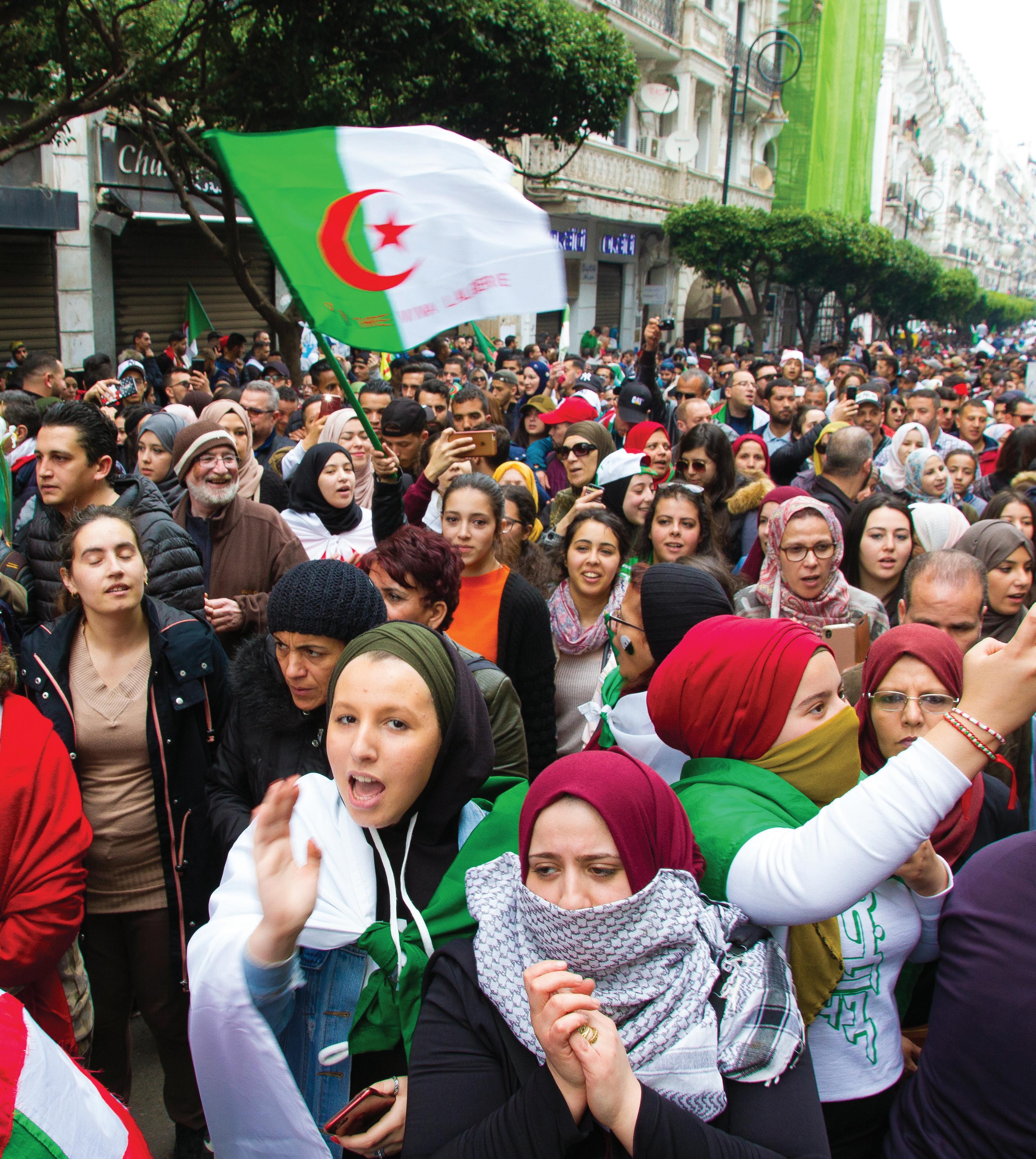
Non-participation (disengagement)
Active forms (anti-political )
Civil participation
Passive forms (apolitical) Social involvement (attention)
Individual forms Non -voting
Actively avoiding reading newspapers or watching TV when it comes to political issues
Avoid talking about politics Perceiving politics as disgusting
Political disaffection
Non -voting
Perceiving politics as uninteresting and unimportant Political passivity
Taking interest in politics and society Perceiving politics as important
Collective forms Deliberate nonpolitical lifestyles, e.g. hedonism, consumerism
In extreme cases: random acts of non - political violence (riots), reflecting frustration, alienation or social exclusion
“Non -reflected ” non - political lifestyles
Belonging to a group with societal focus Identifying with a certain ideology and/or party
Life -style related involvement: music, group identity, clothes, etc
For example: veganism, right -wing Skinhead scene, or left -wing anarcho - punk scene
REGIONAL ACADEMY LEARNING MANUAL FOR WOMEN IN POLITICAL PARTICIPATION (WPP)
PARTICIPATION (WPP) 50 51
REGIONAL ACADEMY LEARNING MANUAL FOR WOMEN IN POLITICAL
Algeria - March 08 2019 2nd Friday of protest in Algeria corresponding to the women day. The protesters demand the withdrawal of the current president Abdelaziz Bouteflika.
Civic engagement (action)
Political participation (manifest) (latent–political)
Formal political participation Activism (extra-parliamentary political participation)
Legal/ extraparliamentary protests or actions
Writing to an editor
Giving money to charity
Discussing politics and societal issues, with friends or on the Internet
Reading newspapers and watching TV when it comes to political issues
Recycling
Voting in elections and referenda
Deliberate acts of nonvoting or blank voting
Contacting political representatives or civil servants
Running for or holding public office
Donating money to political parties or organisations
Buycotting , boycotting and political consumption
Signing petitions Handing out political leaflets
Illegal protests or actions
Civil disobedience
Politically motivated Attacks on property
Objectives:
Volunteering in social work, e.g. to support women ’s shelter or to help homeless people
Charity work or faith based Community work
Activity within Community Based Organisations (CBOs)
Being a member of a political party, an organisation, or a trade union
Activity within a party, an organisation or a trade union (voluntary work or attend meetings)
Involvement in new social movements or forums
Demonstrating, participating in strikes, protests and other actions
(e.g. street festivals with a distinct political agenda)
Civil disobedience actions Sabotaging or obstructing roads and railways
Squatting buildings
Participating in violent demonstrations or animal rights actions
Violent confrontations with political opponents or the police
Time Needed Methodology Materials
At the end of this activity, the participants will know the state of democracy in Africa as a continent in a whole but also they will be given a comparative view on an international status and on their home country.
1 Hour
Group Work And Facilitator
Presentation
Flipchart and Paper, Markers, Tape
Positive developments
The expansion of democracy in Africa since 1975 is second only to Latin America and the Caribbean. Africa has experienced a remarkable democratic expansion in the last few decades, particularly since the early 1990s when many countries in Africa introduced multiparty elections.
In 1975, 41 countries were non-democracies while only 3 countries were classified as democracies. By 2018, the share of democracies had increased fivefold to 20 countries, making democracy the most common regime type in Africa (41 per cent).
 REGIONAL ACADEMY LEARNING MANUAL FOR WOMEN IN POLITICAL PARTICIPATION (WPP)
REGIONAL ACADEMY LEARNING MANUAL FOR WOMEN IN POLITICAL PARTICIPATION (WPP)
(WPP) 52 53
REGIONAL ACADEMY LEARNING MANUAL FOR WOMEN IN POLITICAL PARTICIPATION
Activity 7: State of Democracy in Africa
NAMPULA, MOZAMBIQUE - OCTOBER 6, 2014: Opposition electoral rally in Nampula with women holding campaign posters
Representative Government has been strengthened in Africa. Of the 20 countries categorized as democracies, the large majority have mid-range levels of representative government. However, only one country (Mauritius) has a high level of representative government.
Between 1975 and 2018, the gains recorded on representative government were followed by advances on Checks on Government and Fundamental Rights.
Democratic aspirations in Africa remain strong. Popular mobilizations demanding democratic change in countries with long-standing autocratic leaders have been seen recently in Ethiopia (2014–2018) and the Gambia (2016), resulting in incipient democratic reforms in the former and a democratic transition in the latter after 22 years of non democratic rule. The large prodemocracy protests that rocked Algeria and Sudan in 2019 also testify the growing demands for democracy in enduring hybrid and non-democratic regimes in Africa.
Civil Liberties are one of the best-performing aspects of democracy in Africa. In 2018, 33 per cent of countries had high levels of Civil Liberties. The high performance is concentrated in the sub-region of West Africa, followed by Southern Africa. Of the countries that score highly on this measure, 87 per cent (14) are democracies, while only 12 per cent (2) are hybrid regimes. No single non-democratic regime has high levels of Civil Liberties.
Elections have become the norm rather than the exception throughout Africa. Only four countries in the region (Eritrea, Libya, Somalia and South Sudan) hold no form of elections, scoring zero on clean elections and inclusive suffrage and, as a result, on representative government. Although Libya and South Sudan held elections in 2014 and 2010 respectively, regular elections are not held in these two countries because of protracted civil war. Countries in West Africa such as Liberia and Sierra Leone, democratic elections and stronger governments have replaced long-standing civil wars.
Of the new third-wave democracies, Tunisia has seen most democratic advances and now scores among the top 25 per cent in the world on seven of its democratic sub-attributes.

The Gambia is another new third-wave democracy that has seen significant democratic advances since its transition in 2017.
Challenges to democracy
While democracies hold the largest share of regime type in the region, a total of 11 African countries are still categorized as non-democracies, representing 22 per cent of countries in Africa.
Africa also has the largest share of hybrid regimes in the world, with more than one-third of countries (18) in this category. The latest country to regress into hybridity is Tanzania, in 2018.
Despite gains in the past decades, the conduct of elections in a number of African countries remains flawed. While the region has witnessed a rise in the number of transitions from ruling to opposition parties, many countries have failed to enact key reforms that would enhance the integrity of electoral processes. Disputed elections are a common feature of electoral processes in the region, sometimes leading to the outbreak of election-related violence.
Another set of challenges to democratic consolidation seen in many parts of Africa today relates to conflict and civil war. In several countries, earlier gains have been reversed due to violence, a return to military rule, or failure to transform the political process.
An array of challenges inhibits the implementation of regional and country-level initiatives in Africa on gender equality. To varying degrees, women in Africa lack equal access to political power and socio-economic status, and their inclusion remains a major hurdle for most countries.
Despite the expansion of democracy in the region, several countries have experienced significant declines in recent years. Such declines are discernible in countries such as Egypt which, following the Arab Uprisings, experienced further democratic declines and deepening autocratization.
Judicial Independence is one of the weakest aspects of democracy in Africa. Levels of Judicial Independence are low in almost half of the countries in the region.
Africa is the region with the highest levels of corruption as well as the highest share of democracies with high levels of corruption. High levels of corruption are highly correlated with low levels of human development. This, therefore, has detrimental effects on sustainable development in the region.
Representative Government
The Global State of Democracy Indices (GSoD Indices) use the Representative Government attribute to evaluate countries’ performance on the conduct of elections, the extent to which political parties are able to operate freely, and the extent to which access to political freedoms is possible.
REGIONAL ACADEMY LEARNING MANUAL FOR WOMEN IN POLITICAL PARTICIPATION (WPP)
(WPP) 54 55
REGIONAL ACADEMY LEARNING MANUAL FOR WOMEN IN POLITICAL PARTICIPATION
An Egyptian woman participating in a rally during the global day of support for the Egyptian revolution on January 21 2012
Regional average: Mid-range (0.45)
High (0.7>) Mauritius
Mid-range (0.4–0.7)
Angola, Benin, Botswana, Burkina Faso, Central African Republic, Côte d’Ivoire, Gabon, Gambia, Ghana, Guinea, Guinea-Bissau, Kenya, Lesotho, Liberia, Madagascar, Malawi, Mali, Morocco, Mozambique, Namibia, Niger, Nigeria, Senegal, Sierra Leone, South Africa, Tanzania, Togo, Tunisia, Zambia and Zimbabwe
Low (<0.4) Algeria, Burundi, Cameroon, Chad, Democratic Republic of the Congo, Egypt, Equatorial Guinea, Eritrea, Eswatini, Ethiopia, Libya, Mauritania, Rwanda. Somalia, South Sudan,
based on partnership and dialogue. To explain what governance is, could seem quite easy in spite of the fact that there is a lot of disagreement among social scientists about the meaning of the word. Governance has got mostly two different meanings.
First: governance is: the state of being governed.
The second meaning of the governance is the act, process, or power of governing.
This approach, on the other hand, reflects the active operations, a basic precondition of governing and a key characteristic of it.
Defining governance and Good governance
There is no single universal definition of good governance. Rather, there are several definitions applied or used by different countries, different bilateral and multilateral agencies.
Summary on Representative Government in Africa, 2018
The GSoD Indices data for 2018 shows that Representative Government has been strengthened inAfrica. According to data, 20 countries are now categorized as democracies, of which all but one (Mauritius) has mid-range levels of Representative Government. However, the depth and scope of democracy varies considerably, depending on an individual country’s performance.
Activity 8: Notion of Governance and E-governance
Activity Time Needed
At the end of this activity, the participants will know true meaning of Governance, they will also know the different uses of the term governance. They will know how to differentiate government from governance.
1 Hour
Methodology
Materials
Group Work And Facilitator Presentation
Flipchart and Paper, Markers, Tape
Some general contexts of governance
Governance has become a fashionable word today describing a whole host of approaches and techniques for improving coordination among the different levels of society. Probably the nearest synonym for governance would be; from the modern point of view; coordination,
WORLD BANK: Governance refers to the manner in which public officials and institutions acquire and exercise the authority to shape public policy and provide goods and services’.

UNDP: defines governance as “the system of values, policies and institutions by which a society manages its economic, political and social affairs through interaction and within the State, civil society and the private sector. It is the way a society organizes its self to make and implement decisions –achieving mutual understanding, agreement and action.

For the European Commission “governance concerns the State’s ability to serve the citizens. It refers to rules, processes and behavior by which interests are articulated, resources are managed and power is exercised in the society.

African Development Bank: Governance is a process referring to the manner in which power is exercised in the management of the affairs of a nation, and its relations with other nations.
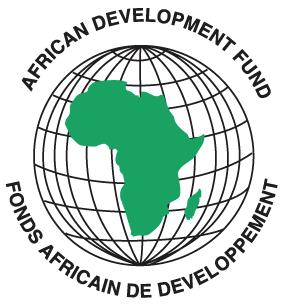
The Ibrahim Index defines governance as the delivery of key political goods: safety and security; rule of law, transparency and corruption; participation and human rights; sustainable economic opportunity; human development.
 REGIONAL ACADEMY LEARNING MANUAL FOR WOMEN IN POLITICAL PARTICIPATION (WPP)
REGIONAL ACADEMY LEARNING MANUAL FOR WOMEN IN POLITICAL PARTICIPATION (WPP)
(WPP) 56 57
REGIONAL ACADEMY LEARNING MANUAL FOR WOMEN IN POLITICAL PARTICIPATION
Good Governance according to UNDP, is about processes as well as outcomes; processes that are participatory, transparent, accountable, and efficient, and that involve the private sector and civil society as well as the state.
State Capability
The ability and authority of leaders, governments and public organisations to get things done
Good Governance
Accountability
Ability of citizens to hold leaders, governments and public organisations to account
Responsiveness
How leaders, governments and public organisations actually behave in responding to the needs and rights of citizens
Consensus Oriented, Participatory Follows the Rule of Law, Accountable
Effective & Efficient, Transparent Responsive, Equitable and Inclusive
Objectives:
Activity 9: Layers of Governance Time Needed Methodology Materials
At the end of this activity, the participants will know different layers of governance. They will also know different levels of governance.
1 Hour
Group Work And Facilitator Presentation
Flipchart and Paper, Markers, Tape
Central governance
Central governance is the governance that is a controlling power over a unitary state. Always equivalent in a federation is the federal governance, which may have distinct powers at various levels authorized or delegated to it by its federated states, though the adjective ‘central’ is sometimes also used to describe it (US federal government, 2017).
Terms such as ‘central government’ and ‘local governments’ are also commonly used in the literature on decentralization. Broadly speaking, the term ‘central government’ refers to all the units of the public administration that are hierarchically dependent on the cabinet and on the ministers in charge of the different sections of the central administration. These units may be located at the headquarters of the central government or in different parts of the territory and have different responsibilities, depending on whether they are operating at regional, provincial, district or at a lower level. In the case of federal states, the central government is normally the federal government; however, state governments have a large degree of autonomy in many matters, and operate as central governments within their territory in those matters. Normally their initiatives need no clearance from higher level authority (FAO, 2015).
Basic Structure
As outlined in the Constitution, power of the central government is separated and carried out into three branches.
The Legislative Branch, a single or two houses of parliamentarians made up of the Senate and the House of Representatives, makes laws, which apply to the entire nation. A bicameral legislature has legislators in two separate assemblies, chambers, or houses. Bicameralism is distinguished from unicameralism, in which all members deliberate and vote as a single group. As of 2015, about 40% of world’s national legislatures are bicameral, and about 60% are unicameral (IPU PALINE, 2015)
(WPP)
REGIONAL ACADEMY LEARNING MANUAL FOR WOMEN IN POLITICAL PARTICIPATION
IN POLITICAL PARTICIPATION (WPP) 58 59
REGIONAL ACADEMY LEARNING MANUAL FOR WOMEN
Structure of Parliaments (All Regions)
Bicameral Unicameral
The Executive Branch, with the President as the chief executive, carries out and enforces federal laws using a cabinet, federal departments and agencies, and regulations.
The Judicial Branch, the state’s courts, interprets the laws by hearing arguments about the meaning of laws and how they are carried out. The Supreme Court also has the power of judicial review, that is to determine if a law agrees with the Constitution or not.
Roles and responsibilities of Central Government
Central government is responsible for national policies directed to contributing to sustainable economic development and to the health and safety of people by maintaining and improving life conditions without compromising the future generations.
Actually, the central government oversees many areas which impact our daily lives. The powers originally assigned to the central government by the citizens of the State are enumerated (sometimes referred to as delegated) in the Constitution. Those powers not assigned to the central government are reserved, or left up to the states. Let’s break down some of the central government’s enumerated powers.
Finance: assesses and collect taxes; borrow money; coin (or print) money and regulate its value; and punish counterfeiters
Commerce: regulate interstate (between states) and foreign trade; establish rules for bankruptcy; establish post offices and post roads; grant patents and copyrights
National defence: declare war; raise and maintain the armed forces; call up state militia to enforce laws; suppress insurrections and repel invasions; and punish piracy
Foreign affairs: conduct diplomacy and authorize treaties with foreign countries
All laws ‘necessary and proper’: in addition to powers above, the Constitution gives parliament the power to make all laws necessary and proper. This is known as the elastic clause because it allows parliament flexibility to expand its powers as necessary to carry out its roles.
Different roles are performed by the central and local governments. Some roles are concurrent or shared, such as the power to tax. It is also important to note that the central government has national supremacy. If a conflict arises regarding the authority of the central or local government, the central government takes precedent (or wins). This is because the Constitution states that the central government is the ‘supreme law of the land.’
Decentralized Governance
Local government defined
The term ‘local government’ normally refers to units of the public administration that do not depend hierarchically on the central government administration for those public functions that they have the authority to exercise in an autonomous way. Typical examples are the district, but in some countries important degrees of autonomy are granted at regional, provincial, or municipal levels as well. Municipal governments are often created only in urban areas over a certain size, whereas decentralization of responsibilities for rural areas often stops at the district level. However, some countries, for example Bolivia, Mali and Cape Verde, transfer responsibilities for rural areas also to municipal level. Other countries, for example India, have established rural local governments at village level (panchayat).
The people responsible for a local government can be elected locally or appointed by the central government. However, the term ‘local government’ is increasingly associated with a democratic system of selection. It is important not to confuse the local units of the central administration with the local government administration. Although the two administrations operate within the same territorial boundaries, their functions generally differ. The former is accountable to the politicians responsible for the central government, the latter to the politicians responsible for the local government, and ultimately, to different constituencies of the politicians in power at the two levels.
Roles and Responsibilities of Local Government
Local authorities are multi-purpose bodies responsible for delivering a broad range of services in relation to roads; traffic; planning; housing; economic and social development; environment, recreation and amenity services; fire services and maintaining the register of electors.
Responsibilities in councils are divided into two areas:
Reserved Functions (for the elected council)
Executive Functions (for the chief executive)
Policy decisions are made by majority resolutions passed by the elected councillors during council meetings. These are reserved for the elected council and are ‘reserved functions’. Some of the reserved functions include, passing an annual budget, housing policy decisions and policies on environmental protection.
These decisions may be made at 2 levels:
Full Council (Plenary Level)
Municipal / Metropolitan / Borough district level
LEARNING MANUAL
IN
(WPP)
LEARNING MANUAL FOR WOMEN IN POLITICAL PARTICIPATION (WPP) 60 61
REGIONAL ACADEMY
FOR WOMEN
POLITICAL PARTICIPATION
REGIONAL ACADEMY
59.07% 41.03%
The municipal district members act as a decision-making sub-formation of the overall council in respect of their municipal district area.
It is the duty of the chief executive along with the directors of services and other members of the local authority management team to advise and assist the elected council while carrying out ‘executive functions’. The chief executive, assisted by a senior management team, manages a local authority on a day-to-day basis. Some of the chief executive’s responsibilities include delivering on strategic Objectives: as set out in the corporate plan, administering schemes and allocating grants. Policy areas under the responsibility of the chief executive include transport, social housing, economic development and local authority governance.
Activity 10: Conclusion
At the end of this activity, the participants will know different layers of governance. They will also know different levels of governance
1 Hour
Time Needed
Methodology Materials
Group Work And Facilitator Presentation
Flipchart and Paper, Markers, Tape
The facilitator starts by welcoming the participants to the last activity of the module 1:
Introduction to politics and Governance.
The facilitator helps the participants to take review of the module by revising each activity
It is expected that at the end of this Module, the covered content will be entirely transmitted to the participants. They will be able to distinguish the political systems, electoral systems. They will also be able to describe the political participation. They will be knowledgeable on the state of democracy in Africa. They will be equipped with the notion of governance and will also be aware of layers of governance.
At this end, it is expected that participants are able to contextualize the content of the module to their home country.
MODULE
2: International Legal Framework For Women’s Political Participation
Activities
National constitution 30 minutes
REGIONAL ACADEMY LEARNING MANUAL FOR WOMEN IN POLITICAL PARTICIPATION (WPP)
(WPP) 62 63
REGIONAL ACADEMY LEARNING MANUAL FOR WOMEN IN POLITICAL PARTICIPATION
S/N
Time 1
2
3
4
5
6
7
8
Objectives: 9
Introduction 30 minutes
UNSCR1325 1 hour
CEDAW 1 hour
Maputo Protocol 1 hour
Beijing Platform for Action (BPFA) 1 hour
SDG-5, ILO convention 190 and AU Agenda 2063 1h30 minutes.
African charter 30 minutes
Conclusion 30 minutes
Total: 7 Hours
Activity 1: Introduction
Activity 2. UNSCR 1325
Activity
After completion of this activity, the participants will be able to:
Have a full knowledge of the Module structure
Be aware of how long the Module will last and the activities
Be informed on the benefits of covering this module, and how to generate the required output
Time Needed
Methodology
Materials
Steps
30 Minutes
Facilitator Presentation
Flipchart And Paper, Markers
The facilitator will start by introducing the new Module to the participants and tell them the expected outputs.
After the introduction, the facilitator may add some remarks and guidelines that will be followed along the Module session(s). The facilitator may elaborate the list of required materials to covers the Module and more specifically for each activity if any.
The facilitator asks the participants to ask questions if any and give the answers. The facilitator explains the content of the Module and put special attention to each activity composing the Module.
The participants may ask questions where they didn’t understand well and the facilitator provides them with answers.
The facilitator reminds the participants about rule governing the timely completion of each module.
The facilitator also may ask the participants questions to see if they are prepared to carry on with the new module.
Activity
After completion of this activity, the participants will be able to:
Have a full knowledge of how UNSCR 1325 came about and know the focus of UNSCR 1325
Know the four pillars of UNSCR 1325
Time Needed
Methodology Materials
30 minutes
Facilitator presentation and group participation
Flipchart And Paper, Markers, Tape
What is UNSCR 1325?
UNSCR 1325 is the United Nations Security Council Resolution 1325.
How did UNSCR 1325 come about?
UNSCR 1325 was adopted as the result of the commitment and vision of both civil societies and the member states of the U.N. to address the policy gap of counting the role of women in peacebuilding and the long-term impact of conflict on their lives. Prior to its adoption, several major global conferences and policy frameworks were championed to advance the rights of women and girls. Beginning in 1975, the United Nations convened world conferences to elevate gender equality on the global stage. In 1995, the Fourth World Conference on Women yielded the Beijing Declaration and Platform with key Objectives: that promoted the role of women in peace-making. The Coalition on Women and International Peace and Security was formed in response and became the main lobbying force for the creation of UNSCR 1325. In 2000, the Coalition’s efforts came to fruition when Namibia held the Security Council presidency and conducted an open session on Women, Peace, and Security. During that session, the U.N. Security Council acknowledged the changing nature of warfare, in which civilians were still increasingly targeted, and women continued to be excluded from participation in peace processes, leading to the passage of U.N. Security Council Resolution 1325.
In spite of these significant actions, there continues to be a general lack of recognition in policy at the national and international level of women’s important contributions, especially regarding peacekeeping and their engagements in peace processes.
REGIONAL ACADEMY LEARNING MANUAL FOR WOMEN IN POLITICAL PARTICIPATION (WPP)
(WPP) 64 65
REGIONAL ACADEMY LEARNING
MANUAL FOR WOMEN IN POLITICAL PARTICIPATION
The focus of UNSCR 1325
Resolution 1325 addresses two critical issues—the inordinate impact of violent conflict and war on women and girls, as well as the crucial role that women should, and already do play in conflict prevention and peacebuilding. Women’s full participation and involvement is important to every aspect of achieving and sustaining peace and stability within a community. The resolution urges all actors to increase the participation of women and additionally incorporate gender perspectives in all United Nations peace and security efforts. Parties engaged in conflict must take special measures to protect women and girls from all forms of gender-based violence, especially rape and other forms of sexual violence that are particularly widespread during times of violent conflict.
The four pillars of UNSCR 1325
Each of the resolution’s mandates is related to one of the four basic pillars: Participation, Protection, Prevention, and Relief and Recovery. Each pillar is below as described by the resolution.
PILLARS OF
UNSCR 1325
Participation
Calls for increased participation of women at all levels of decisionmaking, including national, regional, and international institutions; in mechanisms for the prevention, management and resolution of conflicts; in peace negotiations; in peace operations, as soldiers, police, and civilians; and as Special Representatives of the U.N. Secretary-General.
Protection: Calls specifically for the protection of women and girls from sexual and genderbased violence, including in emergency and humanitarian situations, such as in refugee camps.
Prevention: Calls for improving intervention strategies in the prevention of violence against women, by prosecuting those responsible for violations of international law; strengthening women’s’ rights under national laws; and supporting local women’ peace initiatives and conflict resolution processes.
Relief and recovery: Calls for advancement of relief and recovery measures to address international crises through a gendered lens, by respecting the civilian and humanitarian nature of refugee camps, and considering the needs of women and girls in the design of refugee camps and settlements.
Activity
3: Convention on the Elimination of all Forms of Discrimination Against Women (CEDAW)
After completion of this activity, the participants will be able to:
Have a good understanding of the foundation of women in political participation.
Understand deeper, the relationship between women in politics participation and CEDAW and the way it gives women a platform to express their ideas.
Key Notes on CEDAW
States Parties shall take in all fields, in particular in the political, social, economic and cultural fields, all appropriate measures, including legislation, to ensure the full development and advancement of women, for the purpose of guaranteeing them the exercise and enjoyment of human rights and fundamental freedoms on a basis of equality with men.
REGIONAL ACADEMY LEARNING MANUAL FOR WOMEN IN POLITICAL PARTICIPATION (WPP)
FOR
IN POLITICAL PARTICIPATION (WPP) 66 67
REGIONAL ACADEMY LEARNING MANUAL
WOMEN
Time Needed Methodology Materials 1 hour Group discussion Marker, flipchart and paper
Activity
Activity 4: The Maputo Protocol
States Parties shall take in all fields, in particular in the political, social, economic and cultural fields, all appropriate measures, including legislation, to ensure the full development and advancement of women, for the purpose of guaranteeing them the exercise and enjoyment of human rights and fundamental freedoms on a basis of equality with men.
States Parties shall take all appropriate measures:
To modify the social and cultural patterns of conduct of men and women, with a view to achieving the elimination of prejudices and customary and all other practices which are based on the idea of the inferiority or the superiority of either of the sexes or on stereotyped roles for men and women;
To ensure that family education includes a proper understanding of maternity as a social function and the recognition of the common responsibility of men and women in the upbringing and development of their children, it being understood that the interest of the children is the primordial consideration in all cases.
States Parties shall take all appropriate measures, including legislation, to suppress all forms of traffic in women and exploitation of prostitution of women.
Activity
After completion of this activity, the participants will be able to:
Understand the position of Africa on the protection of women rights.
Understand the impact of the Maputo Protocol on empowering women.
Time Needed
Methodology
States Parties shall take all appropriate measures to eliminate discrimination against women in the political and public life of the country and, in particular, shall ensure to women, on equal terms with men, the right:
To vote in all elections and public referenda and to be eligible for election to all publicly elected bodies;
To participate in the formulation of government policy and the implementation thereof and to hold public office and perform all public functions at all levels of government;
To participate in non-governmental organisations and associations concerned with the public and political life of the country.
States Parties shall take all appropriate measures to ensure to women, on equal terms with men and without any discrimination, the opportunity to represent their Governments at the international level and to participate in the work of international organisations.
Materials
30 minutes
Facilitator presentation and group participation
Flipchart And Paper, Markers, Tape
The guiding questions may include but not limited to;
Is the Maputo Protocol being domesticated in all countries?
What is the African position on the human right of women?
What is the impact of the Maputo protocol on empowering women?
Hint
The Maputo Protocol has given rise to the adoption and promulgation of equally innovative and progressive legislation, policies and other institutional mechanisms to advance women’s human rights at a national level.
To promote the ratification and implementation of the Maputo Protocol, the African Heads of State and Government, adopted in 2004, the Solemn Declaration on Gender Equality in Africa (SDGEA), in which they committed to ratifying the Maputo Protocol to pave the way for the domestication and implementation of the Protocol alongside other national, regional and international instruments on gender equality and women’s empowerment.
ACADEMY LEARNING MANUAL FOR WOMEN IN POLITICAL PARTICIPATION (WPP)
REGIONAL
FOR WOMEN IN POLITICAL PARTICIPATION (WPP) 68 69
REGIONAL ACADEMY LEARNING MANUAL
ARTICLE 3 ARTICLE 5 ARTICLE 7 ARTICLE 6 ARTICLE 8
The Maputo Protocol
The Protocol to the African Charter on Human and People’s Rights on the Rights of Women in Africa (Maputo Protocol) remains one of the most progressive legal instruments providing a comprehensive set of human rights for African women.
Unlike any other women’s human rights instrument, it details wide-ranging and substantive human rights for women covering the entire spectrum of civil and political, economic, social and cultural as well as environmental rights.
It would not be incorrect to name it the African Bill of Rights of Women’s Human Rights.
Case studies on Maputo Protocol Implementation
Four countries in sub-Saharan Africa have been selected as case studies for the implementation of the Maputo Protocol because they occupy different phases in the nation-building process from never having been involved in a conflict (Malawi) to currently being involved in conflict (South Sudan), to emerging out of conflict (Somalia), to post-conflict recovery and in the process of developing democracy (Mozambique). All of these countries represent similarities and differences in the challenges they face in achieving peace and security for women.
Is the Maputo protocol being domesticated in African countries?
Not all African countries have domesticated all aspects of the Maputo Protocol, meaning that this continental instrument is in danger of becoming a paper tiger.
However, the protocol needs to be incorporated in domestic law first in order to be implemented at a national level. This may be irrelevant to the lived reality of women.
Constitutional and legislative framework
A country’s constitution is considered the highest law of the land and sets the tone for the legislative framework within which the state and its citizens operate. It follows, then, that:

Constitutions matter for women. The specific way in which a country’s constitution shapes each aspect of state power will either facilitate or limit the opportunities for advancing gender equality. A well-drafted constitution containing gender equality provisions opens many doors. A constitution steeped in patriarchal values keeps them locked tight (UN Women, 2012).
Tolerance or intolerance for discrimination against women in a country’s constitution will filter down into its domestic legislation, especially those laws that deal specifically with discrimination or violence against women. The Maputo Protocol recognises the importance of this constitutional and legislative framework. Article 2 calls on member states to include in their national constitutions and other legislative instruments […] the principle of equality between women and men and ensure its effective application, while Article 4 encourages member states to ‘enact and enforce laws to prohibit all forms of violence against women (ACHPR, 2003)

















Comparison: constitution, gender equality and sexual-and gender-based violence legislation and policies in four African countries
Article 13: Gender Equality
Article 24: Rights of Women
Article 30: The right to socioeconomic development
Article 68: Quota for senate
Article 26: Claw-back Clause related to culture
(Government of the Republic of malawi, 2006)
Article 1: Equality
Article 16: Rights of women (Participation in public life, Combat harmful traditional Practices)
Article 109: Quota for council Of ministers

Article 142: Quota for Independent commissions
Article 162: Quota for each Legislative and executive organ of state
Article 166: Recognises traditional authority and customary law (Government of Southern sudan, 2011)

Article 11: Gender equality
Article 15: Security of the person and prohibition of female genital mutilation
Article 27: Socio-economic rights for women
Article 111d: Quota for women in parliament
Article 127: The right to participation in defence forces
Article 40: Recognises sharia and customary law (Federal republic of somalia, 2012)

Article 11: Equality of citizens before the law
Article 122: Women’s equal right to political, economic, social and cultural development
Article 118: Recognises traditional authority and customary law (Government of the republic of mozambique, 1990)


Malawi Defence Force Act (2004)
Gender Equality Act (2013)
Marriage, Divorce & Family Relations Act (2015)
Gender Equality & Women Empowerment Programme (2012–2016)
Gender equality legislation and policies
National Gender Policy and Strategic Plan (2013)
Somali Compact (2014–2016 Family Law (2004)

National Gender Equality Policy
National action plan for the advancement o
Prevention of Domestic Violence Act (2006)
Child Care (Justice & Protection) Act (2010)
Criminal Procedure & Evidence Code (2010) Penal Code (Amendment)
Sexual- and gender-based violence legislation and policies
None Gender-based Violence Working Group Strategy (2014–2016)
Draft National Gender Policy National Action Plan on Sexual Violence in Conflict (2014)
Domestic Violence Act (2009) Penal Code (2015)

REGIONAL ACADEMY LEARNING MANUAL FOR WOMEN IN POLITICAL PARTICIPATION (WPP)
(WPP) 70 71
REGIONAL ACADEMY LEARNING MANUAL FOR WOMEN
IN POLITICAL PARTICIPATION
Malawi South Sudan Somalia Mozambique The Constitution
Africa position on Human rights of Woman
GENEVA/ADDIS ABABA (7 March 2017) – The UN Human Rights Office launched, together with the African Union and UN Women, a report on women’s rights in Africa. It is the first in a planned series about women’s human rights on the continent that will address various thematic issues.
There have been great strides in realising women’s rights in Africa - for example, female participation in African legislatures surpasses that of many developed countries. There are now provisions on sexual and gender-based violence, economic, social and cultural rights and non-discrimination in constitutions and policies across the continent.
But in every country in Africa, as around the world, women continued to be denied full enjoyment of their rights.
Among some of the report’s statistics: in six African countries, there is no legal protection for women against domestic violence. In 2013, African women and girls accounted for 62 percent of all global deaths from preventable causes related to pregnancy and childbirth. An estimated 130 million girls and women alive today have undergone female genital mutilation, mainly in Africa. If current trends continue, almost half of the world’s child brides in 2050 will be African.
In Africa, and globally, it is clear that when women are able to exercise their rights of access to education, skills, and jobs, there is a surge in prosperity, positive health outcomes, and greater freedom and well-being, not only of women but of the whole society.
In many countries, gaps in protecting women’s rights are compounded by political instability and conflict. The report stresses that women should not be seen only as victims but, for example, as active agents in formal and informal peace-building processes.
Among its recommendations, the report calls on African governments to encourage women’s full and productive employment, to recognize the importance of unpaid care and domestic work, and to ensure women can access and control their own economic and financial resources.
Maputo protocol on women empowerment
Kigali Declaration of the 3rd African Union High Level Panel on Gender Equality and Women’s Empowerment.
Also Calls on Member States to involve Ministries of Gender in all affairs affecting the lives of women and girls through strengthening their role in decision making and program implementation across government and donor-funded initiatives.

It calls upon governments to adopt a holistic approach to realizing girls’ rights to access, remain and complete their education, especially secondary and higher education levels, through meaningful collaboration among relevant ministries.
It widens the space for young girls’ engagement by implementing programmes and activities that promote the enjoyment of their rights and for civil society engagement as well as
strengthening cooperation with all stakeholders to mobilize resources and implement actionoriented programmes and activities for gender equality and women’s empowerment.
It urges Member States to develop and implement comprehensive and integrated policies to strengthen collaboration between the African Diaspora and African Civil Society Organisations (CSOs); to involve youth and fund their initiatives to advance gender equality including investing in their education and entrepreneurship through public-private partnerships; and to partner with women in maritime to create employment opportunities for young women.
Activity 5: Beijing Declaration and Platform for Action (BPFA)
Activity
After completion of this activity, the participants will be able to:
Have a good understanding of the proportion of women in single/lower houses of the national parliaments.
Know the proportion of women in the regional assemblies of member states, where appropriate. Master the Policies to promote balanced participation in political elections.
Understand the proportion and number of women and men among senior/junior ministers in the different fields of action
Understand the position of Africa on the protection of women rights.
Understand the impact of the Maputo Protocol on empowering women.
REGIONAL ACADEMY LEARNING MANUAL FOR WOMEN IN POLITICAL PARTICIPATION (WPP)
(WPP) 72 73
REGIONAL ACADEMY LEARNING MANUAL FOR WOMEN IN POLITICAL PARTICIPATION
Time Needed Methodology Materials 1 Hour
presentation and group discussion
And Paper, Marker
Facilitator
Flipchart
Despite the widespread movement towards democratization in most countries, women are largely underrepresented at most levels of government, especially in ministerial and other executive bodies, and have made little progress in attaining political power in legislative bodies or in achieving the target endorsed by the Economic and Social Council of having 30 per cent women in positions at decision-making levels by 1995.
Globally, only 10 per cent of the members of legislative bodies and a lower percentage of ministerial positions are now held by women.
The equitable distribution of power and decision-making at all levels is dependent on Governments and other actors undertaking statistical gender analysis and mainstreaming a gender perspective in policy development and the implementation of programmes. Equality in decision-making is essential to the empowerment of women. In some countries, affirmative action has led to 33.3 per cent or larger representation in local and national Governments.
All Governments, national bodies, the private sector, political parties, trade unions, employers’ organisations, research and academic institutions, Sub-regional and regional bodies and non-governmental and international organisations:

(a) Take positive action to build a critical mass of women leaders, executives and managers in strategic decision-making positions;
(b) Create or strengthen, as appropriate, mechanisms to monitor women’s access to senior levels of decision-making.
Women and poverty
When women are poor, their rights are not protected and they face double discrimination, on account of their gender and economic situation. Women, their families, communities and economies suffer as a result.
Education and Training of Women
Education is essential for women to reach gender equality and become leaders of change. While women and girls today are far more educated than ever before, gaps remain. Educated women benefit entire societies, contributing to flourishing economies and the improved health, nutrition and education of their families. Education and training are also tools to help change harmful gender stereotypes.
Women and the economy
Whether in businesses, on farms, as entrepreneurs or employees, or through unpaid domestic or care work at home, women make enormous contributions to economies. Gender discrimination means women often end up in insecure, low-wage jobs, and constitute a small minority of those in senior positions.
To ensure that women can contribute fully and benefit from the economy, UN Women runs multiple programmes for women’s economic empowerment and promotes women’s ability to secure decent jobs, own land, accumulate assets, and influence institutions and public policies determining growth and development. UN Women also works with partners to ensure that workplaces are free of violence and sexual harassment.

At Least
of the world’s women are in paid wage and salary employment, an increase from 40% in the 1990s

REGIONAL ACADEMY LEARNING MANUAL FOR WOMEN IN POLITICAL PARTICIPATION (WPP)
IN POLITICAL PARTICIPATION (WPP) 74 75 Beijing Declaration
REGIONAL ACADEMY LEARNING MANUAL FOR WOMEN
PARAGRAPH 182
192
PARAGRAPH 187 PARAGRAPH
50% 10% - 30% LESS
But women earn
WAGES
For the same work
Women in power and decision making
Once in leadership roles, women make a difference. But they are underrepresented as voters and in top positions, whether in elected office, the civil service, corporate boardrooms or academia.
UN Women advocates for reforms to ensure women’s fair access to decision-making. The UN Women programmes on leadership and participation provide training for women political candidates to help build their skills, as well as voter and civic education and sensitization campaigns on gender equality. The UN Women works with UN country teams, unions and civil society to ensure that elections uphold women’s rights, including to vote and campaign free from violence. Through the Fund for Gender Equality, the UN Women also supports women’s grass-roots groups and help give women a greater voice on a range of issues.
Objectives:
After completion of this activity, the participants will be able to:




Know the targets of SDGs’ Goal-5. Get to know why it matters
Understand the ILO Convention on the elimination of violence and harassment in the world of work Get to know why it matters Know the AU Agenda 2063
















Time Needed Methodology Materials
1 Hour 30 Minutes Facilitator presentation and group discussion
Flipchart, markers and paper
Targets
(a) End all forms of discrimination against all women and girls everywhere;







(b) Eliminate all forms of violence against all women and girls in the public and private spheres, including trafficking and sexual and other types of exploitation;
(c) Eliminate all harmful practices, such as child, early and forced marriage and female genital mutilation;










(d) Recognize and value unpaid care and domestic work through the provision of public services, infrastructure and social protection policies and the promotion of shared responsibility within the household and the family as nationally appropriate;





(e) Ensure women’s full and effective participation and equal opportunities for leadership at all levels of decision making in political, economic and public life;



LEARNING
(WPP)
REGIONAL ACADEMY
MANUAL FOR WOMEN IN POLITICAL PARTICIPATION
(WPP) 76 77
REGIONAL
ACADEMY LEARNING MANUAL FOR WOMEN IN POLITICAL PARTICIPATION
Tanzania’s President Samia Suluhu Hassan speaks during a mass vaccination campaign against the Covid-19 at the State House in Dar es Salaam, on July 28, 2021
Activity 6: Sustainable Development Goal-5, ILO 190 and AU Agenda 2063
(f) Ensure universal access to sexual and reproductive health and reproductive rights as agreed in accordance with the Programme of Action of the International Conference on Population and Development and the Beijing Platform for Action and the outcome documents of their review conferences;
(g) Undertake reforms to give women equal rights to economic resources, as well as access to ownership and control over land and other forms of property, financial services, inheritance and natural resources, in accordance with national laws;
(h) Enhance the use of enabling technology, in particular information and communications technology, to promote the empowerment of women;
(i) Adopt and strengthen sound policies and enforceable legislation for the promotion of gender equality and the empowerment of all women and girls at all levels.

ILO CONVENTION 190: CONCERNING THE ELIMINATION OF VIOLENCE AND HARASSMENT IN THE WORLD OF WORK
The General Conference of the International Labour Organisation, having been convened at Geneva by the Governing Body of the International Labour Office, and having met in its 108th (Centenary) Session on 10 June 2019, and Recalling that the Declaration of Philadelphia affirms that all human beings, irrespective of race, creed or sex, have the right to pursue both their material well-being and their spiritual development in conditions of freedom and dignity, of economic security and equal opportunity.
Definitions
Article 1 1. For the purposes of this Convention:
(a) The term “violence and harassment” in the world of work refers to a range of unacceptable behaviours and practices, or threats thereof, whether a single occurrence or repeated, that aim at, result in, or are likely to result in physical, psychological, sexual or economic harm, and includes gender-based violence and harassment;
(b) the term “gender-based violence and harassment” means violence and harassment directed at persons because of their sex or gender, or affecting persons of a particular sex or gender disproportionately, and includes sexual harassment.
 REGIONAL ACADEMY LEARNING MANUAL FOR WOMEN IN POLITICAL PARTICIPATION (WPP)
REGIONAL ACADEMY LEARNING MANUAL FOR WOMEN IN POLITICAL PARTICIPATION (WPP)
78 79
REGIONAL ACADEMY LEARNING MANUAL FOR WOMEN IN POLITICAL PARTICIPATION
(WPP)
Male employee behaving inappropriately towards female colleague - an example of sexual harassment
This convention protects workers and other persons in the world of work, including employees as defined by national law and practice, as well as persons working irrespective of their contractual status, persons in training, including interns and apprentices, workers whose employment has been terminated, volunteers, jobseekers and job applicants, and individuals exercising the authority, duties or responsibilities of an employer.
This convention applies to all sectors, whether private or public, both in the formal and informal economy, and whether in urban or rural areas.
Article 3
This convention applies to violence and harassment in the world of work occurring in the course of, linked with or arising out of work:
(a) In the workplace, including public and private spaces where they are a place of work;
(b) In places where the worker is paid, takes a rest break or a meal, or uses sanitary, washing and changing facilities;
(c) During work-related trips, travel, training, events or social activities; (e) through workrelated communications, including those enabled by information and communication technologies;
(f) In employer-provided accommodation; and when commuting to and from work.
Core principles
Article 4
Each member state that ratifies this Convention shall respect, promote and realize the right of everyone to a work environment free from violence and harassment.
Each member shall adopt, in accordance with national law and circumstances and in consultation with representative employers’ and workers’ organisations, an inclusive, integrated and gender-responsive approach for the prevention and elimination of violence and harassment in the world of work. Such an approach should take into account violence and harassment involving third parties, where applicable, and includes: prohibiting in law violence and harassment.
African Union Agenda 2063
Aspiration 6:
(a) An Africa whose development is peopledriven, relying on the potential of African people, especially its women and youth, and caring for children.
(b) Strengthening the role of Africa’s women by ensuring gender equality and parity in all spheres of life (political, economic and social).
(c) Eliminating all forms of discrimination and violence against women and girls; creating opportunities for Africa’s youth for selfrealisation, access to health, education and jobs.
(d) Ensuring safety and security for Africa’s children, as well as providing for early childhood development.
Goal 17: Full Gender Equality in All Spheres of Life Priority Areas:
• Women and girls empowerment
• Violence & discrimination against women and girls
Activity 7: African Charter on Democracy, Elections and Governance

Objectives:
Time Needed
Methodology
After completion of this activity, the participants will be able to:
• Understand the articles that point out the rights of women in African countries.
30 Minutes Facilitator presentation and group discussion
Materials
Flipchart, markers and paper
ARTICLE
State Parties shall eliminate all forms of discrimination, especially those based on political opinion, gender, ethnic, religious and racial grounds as well as any other form of intolerance.
State Parties shall adopt legislative and administrative measures to guarantee the rights of women, ethnic minorities, migrants, people with disabilities, refugees and displaced persons and other marginalized and vulnerable social groups.
REGIONAL ACADEMY LEARNING MANUAL FOR WOMEN IN POLITICAL PARTICIPATION (WPP)
(WPP) 80 81 Article
REGIONAL ACADEMY LEARNING MANUAL FOR WOMEN IN POLITICAL PARTICIPATION
2
ACCRA, GHANA – December 1, 2020: A woman votes during Ghana’s 2020 election.
8
ARTICLE 43
State Parties shall recognize the crucial role of women in the development and strengthening of democracy.
State Parties shall create the necessary conditions for full and active participation of women in the decision-making processes and structures at all levels as a fundamental element in the promotion and exercise of a democratic culture.
State Parties shall take all possible measures to encourage the full and active participation of women in the electoral process and ensure gender parity in representation at all levels, including legislatures.
State Parties shall endeavour to provide free and compulsory basic education to all, especially girls, rural inhabitants, minorities, people with disabilities and other marginalized social groups.
In addition, State Parties shall ensure the literacy of citizens above compulsory school age, particularly women and rural inhabitants.
Activity 8: Case of some African constitutions
Objectives:
Time Needed
Methodology
After completion of this activity, the participants will be able to:
• Know what African countries adopted in their constitutions especially in countries concerned by this training.
30 Minutes
Facilitator presentation and group discussion
Materials
Sample Constitutions
Flipchart, markers and paper
Botswana
The constitution of Botswana makes no provision for quotas to ensure women’s representation in publicly elected bodies on any level. The language of the constitution is masculine. For instance, Article 4(1) asserts that, “No person shall be deprived of his life intentionally save in execution of the sentence of a court in respect of an offence under the law in force in Botswana of which he has been convicted” Thus the word “he” appears in the text more than 150 times and the word “she” not once. The word “women” is utterly absent
and only once does it appear that a Batswana might be other than male, for it provides that: “every person in Botswana is entitled to the fundamental rights and freedoms of the individual, that is to say, the right, whatever his race, place of origin, political opinions, colour, creed or sex...”

Democratic Republic of Congo


Article 14
The public authorities appreciate the elimination of all forms of discrimination against women and ensure the protection and promotion of their rights. They take in all areas, and most notably in the civil, political, economic, social and cultural areas, all appropriate measures to ensure the full realisation of the potential of women and their full participation in the development of the nation.
They take measures to fight all forms of violence against women in their public and private life. Women are entitled to equitable representation in national, provincial and local institutions. The State guarantees the achievement of parity between men and women in said institutions. The law determines the conditions for the application of these rights.
Constitution of Eswatini part 1(b)
Right to representation (article
84)
Subject to the provisions of this Constitution, the people of Swaziland have a right to be heard through and represented by their own freely chosen representatives in the government of the country.

Without derogating from the generality of the foregoing subsection, the women of Swaziland and other marginalized groups have a right to equitable representation in Parliament and other public structures.
Representation of women (article
86)
Where at the first meeting of the house after any general election it appears that female members of parliament will not constitute at least thirty per centum of the total membership of parliament, then, and only then, the provisions of this section shall apply.
For the purposes of this section, the house shall form itself into an electoral college and elect not more than four women on a regional basis to the house in accordance with the provisions of section 95(3).
REGIONAL ACADEMY LEARNING MANUAL FOR WOMEN IN POLITICAL PARTICIPATION (WPP)
(WPP) 82 83
REGIONAL
ACADEMY LEARNING MANUAL FOR WOMEN IN POLITICAL PARTICIPATION
ARTICLE 29
The constitution of the Republic of Kenya

Equality and freedom from discrimination (article 27).
Women and men have the right to equal treatment, including the right to equal opportunities in political, economic, cultural and social spheres.
Membership of the Senate (article 98).
The Senate consists of:
(b) Sixteen women members who shall be nominated by political parties according to their proportion of members of the Senate elected under clause (a) in accordance with Article 90;
Promotion of representation of marginalised groups (article 100).
Parliament shall enact legislation to promote the representation in Parliament of (a) women; (b) persons with disabilities; (c) youth; (d) ethnic and other minorities; and (e) marginalised communities United Republic of Tanzania

Members of the National Assembly. Part II
Article 66.
The members of national assembly shall be composed of:
(a) Members elected to represent constituencies;
(b) Women members being not less than thirty per centum of all the members not more than ten members shall be appointed by the President and, at least five members amongst them shall be women;
Republic of Zimbabwe




Article 17. Gender balance
The State must promote full gender balance in Zimbabwean society and in Particular:
(a) The State must promote the full participation of women in all spheres of Zimbabwean society on the basis of equality with men;
(b) The State and all institutions and agencies of government at every level must take practical measures to ensure that women have access to resources, including land, on the basis of equality with men;
(c) The State must take positive measures to rectify gender discrimination and imbalances resulting from past practices and policies;
(d) The State must take all measures, including legislative measures, needed to ensure that:
(i) Both genders are equally represented in all institutions and agencies of government at every level; and
(ii) Women constitute at least half the membership of all Commissions and other elective and appointed governmental bodies established by or under this Constitution or any Act of Parliament.
Activity 9: Conclusion
Objectives:
After this activity, the participants will be able to:
Be able to elaborate all the content of the Module and contextualize it to their home countries. Know the different legal instruments available for women’s rights
Time Needed Methodology Materials
30 Minutes
Facilitator presentation and group discussion
Flipchart, markers and paper
Steps
The facilitator may start by reminding the participants the content and activities covered under the Module.
The participant will be asked to elaborate what they acquired from the beginning of the Module.
The facilitator may ask the participant to contextualize the content of the Module to their home country and give the implication of UNSCR 1325, CEDAW, the Maputo protocol and BPFA in their country.
The facilitator tries to make sure that the content of the Module is retained and contextualized to the participants’ home country.
At this juncture, the facilitator may prepare an assessment questionnaire to make sure that the participants gained enough knowledge of the international legal framework about women’s political participation.
REGIONAL ACADEMY LEARNING MANUAL FOR WOMEN IN POLITICAL PARTICIPATION (WPP)
(WPP) 84 85
REGIONAL ACADEMY LEARNING MANUAL FOR WOMEN IN POLITICAL PARTICIPATION
The facilitator will start by introducing the new Module to the participants.
After the introduction, the facilitator may add some remarks and guidelines that will be followed throughout the course of the Module session(s). The facilitator may elaborate the list of required materials to cover the Module and more specifically for each activity if any.
The facilitator asks the participants to list questions if they have any and gives the answers. The facilitator explains the content inthe Module and places special emphasis on each activity composing the Module.

The participants may ask questions where they didn’t properly understand and the facilitator should be able to provide them with answers.
The facilitator also may ask the participants questions to see if they are prepared to carry on with the new Module.
Understand how to bring women into politics
Understand the best way of bringing women into politics.
REGIONAL ACADEMY LEARNING MANUAL FOR WOMEN IN POLITICAL PARTICIPATION (WPP) REGIONAL ACADEMY LEARNING MANUAL FOR WOMEN IN POLITICAL PARTICIPATION (WPP) 86 87 MODULE 3:
S/N Activities Time 1 Introduction 30
2 Women in politics 1 hour 3 Women’s personal development and self-confidence building
hour 4 Role of women in Politics 1 hour 5 How to engage women and young girls in politics 1 hour 6 Political recruitment 1 hour 7 Political mentorship 1 hour 8 State of WPP in Africa 1 hour 9 Case studies of WPP (Successful stories) 1 hour 10 Conclusion 30
Politics and Women Engagement Module Overview
minutes
1
minutes Total: 9hours Time Needed Methodology Materials 30 Minutes Facilitator presentation and individual work Flipchart, markers and paper After the completion of this activity, the participants will: After the completion of this activity, the participants will: Objectives: Objectives: Activity 1: Introductory Activity to Module 3 Activity 2: Women in politics Steps
Have full knowledge of the module content Be aware of how long the module will last and the activities Be informed on the good practices to make this module covered and generate the output
Time Needed
Methodology Materials
How to Bring Women in Politics?
Using
1 Hour
Facilitator presentation and individual work
Flipchart, markers and paper
policies
(a) Demand women’s inclusion in transitional institutions, especially constitution-drafting bodies;
(b) Support constitutional provisions, such as parliamentary quotas, that guarantees women’s;
(c) Participation in all branches and at all levels of government;
(d) Establish election mechanisms that advance women’s representation, including quotas for;
(e) Political parties, indirect elections, and proportional representation systems with closed (“zippered”) lists, which alternate the names of male and female candidates;
(f) Support electoral systems that require voters to select male and female candidates;
(g) Encourage political parties to move female candidates to the top of election lists and into leadership positions;
(h) Encourage heads of state and government to exercise gender parity in executive appointments;
(i) Create local political structures as entry points for women aspiring to government service;
(j) Advocate for and support ministries of women’s affairs and gender focal points in other ministries to advance gender mainstreaming;
(k) Include indicators on women’s political participation in national development plans and poverty reduction strategies;
(l) Require trainers and capacity builders to track the percentage of male and female participants in programs;
Through programs
(a) Fund urban and rural campaigns that publicize women’s contributions and ability to lead;
(b) Establish mentoring programs through which successful female politicians encourage;
(c) Others to run for office;
(d) Offer practical support to female candidates and government officials, such as transportation, childcare, extra security when needed, and access to mass media;
(e) Cultivate non-partisan women’s legislative caucuses and support them technically and financially;
(f) Provide financial and technical backing for civil society consultations on legislative initiatives;
(g) Increase women leaders’ effectiveness in government through training and training of trainers for women’s organisations on legislative processes, coalition building, advocacy, and public speaking; involve men in training to strengthen their support for women’s participation.
Activity 3: Women’s personal development and self-confidence building
By the end of the activity, participants will be able to: Objectives:
Understand the importance of the personal development process for women
Link personal values to their daily lives in line with their personal development
Personality Development for women
REGIONAL ACADEMY LEARNING MANUAL FOR WOMEN IN POLITICAL PARTICIPATION (WPP)
88 89
REGIONAL ACADEMY LEARNING MANUAL FOR WOMEN IN POLITICAL PARTICIPATION
(WPP)
Time Needed Methodology Materials 1 Hour Facilitator presentation and individual work Flipchart, markers and paper
Be Confident Dress Well Make positive self affirmations Communicate effectively Forget about past
Positive thinking Good listening skills See yourself as a success
mistakes
Positive thinking
The power of positive thinking is remarkable.
In fact, the idea that your mind can change your world almost seems too good to be true.
I can assure you, however, that I have experienced AND witnessed the good that focusing on the positive can bring.
But before I get into that, let me ask you a question. Can you guess what the most successful and happy people think about all day long?
The answer is quite simple…
Healthy, happy people think about what they want, and how to get it, most of the time. In this way developing a positive attitude can truly change your entire life.
How To Think Positive
Based on many psychological tests, happy people seem to have a special quality that enables them to live a better life than the average.
Can you guess what it is?
It’s the quality of optimism!
The best news about optimism is that it is a learnable quality. That means you can learn how to think positively by adopting an optimistic mindset.


By the law of cause and effect, if you do and say what happy people with positive attitudes do and say, you will soon feel the same way, get the same results, and enjoy the same experiences that they do.
Happy People Find Good in The World
Optimists seem to have different ways of dealing with the world that set them apart from the average person.
First, they keep their minds on what they want, and keep looking for ways to get it. They are clear about goals and they are confident that they will accomplish them, sooner or later.
Second, optimists look for the good in every problem or difficulty. When things go wrong, as they often do, they say, “That’s good!” And then set about finding something positive about the situation.
What we know is that, if you are looking for something good or beneficial in a person or situation, you will always find it. And while you are looking, you will become a more positive and cheerful person.
See yourself as success
Visualization Techniques to Affirm Your Desired Outcomes: A Step-by-Step Guide
Using visualization techniques to focus on your goals and desires yields four very important benefits.
1.) It activates your creative subconscious which will start generating creative ideas to achieve your goal.
REGIONAL ACADEMY LEARNING MANUAL FOR WOMEN IN POLITICAL PARTICIPATION (WPP)
(WPP) 90 91
REGIONAL ACADEMY LEARNING MANUAL FOR WOMEN IN POLITICAL PARTICIPATION
2.) It programs your brain to more readily perceive and recognize the resources you will need to achieve your dreams.
3.) It activates the law of attraction, thereby drawing into your life the people, resources, and circumstances you will need to achieve your goals.
4.) It builds your internal motivation to take the necessary actions to achieve your dreams.
Visualization is really quite simple. You sit in a comfortable position, close your eyes and imagine in as vivid detail as you can what you would be looking at if the dream you have were already realized. Imagine being inside of yourself, looking out through your eyes at the ideal result.
Go through the following three steps:
STEP 1. Imagine sitting in a movie theatre, the lights dim, and then the movie starts. It is a movie of you doing perfectly whatever it is that you want to do better. See as much detail as you can create, including your clothing, the expression on your face, small body movements, the environment and any other people that might be around. Add in any sounds you would be hearing traffic, music, other people talking, cheering. And finally, recreate in your body any feelings you think you would be experiencing as you engage in this activity.
STEP 2. Get out of your chair, walk up to the screen, open a door in the screen and enter into the movie. Now experience the whole thing again from inside of yourself, looking out through your eyes. This is called an “embodied image” rather than a “distant image.” It will deepen the impact of the experience. Again, see everything in vivid detail, hear the sounds you would hear, and feel the feelings you would feel.
STEP 3. Finally, walk back out of the screen that is still showing the picture of you performing perfectly, return to your seat in the theatre, reach out and grab the screen and shrink it down to the size of a cracker. Then, bring this miniature screen up to your mouth, chew it up and swallow it. Imagine that each tiny piece just like a hologram contains the full picture of you performing well. Imagine all these little screens traveling down into your stomach and out through the bloodstream into every cell of your body. Then imagine that every cell of your body is lit up with a movie of you performing perfectly. It’s like one of those appliance store windows where 50 televisions are all tuned to the same channel.
When you have finished this process it should take less than five minutes you can open your eyes and go about your business. If you make this part of your daily routine, you will be amazed at how much improvement you will see in your life.
Forget your past mistakes
What are the tips to forget past mistakes?
Accept that the past is the past
Whatever happened in your life, there is absolutely nothing you can do to change it. Accepting the fact that there is nothing you can do about something is not always easy because it makes you feel powerless, and let’s admit it, no one likes feeling powerless.
Reciprocate the efforts
Subsequently, be there for those who are there for you. This is a great step in building new and meaningful relationships to help focus on the present. Perhaps they’re anchored down, too.
Stop Basing Everything on Your Experience
No matter how experienced and knowledgeable you may be in whatever situation, all situations are different, even if only slightly. Sure, you can learn from the past, but it is highly unlikely that anything is going to happen in the exact same way twice.
If you are regretting because you made some wrong decision that’s not your mistake, that’s called experience that not only comes from making right decision but a combination of both. You should focus on things that lie ahead, shape your future it’s up to you how you make it.
Set goals for yourself
One of the most important ways you can forget about the negative things that had happened in the past is by setting goals for your future. When negative things occur, you need to acknowledge the fact that it is not the end of the world and you have full potential of achieving greater things in life.

Express your pain and your responsibility.
Express the pain the hurt made you feel. Doing so will also help you understand what specifically your hurt is about.
REGIONAL ACADEMY LEARNING MANUAL FOR WOMEN IN POLITICAL PARTICIPATION (WPP)
(WPP) 92 93
REGIONAL ACADEMY LEARNING MANUAL FOR WOMEN IN POLITICAL
PARTICIPATION
Let go of the past
Let go of the past, and stop reliving it. Stop telling yourself that story where the protagonist i.e. you are forever the victim of this other person’s horrible actions. You can’t undo the past, all you can do is to make today the best day of your life.
And finally
Forgive them and yourself.
We may not have to forget another person’s bad behaviours, but virtually everybody deserves our forgiveness. Sometimes we get stuck in our pain and our stubbornness, we can’t even imagine forgiveness. Forgiveness isn’t a sign of weakness. Forgiveness is a way of tangibly letting something go. It’s also a way of empathizing with the other person, and trying to see things from their point of view.
Be confident
11 Things You Can Do to Boost Self-Confidence

Overcome your limiting beliefs
Determine what matters to you
Assess your top human need
Improve your self-talk
Practice gratitude
Change your physiology
Practice power poses
Think of past successes
Use goal visualization
Make eye contact 11. Live in the present
Dress well
The clothes you wear and the way you groom yourself will change the way other people hear what you say. It will subconsciously tell them if you’re like them or if you’re different. It will determine whether they listen or ignore; Trust or distrust.
Make Positive self-affirmations
Start with the words “I am.” These are the two most powerful words in the English language.
Use the present tense. State it in the positive. ... Keep it brief. Make it specific. Include an action word ending with –ing.
Include at least one dynamic emotion or feeling word. Make affirmations for yourself, not others.
Examples of Daily Affirmations
Here’s an example of an affirmation following these guidelines:
“I am enough- I will not conform or lesser my standards to appease or appeal to anyone who does not accept me for who I am and what I am.”
Or if you are more ecologically minded, you can make that a new Tesla.
You can use the following simple formula: “I am so happy and grateful that I am now …” and then fill in the blank.
REGIONAL ACADEMY LEARNING MANUAL FOR WOMEN IN POLITICAL PARTICIPATION (WPP)
(WPP) 94 95
REGIONAL ACADEMY LEARNING MANUAL FOR WOMEN IN POLITICAL PARTICIPATION
1.
2.
3.
4.
5.
6.
7.
8.
9.
10.
94
Activity 4: Role of women in politics
Objectives:
By the end of the activity, participants will be able to:
Elaborate the role of women in politics
Time Needed
Methodology Materials
1 Hour
Facilitator presentation and individual work Flipchart, markers and paper
Steps
Welcoming participants to activity 3: The role of women in politics and review some of the key points covered during the introduction to the training (goals, training rules, group roles...).
Review the Objectives: of activity 3 with the participants. Explain that in this module, they are going to identify what we mean by “The role of women in Politics”. This activity will focus on identifying one’s experience and level of understanding concerning “The role of women in Politics”
Have participants think about the meaning of “The role of Women in Politics” and reflect in groups on how to link “these with their living experience.
Explain to participants what the “roles of women in Politics” are as stated in the Handout.
The role of women in politics.
For women and women’s rights
1. Improved public opinion of women’s abilities. Women are increasingly viewed as talented and trusted public leaders.
2. Greater attention to domestic violence. Female councillors are educating the public about domestic violence laws, essential in post-conflict environments, where domestic abuse tends to worsen.
3. Party support of female candidates expanded. The CPWP secured verbal commitments from political parties to include quotas for women on party lists.
For the nation as a whole
1. Cross-party communication is advanced. Participating in capacity-building programs and the caucus helps forge cross-party alliances among female politicians.
2. Cooperation between government and civil society increased. Through programs like WfP and partnerships like CPWP, women are fostering dialogue among sectors of society and bringing a grassroots perspective to policymaking.
3. Government is more accountable. Female leaders in local government push for budget transparency and oversight, challenging traditional local patronage systems that breed corruption.
4. Policy priorities are more closely aligned with community needs. USAID cites a survey revealing that Cambodian women are more knowledgeable than their male counterparts when it came to Community development priorities.
Activity 5: How to engage women and young girls in politics
By the end of the activity, participants will be able to: Objectives:
Know the best ways of getting women and young girls engaged in politics.
Time Needed Methodology
Materials
Guiding questions
1 Hour
Large group discussion and facilitator presentation
Flipchart, markers and paper
a) What are the individual, institutional, and socio-cultural barriers for women?
b) What are individual, institutional, and socio-cultural barriers for young women, specifically?
c) How do different political systems affect women’s political participation?
d) What is the role of civic education in young women’s political participation?
How to engage women and young girls in politics:
1. Promote women within political parties. The other political parties could commit publicly to the promotion of women within party lists.
REGIONAL ACADEMY LEARNING MANUAL FOR WOMEN IN POLITICAL PARTICIPATION (WPP)
PARTICIPATION (WPP) 96 97
REGIONAL ACADEMY LEARNING MANUAL FOR WOMEN IN POLITICAL
2. Fund and support women at the national level. Women’s gains in political leadership are being made largely at local levels. Programs could advocate for and support women politicians specifically at the national level.

3. Institute quotas. Cambodian political parties are cultivating a talented supply of female candidates; a national quota system could encourage political parties to put this knowledge and expertise to work.
4. Ensure higher education for women. The gender gap in government service is related to the gender gap in education, as senior government positions demand higher levels of education. Providing higher education programs to women could decrease the gender gap in government service.
5. Provide education. Providing higher education programs to women could, therefore, decrease the gender gap in government service.
Sustainable Development Goal #5
The Sustainable Development Goal #5 (SDG 5) calls for gender equality and full empowerment of women and girls by 2030. One of its targets is the political empowerment of women. Facts show that whereas political representation continues to increase in Africa, equal representation is not achieved in most African countries. When women overcome hurdles and gain political seats, they hardly lead the most important political positions.
Most striking, they get little influence and decision-making power in legislation and budgets allocation. Countries would benefit enormously from increasing the influence and decisionmaking power of female politicians. Giving more influence to female policy makers would help many African countries become more egalitarian and fair toward women and girls. Increased women’s political representation may help in the success of the SDGs, but only when representation comes with actual influence and leadership.
What is the issue?
An estimated one in five women live with a disability. Historically, their equal participation and inclusion in society has been hindered by systemic marginalisation and structural barriers, which often lead to less access to: education, healthcare (including sexual & reproductive health), information, public services, justice as well as less participation in civic and political processes and decision making.
Women still represent a minority of decision-makers worldwide, and there is no official data on the representation of women with disabilities on decision-making.

Recognizing that women’s equal political participation and representation is key to achieving sustainable development, most countries in the world have agreed to reach ‘gender balance’ in decision making, including the 1995 Beijing Platform for action. Yet today, only 24% of the worlds parliamentarians are women. Only 6% are heads of state and 5% of heads of governments are women. In short, women’s voices are missing.
More than 10 years after the adoption of the Convention on the Rights of Persons with Disabilities, significant gaps continue between commitments and action to achieve gender equality and the empowerment of women and girls with disabilities. Nonetheless, some women with disabilities are playing a prominent role in the public sphere, demonstrating their capacity and transformative role in political leadership.
REGIONAL ACADEMY LEARNING MANUAL FOR WOMEN IN POLITICAL PARTICIPATION (WPP)
(WPP) 98 99
REGIONAL ACADEMY LEARNING MANUAL FOR WOMEN IN POLITICAL PARTICIPATION
Leadership and political participation of women with disabilities.
Actions
UN Women’s programmes on leadership and political participation are guided by commitments to women’s representation, including the Convention on the Elimination of All Forms of Discrimination against Women (CEDAW) , which upholds women’s right to participate in public life, the Beijing Platform for Action which calls for removing all barriers to equal participation, and the Sustainable Development Goals which measure progress towards gender equality in part by the share of women in national parliaments and local government.
In coordination with national and UN partners, UN Women has supported the promotion of inclusive electoral processes and the political participation of women with disabilities. This support includes:
- Technical assistance to electoral stakeholders on promoting inclusive electoral arrangements and facilitating the participation of persons with disabilities (i.e: accessible voting procedure, facilities and materials);
- Capacity building, targeting electoral officials and aspiring women candidates with disabilities;
- Promiting civic and voter education encouraging general awareness on the political rights of persons with disabilities;
- Capacity building and sensitization of security forces to ensure that the needs of persons with disabilities, especially those of women, are considered when promoting a safe and conducive environment for people to exercise their political rights.
Activity 6: Political aspirant recruitment
By the end of the activity, participants will be able to:
Objectives:
Know the best ways of getting women and young girls engaged in politics.
Time Needed
Methodology
Material
1 Hour
Group discussion and facilitator presentation
Flipchart, markers and paper
What strategies work?
This is focused on the actions that women in political parties can take individually and collectively to increase women’s substantive participation and gender equality in political parties.
To do so effectively, aspiring women politicians should focus on:
(a) Planning their political careers and promoting themselves through the ranks of politics; Building partnerships with other women and acting collectively on issues of mutual concern; and
(b) institutionalizing gender equality in political party policies, processes and practices, as well as engaging men as partners and gender advocates.
Activity 7: Political mentorship
Objectives:
By the end of the activity, participants will be able to:
Know what political mentorship is. Know the role and purpose of mentorship.
Time Needed
Methodology
Material
s s
What is political mentorship?
1 Hour
Group discussion and facilitator presentation
Flipchart, markers and paper
Political mentorship differs from traditional mentorship in that it is accomplished without the close personal contact that accompanies more traditional mentorship.
REGIONAL ACADEMY LEARNING MANUAL FOR WOMEN IN POLITICAL PARTICIPATION (WPP)
IN
PARTICIPATION (WPP) 100 101
REGIONAL ACADEMY LEARNING MANUAL FOR WOMEN
POLITICAL
However, political mentorship accomplishes the same goal: it allows the follower to move from political adolescence to political adulthood.
Political adulthood is defined not as a function of age but rather an achievement of political maturity-that is the individual strength to resist societal coercion on issues involving a universal moral-ethical principle.
The purpose of mentorship
A mentor may share with a mentee (or protégé) information about his or her own career path, as well as provide guidance, motivation, emotional support, and role modelling.
The mentor may help a mentee with exploring careers, setting goals, developing contacts, and identifying resources.
Three key roles of a mentor
1. Role 1: Consultant. This is the most obvious role for a mentor to play.
2. Role 2: Counsellor. Listen.
3. Role 3: Cheerleader.
Key Note
In the private sector, mentorship programs have been proven successful in creating a new generation of leaders. The public sector learnt from these successes and copied them by organizing its own mentorship programs. Consequently, some parliaments followed suit by providing mentorship programs for incoming MPs or programs that allow people to shadow an MP in their daily functions to better understand the work of the Parliament and of that particular MP and their constituency.
Given the complexity of Parliament, candidates and first time Parliamentarians are keen to get advice from those who have previous experience with particular issues. Mentorship programs have been organized at national and regional levels. At the national level, parliaments are exploring new ways of guiding young MPs through the complex structures of Parliament. At the regional level, Parliaments are providing mentorship projects, which go beyond the traditional study trip tours, through online networks and intensive collaboration between parliamentarians.
Activity 8: State of WPP in Africa
By the end of the activity, participants will be able to: Objectives: Understand the state of WPP in Africa. Have tips on how to increase WPP in Africa
Time Needed Methodology Materials
1
Hour
Group discussion and facilitator
Flipchart, markers and paper
presentation
Steps
Welcome participants to Activity 7: the State of WPP in Africa and review some of the key points covered during the previous activities;
Review the Objectives: of Activity 7 with the participants. Explain that in this module they are going to identify what is important to them and how they can use it to grow and move ahead. This activity will focus on the State of WPP in Africa.
Have participants think about the State of WPP in Africa and give one example of their own, pair with another and share their work;
Share with participants the personal development for women task referring to the handout and make the participants think about their home country.
The state of WPP in Africa
Women have always been involved in political organisations, as well as in the trade union movement and other civil society organisations. In recent decades women’s political representation has significantly increased in Africa. From 2000-18, the proportion of women parliamentarians almost doubled, and women’s representation in the cabinet increased fivefold to 22 per cent between 1980 and 2015. Women parliamentarians rose from 40 per cent in 2014 to 46 per cent in 2019. Rwanda, Namibia and South Africa are ranked in the top 20 countries that have worked hard at reducing the gender gap (World Economic, 2020). Unfortunately, the numbers do not necessarily imply influence. Women’s political representation in Africa is more descriptive than substantive.
Women represent almost half of the population in Africa, and yet they are the least likely to hold political positions and exercise authority across the continent. Often, female politicians in Africa overcome many barriers and constraints to access political positions. But once there, many of them have little decision-making power or are excluded from important government decisions on legislation, policies and budget allocation.
REGIONAL ACADEMY LEARNING MANUAL FOR WOMEN IN POLITICAL PARTICIPATION (WPP)
(WPP) 102 103
REGIONAL ACADEMY LEARNING MANUAL FOR WOMEN IN POLITICAL PARTICIPATION
Numerous declarations have addressed the need to advance women’s rights and status in Africa. In August 2007, for example, the Southern African Development Community (SADC) Declaration on Gender and Development reaffirmed a minimum goal of 50 per cent women’s representation in parliament. Despite ongoing public support for these sorts of measures, however, the status of women, particularly in areas of politics and governance, has seen only nominal improvement. In Botswana and Lesotho, women represent only 11.1 and 25 per cent of parliamentarians respectively, which places them toward the bottom rankings for SADC countries. This problem exists primarily because political parties, which play a central role in identifying and training political leaders, do not see the value in women assuming party leadership positions or running for elected office (National Democratic Institute, 2020).
Activity 9: Case studies of WPP (Successful stories)
Case of Rwanda

The 1994 mass extermination of more than 1,000,000 Tutsis and moderate Hutus was horrific for both the victims that lost their lives, as well as those who survived that, have had to live with the legacy of trauma. The majority of survivors were women who had suffered extreme physical and emotional hardship. From 1994 to 2003, the Rwandan Patriotic Front’s transitional government directed a reform process to decentralize authority and broaden participation in government. Women’s political engagement became a principal part of the government’s agenda.

In 2003, the first parliamentary election after the genocide gave women 49 per cent of the seats in the lower house of parliament, making Rwanda the world leader in women’s political participation. The international community and civil society responded with programmatic support that further helped women’s participation in government be more effective. In 2008, women were elected to 56 per cent of seats in the lower house of parliament, making Rwanda the the first and only country in the world to have a majority of women in its parliament. Today, Rwanda is still in the lead with women holding 62 per cent of the seats.
Mechanisms for promoting women’s inclusion. Through government policies and programs.
1. Constitution drafting: Women were instrumental in developing Rwanda’s constitution, as civil society advocates and as members of the Constitutional Commission-the body responsible for drafting the constitution.
2. Constitutional provisions: The 2003 constitution mandates that 30 per cent of all posts in decision-making organs be reserved for women. Of the 80 seats in the lower house of the legislature, 24 are set aside. The constitutional directive also has been used to seek 30 per cent women’s representation in the judiciary, the executive branch, and on political party lists.
3. Triple balloting: At the local level, women are guaranteed a percentage of seats via a triple ballot on which voters choose one general candidate, one female candidate, and one youth candidate.
REGIONAL ACADEMY LEARNING MANUAL FOR WOMEN IN POLITICAL PARTICIPATION (WPP)
(WPP) 104 105
REGIONAL ACADEMY LEARNING MANUAL FOR WOMEN IN POLITICAL PARTICIPATION
Time Needed Methodology Materials 1 Hour Group discussion and facilitator presentation Flipchart, markers and paper By the end of the activity, participants will be able to: Objectives: Understand that the WPP is possible through success stories. Have tips on how countries can increase WPP
A picture of downtown Kigali, Rwandas capital city. ()
Tourists visiting the National Memorial to the victims of Genocide in Kigali, Rwanda ()
A subsequent indirect election results in a district council chosen from among sector-level winners. Such a process guarantees women 30 per cent representation.
4. Women’s Councils: These assemblies are elected by women. They feed into the local government through reserved seats for local council leaders, which ensures that there is an official link between these women’s concerns and local government.
5. Ministry of Gender and the Promotion of Women: The Ministry works with gender focal points within other ministries to monitor women’s issues. The Ministry also pursues women’s political empowerment through sensitization campaigns with all levels of government staff and the general public.
Case of South Africa
Aerial view of Cape Town, South Africa ()

South Africa continues to lead the way in women’s political participation in the region with 46 per cent of women in the House of Assembly and provincial legislatures and 50 per cent of women in the cabinet after the May 2019 elections. All the speakers in the national and provincial legislatures are women except for the Western Cape Province whose speaker is a man. Women parliamentarians rose from 40 per cent in 2014 to 46 per cent in 2019.
South Africa is writing a new page in its history thanks to the entry of Nkosazana DlaminiZuma (she was elected in 2012 president of the African Union Commission becoming the first woman to lead this organisation, and currently serves as Minister of Planning, Monitoring, and Evaluation in South Africa’s Government) and other women, such as Lindiwe Nonceba Sisulu (minister of International Relations and Cooperation until 2019) into the political competition.
As a result women have continued to be involved in political organisations, as well as in the trade union movement and other civil society organisations. Although evolving in a patriarchal straitjacket due to the social role women had been assigned in the past, women no longer have to wait for “the authorization of men” to claim their rights.
This feminine tradition of political engagement in South Africa has resulted in the writing of a protective Constitution for women in a post-apartheid multiracial and supposedly non-sexist context.
Activity 10: Conclusion
By the end of the activity, participants will be able to: Objectives: Review and master the content of the module. Have summed up the content of the module and link each to the other.
To sum up, even if African countries such as Rwanda and South Africa have more women representation and are doing well by passing laws and measures, due to various cultural reasons such as a more ingrained patriarchal society, community interventions, family pressure, as well as the stigma surrounding single mothers, gender equality is more difficult in Africa. Women in Africa typically depend heavily on their husbands and as a result, they very often suffer in silence and in some instances, are sometimes left alone without financial support.
REGIONAL ACADEMY LEARNING MANUAL FOR WOMEN IN POLITICAL PARTICIPATION (WPP)
(WPP) 106 107
REGIONAL ACADEMY LEARNING MANUAL FOR WOMEN IN POLITICAL PARTICIPATION
Time Needed Methodology Materials 30 Minutes Group discussion and facilitator presentation Flipchart, markers
and paper
•
•
•
•
•
Steps
Welcome participants to Module 4: Women in elections and quickly review some of the key points covered during Module 3: Politics and Women engagement.
In doing so, you will be helping participants to link this with the previous Module, by indicating the key roles to be performed by women in the elections.
Have participants turn to the first page of Module 4 in their Handbooks and review the Objectives: of the Module with them. Ask them what they think is the relevance between the present reality and the Module. How does it relate to real life?
Explain that during this Module they are going to learn about women in elections. Stress that women are potential leaders in some way or another, either elected or not. Voters or candidates can be women, men, people with disabilities, youth, people who are HIV positive, people who are not wealthy; virtually everyone has the potential to be a candidate.
REGIONAL ACADEMY LEARNING MANUAL FOR WOMEN IN POLITICAL PARTICIPATION (WPP) REGIONAL ACADEMY LEARNING MANUAL FOR WOMEN IN POLITICAL PARTICIPATION (WPP) 108 109 MODULE 4:
Women In Elections
Elections
the completion of this module, the participant will have skills on:
Objectives of Women in
Module After
Political positioning
Constituency building
Manifesto building
Campaign funding / fundraising
Campaign case study Module Overview S/N Activity Time 1 Introduction 30 minutes 2 Political positioning 1 hour 3 Constituency building 1 hour 4 Manifesto building 1 hour 5 Campaign Funding 1 hour 6 Campaign 1 hour 7 Case study 1 hour 8 Conclusion 30 minutesutes Total: 7hours Time Needed
30
Group Discussion & Large Group Activity
markers, tape, chalk or rope
Activity
Methodology Materials
Minutes Large
Flipchart paper,
By the end of the activity, participants will be able to: Objectives: Obtain a sense of the activities that will be covered in theModule Identify the Modules covered in the session(s). Work well as a team Activity 1: Introductory
Activity 2: Political Positioning
Activity 3: Constituency building
By the end of the activity, participants will be able to:
Objectives: Understand what political positioning is Understand the purpose of Political Positioning
Time Needed
Methodology
Materials
1 Hour
Large Group Discussion & Facilitator Presentation
Flipchart paper, markers, tape, chalk or rope
What is political positioning
Political positioning is the deployment of a person’s political tools; such as its political reputation, government relations and public affairs professionals, political capital, campaign financing, and political clout; to put the person in the most advantageous place and at the most advantageous time so that the most advantageous public policy solutions can be achieved. It is about seeking and securing a competitive political advantage over a politician and her or his peers opposition (Healy, 2016).
The purpose of political positioning
Positioning in political marketing and management is broadly defined as a set of approaches aimed at ensuring efficient transactions for such purposes as:
(a) Creating attractive products for the targeted audience;
(b) improving competitiveness;
(c) learning and establishing political offers;
(d) promoting political products;
(e) making politically-motivated decisions
(Nedyak, 2008).
Certain requirements must be fulfilled to position candidates successfully. For instance, the candidate must have a credible political image.
By the end of the activity, participants will be able to:
Objectives: Understand the definition of constituency building Know the role of constituency building in promoting gender equality
Time Needed
Methodology Materials
What is constituency building?
1 Hour
Pair work, demonstration, large group discussion
Flipchart paper, markers & tape
Constituency building should be viewed as a means of influencing public opinion and motivating people to take collective action to achieve a desired social or policy change, which in this case, is gender equality.
Constituency building is about building a support base for progress towards gender equality. It involves resourcing for social advocacy on gender equality and intensive efforts towards creating partnerships and alliance building.
REGIONAL ACADEMY LEARNING MANUAL FOR WOMEN IN POLITICAL PARTICIPATION (WPP)
(WPP) 110 111
REGIONAL ACADEMY LEARNING MANUAL FOR WOMEN IN POLITICAL PARTICIPATION
The role of constituency building in advancing gender equality
Since the First World Conference on Women in 1975 called for the establishment of national machineries for the advancement of women, governments have made efforts to integrate gender considerations by elaborating national gender plans, mainstreaming gender into processes related to planning, the elaboration of national development strategies, national security plans, as well as environmental policies. However, these efforts will not yield results if there is a lack of constituency building among and with non-government actors.
Since then, many methods have been crafted as a way of achieving gender equality by the civil society, governments and the private sector. Continuous review of these processes always leads back to the need for constituency building as a means of achieving gender equality.
What makes constituency building an integral part of gender equality is the intersectional nature of gender with all aspects of humanity.
Viewed as the culturally specific set of characteristics that identifies the social behaviour of women and men and the relationship between them, gender is therefore reflected in all aspects of life.
Building constituencies enhances identifying lines of congruence in various regions throughout the world in terms of gender terminology.
Why have a manifesto?
The facilitator asks the participants to brainstorm on the purpose of an election manifesto.
The facilitator may ask such questions:
1. Intent: What is the purpose of your campaign? What are your aims and policies?
2. Views: What are your beliefs?
3. Motivation: Why are you running for this particular role?
A manifesto will help women spread their message as wide as possible so be clear on your intentions and ideas. This is your opportunity to inform the voter about you.
Content and structure of the manifesto
The facilitator instructs the participants to ensure that the actual content of their manifesto as women must be SMART:
1. Specific: what do you want to do?
2. Measurable: How will you know when you’ve achieved it?

Activity 4: Effective Manifesto Building
By the end of the activity, participants will walk away with this knowledge:
Objectives: Why it’s important to have a manifesto
Content and structure of manifesto
Submission of political manifesto equality
Time Needed
Methodology
Materials
1 Hour
Pair work, demonstration, large group discussion
Flipchart paper, markers & tape
What is a manifesto?
A manifesto is a publication issued by a political party or individual candidate before a General Election. It contains the set of policies that the party stands for and would wish to implement if elected to govern.
3. Achievable: It is in your power to accomplish it?
4. Realistic: Can you realistically achieve it?
5. Time-bound: By what date or timeline exactly do you want to accomplish it?
Asking participants to use this approach means that they will be able to set out ideas and intentions in a well-presented clear manner, while participants voting in the election will be more interested in how you will actually do and achieve the goals they are setting. Down the line, participants will be able to hold each other accountable a lot more easily.
The facilitators and participants are advised to brainstorm by referring to the political system in their countries.
Sitting in a group of four or five, the respondents will gather the best ideas to include in the manifesto and present the ideas to the group in front of all participants. Participants should then sort the ideas in order of the most convincing starting from the strongest ideas to weakest ones.
These ideas will then be used as constructs of the manifesto. By elaborating the manifesto, the bright ideas will be encouraged and included in the manifesto so as to convince the voters.
(WPP) 112 113
REGIONAL ACADEMY LEARNING MANUAL FOR WOMEN IN POLITICAL PARTICIPATION (WPP) REGIONAL ACADEMY LEARNING MANUAL FOR WOMEN IN POLITICAL PARTICIPATION
Activity 5: Campaign Fund Raising
By the end of the activity, participants will be able to:













Objectives: Understand the rules for Political Fundraising. Know the source of campaign funding equality

Time Needed
Methodology


Materials















The rules for Political Fundraising


1 Hour




































Pair work, demonstration, large group discussion

Flipchart paper, markers & tape
There are several common misunderstandings regarding how political fundraising works. It is important to dispel these misunderstandings or “myths of political fundraising” – before we explore how fundraising is actually done.
Below is a puzzle about myths of political fundraising. On the right side of the page are statements about fundraising that are not true. On the left side of the page are pictures that illustrate these statements.

Fundraising is begging or shameful.
Only people with a lot of money donate to political candidates.

If I ask someone for money, I will make them angry

Fundraising is only about money.
It doesn’t matter what the law says; no one will ever find out.
We don’t need to go out and find donors; they will find us!
 REGIONAL ACADEMY LEARNING MANUAL FOR WOMEN IN POLITICAL PARTICIPATION (WPP)
REGIONAL ACADEMY LEARNING MANUAL FOR WOMEN IN POLITICAL PARTICIPATION (WPP)
(WPP) 114 115
REGIONAL ACADEMY LEARNING MANUAL FOR WOMEN IN POLITICAL PARTICIPATION
If these myths of political fundraising are not true, then what is it? There are some important rules and realities to abide by when figuring out how to acquire new resources for your party.
MYTH TRUTH
Fundraising is begging or shameful.
Political fundraising is not begging and should not be considered shameful or embarrassing.
Political fundraising is a form of specialized marketing, connecting the vision of the party to individuals who want to see that vision become a reality.
Raising money for politics is about getting people involved in political events that affect all of society.
Identifying Potential Donors
Political fundraising is communicating to potential donors in a clear and precise way how they can participate in your campaigns or party’s vision and how they can support what you are trying to achieve. When donors share the same vision and want to see the same achievements realized for the country or their community, it is easier for them to connect their own needs to the financial health of the campaign or party. So where do you find such people?
Activity 6: Campaign Resources Mobilisation and Funding
By the end of the activity, participants will be able to:
Understand what is campaign
Only people with a lot of money donate to political candidates.
If I ask someone for money, I will make them angry
It is not just the wealthy who are willing to be political donors. In many countries, the people who earn the least amount of money give the largest percentage of their income away.
It is possible to raise large sums of money in small amounts.
Sometimes, we are concerned that we will insult someone if we ask them to contribute to our political party or campaign, or we think we will have to offer them something in return for their contribution.
The truth is that when you are asking someone to contribute to your party, you are asking them to take leadership and to support your party’s or campaign’s vision for the country and the future. People are often honoured to be asked to play such a role.
Fundraising is only about money. Money is important, but it’s not everything.
If a supporter is not able to give money, they might be able to provide office space, office supplies, computers, printing, air conditioning, internet access, transportation, bathroom supplies, food and refreshments, et cetra or even host an event for the party or candidates.
Objectives:
Describe the Steps of campaign Understand the requirements in campaign
Add campaign resources mobilisation and funding.
1 Hour Role play, demonstration, large group discussion
Flipchart paper, markers & tape
What is a Political Campaign?
A political campaign is an organized effort that seeks to influence the decision-making progress within a specific group. In democracies, political campaigns often refer to electoral campaigns, by which representatives are chosen or referendums are decided.
Campaign requirements
It doesn’t matter what the law says; no one will ever find out.
Voters are sceptical about the relationship between money and politics and, frankly, they should be.
Everything that you do as a political fundraiser must be legal, moral and ethical.
Know the law: who can give, how much, when and what has to be publicly declared. If the law does not exist or is unclear, set your own standards. Make them honourable and stick by them.
Always ask yourself: how would I feel if this appeared in the newspaper (or if my mother found out)?
1. People: could belong to your campaign team, your legal or Public Relations team
2. Time: Spend it talking to people, visiting homes, handing out leaflets, holding press conferences, fundraising, lobbying, conducting research, doing interviews with the press, speaking in public, making new contacts,
3. Money: Spend it on conducting research, travelling printing leaflets, handouts and other publications, organising meetings, press conferences, etc. but certainly not on giving bribes - though tips are acceptable for tasks carried out.
We don’t need to go out and find donors; they will find us!
Money rarely finds its way to your campaign all by itself.
This type of specialized marketing requires research and outreach to identify and communicate directly with prospective donors.
The only way to raise money is to ask for it!
Decide who are the people who can change laws or help you to achieve your goals. The following people can change laws or influence change in other ways. Write these on a flipchart or vanguard. The facilitator and participants should pick out the appropriate ones and add to the following list:
(a) Policymakers; (b) Members of Parliament; (c) Market Women; (d) Local Councillors; (e) Retired civil servants; (f) Employers; and (g)Employees.
ACADEMY LEARNING MANUAL FOR
IN
(WPP)
REGIONAL
WOMEN
POLITICAL PARTICIPATION
FOR WOMEN IN POLITICAL PARTICIPATION (WPP) 116 117
REGIONAL ACADEMY LEARNING MANUAL
Time Needed Methodology Materials
Activity 7: A Case Study
Case of Senegal
By the end of the activity, participants will be able to:
Objectives: Understand the situation women in elections face in some African countries.
Know the best performers and worst performers.
Time Needed
Methodology
Materials
Case of Rwanda
1 Hour
Role play, demonstration, large group discussion
Flipchart, paper, markers & tape
In the last elections of parliamentarians of September 2018, women occupied 61.3 per cent of the seats in the lower house and 38.5 per cent in the upper chamber. At present, the speaker of the parliament is a woman and the secretary of the parliament is a woman (IPU Paline, 2020).
Age as last election or renewal
Overall Male Female
Percentage of MPs 30 years of age or younger 2.5% 1.25% 1.25%
Percentage of MPs 40 years of age or younger 18.75% 8.75% 10%
Percentage of MPs 45 years of age or younger 46.25% 16.25% 30%
Members for whom data is available 80
Case of South Africa
In the last elections of parliamentarians of May 2019, women occupied 46.8 per cent of the seats in the lower house and 37.7 per cent in the upper chamber. The Speaker of the National Assembly is a woman and the Acting Secretary to Parliament is a woman (IPU Paline, 2020).
Age as last election or renewal
Overall Male Female
Percentage of MPs 30 years of age or younger 4.71% 2.94% 1.76%
Percentage of MPs 40 years of age or younger 24.12% 12.65% 11.47%
Percentage of MPs 45 years of age or younger 35.29% 18.24% 17.06%
Members for whom data is available 340
In the last elections of parliamentarians of July 2017, women occupied 43 per cent of seats in a single house. The President of the National Assembly is a man and the Secretary General is a woman (IPU Paline, 2020).
Age as last election or renewal
Overall Male Female
Percentage of MPs 30 years of age or younger 0% 0% 0%
Percentage of MPs 40 years of age or younger 11.04% 5.52% 5.52%
Percentage of MPs 45 years of age or younger 18.4% 11.66% 6.75%
Members for whom data is available 163
Activity 8: Conclusion
By the end of the activity, participants will be able to: Objectives: Understand the situation women in elections face in some African countries. Know the best performers and worst performers.
Time Needed Methodology
Materials
Steps
30 Minutes
large group discussion and facilitator presentation
Flipchart, paper, markers & tape
The facilitator starts by reminding the participants that they have reached the end of Module 4 and shares the overview of the Objectives: of the Module.
They discuss briefly the Objectives: of the Module. And go on to conclude and try to link the content of the Module to their home country.
They share existing barriers and propose various ways to overcome them and where they find good practices to try to bring them to their home country.
The facilitator makes sure that the content of the Module is well understood by the participants.
ACADEMY LEARNING MANUAL FOR WOMEN IN POLITICAL PARTICIPATION (WPP)
POLITICAL PARTICIPATION (WPP) 118 119
REGIONAL
REGIONAL ACADEMY LEARNING MANUAL FOR WOMEN IN
MODULE 5:
Module 5 Overview
Communication, Public Relations and Branding Skills

MODULE 5:
Communication, Public Relation and Branding Skills

Objectives of communication, public relations and branding skills
Objectives of communication, public relations and branding skills

Tips for effective communication 1 hour
Barriers to effective communication 1 hour

Political communication and propaganda 1 hour

Public speaking 1 hour

Public relations 1 hour
Public branding 1 hour
Case studies 1 hour



Conclusion 30 minutes Total: 9 hours
After completion of this module, the participant will have knowledge of: • Introduction to communication • Types of communication
• Tips for effective communication
• Barriers to effective communication
• Public speaking
After completion of this module, the participant will have knowledge of: • Introduction to communication • Types of communication • Tips for effective communication • Barriers to effective communication • Political communication • Public speaking • Public relations • Public branding
Objectives:
Activity 1: Introduction Time Needed
After completion of this activity, the participants will be able to: Know the content of the module and the different activities. Have the guidelines for the smooth processing of sessions.
30 minutes Largre group discussion, facilitator presentation.
And Paper, Markers, Tape
REGIONAL ACADEMY LEARNING MANUAL FOR WOMEN IN POLITICAL PARTICIPATION (WPP)
ACADEMY LEARNING MANUAL FOR WOMEN IN POLITICAL PARTICIPATION (WPP) 120 121 REGIONAL ACADEMY LEARNING MANUAL FOR WOMEN IN POLITICAL PARTICIPATION (WPP) 115
REGIONAL
• Political communication
• Public relations • Public branding • Case study
• Conclusion
3
• Case study • Conclusion S/N Activities Time 1 Introduction to communication 30 minutes 2 Types of communication 1 hour
4
5
6
7
8
9
10
Methodology Materials
Flipchart
Importance of Communication
We use communication every day in nearly every environment, including in the workplace. Whether you give a slight head nod in agreement or present information to a large group, communication is absolutely necessary when building relationships, sharing ideas, delegating responsibilities, managing a team and much more.

Learning and developing good communication skills can help you succeed in your career, make you a competitive job candidate and build your network.
While it takes time and practice, communication and interpersonal skills are certainly able to be both increased and refined.
There are four main types of communication we use on a daily basis: Verbal, nonverbal, written and visual. Let’s take a look at each of these types of communication, why they are important and how you can improve them for success in your career.
Types of Communication TYPES OF COMMUNICATION
Activity 2. Types of Communication
Based on communication channels Based on style and purpose
Political Nonverbal Communication
After completing this activity, the participants should be able to demonstrate mastery of the following learning outcomes:
Define and distinguish among the following kinds of non-verbal messages: kinesics, paralanguage, proxemics, haptics, arti-factual communication and appearance, olfactics, colour, and chronemics.
Compare and contrast the nonverbal communication styles of men and women.
Define non-verbal communication, explain its meta-communicative nature, and discuss its functions and characteristics. 1. 2. 3.
Distinguish between contact and noncontact cultures.
4. Describe the impacts of media and technology on nonverbal messages.
5. Identify steps you can take to improve your nonverbal effectiveness.
REGIONAL ACADEMY LEARNING MANUAL FOR WOMEN IN POLITICAL PARTICIPATION (WPP)
PARTICIPATION (WPP) 122 123
REGIONAL
ACADEMY LEARNING MANUAL FOR WOMEN IN POLITICAL
Needed
paper, markers, tape, chalk or rope.
hour
Time
Methodology Materials Objectives: Flipchart
1
Largre group discussion, facilitator presentation. After completion of this activity, the participants will be able to: Know the types of communication Know different body postures and they meaning
Verbal Formal Informal Oral Written Face
Face
Non-Verbal
to
Distance
Types of nonverbal Communication
4. Describe the impacts of media and technology on nonverbal messages.
5. Identify steps you can take to improve your nonverbal effectiveness.






Eye -contact Facial Expressions Hand Gestures
Types of nonverbal Communication
There are many ways of classifying hand movements; however, the most basic is the division into speech unrelated and speech related gestures.
Eye -contact Facial Expressions Hand Gestures
Fig. 1 shows examples of the most popular speech related gestures used by public speakers:
There are many ways of classifying hand movements; however, the most basic is the division into speech unrelated and speech related gestures.
Fig. 1 Examples of some more popular hand movements as speech related gestures.
Fig. 1 shows examples of the most popular speech related gestures used by public speakers:
Fig. 1a Palms moved upwards signalise lack of confidence.
Fig. 1 Examples of some more popular hand movements as speech related gestures.
Fig. 1b Palms directed downwards show decisiveness.
Fig. 1a Palms moved upwards signalise lack of confidence.
Fig. 1c Hands directed towards the speaker express the will of taking control.
Fig. 1b Palms directed downwards show decisiveness.
Fig. 1d Hands raised and directed toward the audience are a signal of assuarance.
Fig. 1c Hands raised and directed toward the audience are a signal of assuarance.
Figures 2 and 3 present other hand signals used by politicians.
Fig. 1d Hands directed towards the speaker express the will of taking control.
Figures 2 and 3 present other hand sisgnals used by politicians.
In the fig. 4. the woman is sitting with her legs crossed at the knees. If combined with other negative non-verbal clues, e.g. folded arms, this gesture implies that the person is rather aggressive and has low opinion of her interlocutors.
In the fig. 4. the woman is sitting with her legs crossed at the knees. If combined with other negative non-verbal clues, e.g. folded arms, this gesture implies that the person is rather aggressive and has low opinion of her interlocutors.


However, in the European culture, women who sit with their legs crossed at knees are considered determined and self-confident.
However, in the European culture, women who sit with their legs crossed at knees are considered determined and self-confident.

The “American Four” form of sitting is combined with the gesture of clasped hands. A person who behaves like this is very self-confident and feels comfortable in the situation. She is aware of his strong points and considers himself to be a specialist in the given field. “She is a good person on a good place”. Figures 6 and 7 present the most popular sitting and standing positions.
The “American Four” form of sitting is combined with the gesture of clasped hands. A person who behaves like this is very self-confident and feels comfortable in the situation. She is aware of her strong points and considers herself to be a specialist in the given field. “She is a good person in a good place”. Figures 6 and 7 present the most popular sitting and standing positions. The position in Fig. 6 means that the person is ready to work and take up an action. She is slightly leaning forward and both her hands are comfortably resting on the legs. One leg is moved backwards as if to hide it under the chair whereas the second is visible and directed towards the listener
The position in Fig. 6 means that the person is ready to work and take up an action. He is slightly leaning forward and his both hands are comfortably resting on the legs. One leg is moved backwards as if it was hidden under the chair whereas the second is visible and directed towards the listener
Figure 7 position is called “the posture of the boss”. Hands are hidden in the pockets so they are not visible. Face does not express any emotions. The man seems to be very self-confident and aware of his social position. He knows that he is a leader.
Figure 7 position is called “the posture of the boss”. Hands are hidden in the pockets so they are not visible. Face does not express any emotions. The man seems to be very selfconfident and aware of his social position. He knows that he is a leader.

Fig 7: The posture of the boss
REGIONAL ACADEMY LEARNING MANUAL FOR WOMEN IN POLITICAL PARTICIPATION (WPP)
(WPP) 124 125 REGIONAL
(WPP) 119
REGIONAL ACADEMY LEARNING MANUAL FOR WOMEN IN POLITICAL PARTICIPATION
ACADEMY LEARNING MANUAL FOR WOMEN IN POLITICAL PARTICIPATION
1a 1c 1b 1d
2. Steeple
3: Mouth guard gesture
PARTICIPATION (WPP) 120
REGIONAL ACADEMY LEARNING MANUAL FOR WOMEN IN POLITICAL
Fig 4: The standard way of sitting
Fig 5: The American Four
Fig 6: Sitting and leaning forward position
Functions of Non Verbal Communication
Function Example
Contradicting Emphasizing Regulating Complementing Subtituting
Your face is contorted into a grimace. Your eyes are narrowed and eyebrows furrowed. Yet, you are yelling, “I am not upset!” You are sending a mixed/double message.
You wave your finger accusingly and raise your voice to demonstrate your anger as you say. “It is your fault, not mime.”
After explaining your stance on an issue, you raise and then lower your intonation as you say, “And that’s why I feel the way I do.” This, together with your silence, signals you are finished speaking and another person may comment. Your behaviour influences the flow of verbal interaction.
Your head is bowed and your body posture is slouched as your boss tells you how unhappy he or she is with your job performance. Your nonverbal cues provide clues to the relationship you and your boss share; they also help convey your attitude toward your boss.
You run into a friend who asks, “So, how do you like your new job?” You just roll your eyes, using nonverbal cues in place of words.
Social Media
Demonstrates how social media is transforming political engagement in Africa using unique case studies from across the region.
mobilization, some African states have increasingly sought to clamp down on the technology, introducing restrictive laws or shutting down networks altogether. Drawing on over a dozen new empirical case studies; from Kenya to Somalia, South Africa to Tanzania, this has aim of exploring how rapidly growing social media use is reshaping political engagement in Africa. But while social media has often been hailed as a liberating tool, the book demonstrates how it has often served to reinforce existing power dynamics, rather than challenge them.
ICT and African Politics
Africa, where digital communications infrastructures have transformed hitherto weakly connected societies, the stakes seem particularly high. Digital communications are bringing about profound changes and providing opportunities for pervasive surveillance and new extractive commerce while also supporting vibrant publics and political action. Who wields political power, as the capacity to structure, control, and manipulate connectivity becomes digitized? What role are data analytics firms, telecommunications companies, and surveillance firms playing in identifying, ordering, and acting upon citizens? How are the nature and possibilities of protest changing as they unfold over networked digital infrastructure, bringing the diaspora into local politics and changing forms of action and inaction?
Recruitment Propaganda
The ongoing need for recruits soon led the Entente powers to explicitly direct their propaganda efforts at non-Muslim Africans in hopes of inducing them to enlist. In Nyasaland, the British government widely publicized the threat from nearby German East Africa in an effort to boost enrolment. Government officials and local chiefs convened mass meetings where they told those present that, if the Germans took Nyasaland, they would seize all the land and kill or enslave the locals.
Similarly, Igbo men in Nigeria were told that they had to go fight the Germans in Cameroon to keep them from coming to Nigeria and burning it. Those chiefs and emirs who supported the war effort were publically recognized with salutes and the presentation of ceremonial staffs during Empire Day celebrations. In South Africa, recruiters seeking men to serve in France as part of the South African Native Labour Corps (SANLC) routinely painted lurid pictures of the coming oppression, cruelty, and slavery if Britain lost the war and the Germans took over instead.
The Cape government also held a series of special meetings where African and British dignitaries addressed the crowd in speeches stressing loyalty, patriotism, and the material benefits of service in the form of good food, pay, clothes, and the educational opportunities inherent in overseas service. At the end of 1917, the South African government published a pamphlet by Francis Zaccheus Santiago Peregrino (1851-1919) called His Majesty’s Black Labourers: A Treatise on the Camp Life of the South African Native Labour Corps in hopes that it would drum up more recruits by promoting the conditions in France. Peregrino echoed local black newspapers, which argued that service in the SANLC would give Africans recognition as subjects of the crown and bolster demands for better treatment, while simultaneously counselling that if they failed to step up they would be displaced by Asians and would thus forfeit the opportunity to prove their manliness.
The smartphone and social media have transformed Africa, allowing people across the continent to share ideas, organise, and participate in politics like never before. While both activists and governments alike have turned to social media as a new form of political
The South African government also used letters from Africans at the front for propaganda purposes, censoring them heavily to portray good conditions in France. These letters were then widely distributed in African communities in the vain hope they would prove more persuasive
LEARNING
IN
(WPP)
REGIONAL ACADEMY
MANUAL FOR WOMEN
POLITICAL PARTICIPATION
MANUAL FOR WOMEN IN POLITICAL PARTICIPATION (WPP) 126 127
REGIONAL ACADEMY LEARNING
than official propaganda. When that initiative failed, the government opted to demobilize twenty carefully selected SANLC veterans and sent them home to organize meetings where they told stories of African loyalty and contentment with their service abroad.
Some also extolled the entertainment possibilities in France, the local food, and the chance to date women on their own initiative. Others created the impression that the work required of them was easy, relaxed, and well paid. As an additional inducement to recruit labourers, the government also began offering signing bonuses, tried to appease potentially unruly groups with concessions, and used inter-tribal rivalries to generate a spirit of competition in regards to recruitment statistics.
Activity 3: Tips for effective communication
Objectives:
After completion of this activity, the participants will be able to:
Communicate effectively.
Prepare and deliver speeches effectively.
Communicate verbally and through writing in an effective way.
Distinguish what to communicate with whom and when.
Time Needed
Methodology
1 Hour
Large group discussion, facilitator presentation.
Materials
Flipchart paper, markers, tape, chalk or rope.
Tips for effective communication
Write down your message.
State your aims and Objectives:.
Identify and prepare one simple and brief message related to your Objectives:.
State one issue that is of interest to the audience.
Example:
Know your message - Vote more women into Parliament
Clarify your aim - To convince the audience to vote for women
Identify and prepare a message - Women will solve women and men’s problems
Make mention of issues that are of interest - women will ensure free education for your children
After five minutes ask the leader of each group to present their findings and discuss each briefly.
Personal presentation and image
Read the following statements and tick the ones that are important for the public speaker: Jane has just finished making a speech and you have been asked to rate her competence and effectiveness by picking out what is applicable to her from the following:
• She had her emotions under control and refused to respond rudely or angrily when provoked.
• She got very angry when asked about her personal life.
• Her body language suggested that she had little confidence.
• She spoke a lot about all the positions she had held in the past.
• She shyly refused to talk about her past leadership roles.
• She could only answer questions that had to do with her role as a wife and as a mother.
• She thoroughly enjoyed herself: she smoked and drank a lot of wine throughout the rally.
• She is not worried about putting anyone down in public.
• At the end of the rally all the other women could talk about were her flamboyant, expensive clothes.
• The women also spoke about how skilfully her eye shadow and lipstick had been applied.
• No one could tell what she was thinking even when people said things to make her angry.
• She never looked anyone in the eye when speaking.
REGIONAL ACADEMY LEARNING MANUAL FOR WOMEN IN POLITICAL PARTICIPATION (WPP)
(WPP) 128 129
REGIONAL ACADEMY LEARNING MANUAL FOR WOMEN IN POLITICAL PARTICIPATION
JANE
During her speech, Jane:
• Spoke clearly for everyone to hear.
• Spoke so fast it was difficult to understand what she was saying.
• Offered few solutions to the problems that concern us.
• Did not define her problem well.
• Made her position quite clear.
• Spoke at length about her vision.
• Made the audience feel as if they had known her a long time.
• Spoke for so long that some people began to leave.
• Showed that she had had the audience in mind when preparing her speech.
• Did not entertain any questions.
• Showed that she knew very little about the audience.
• Told the audience exactly who she was and what she wanted them to do.
• Spoke positively and confidently about her plans for the future.
• Often strayed from the point she was making
Speech preparation
Using the information you’ve just put together, spend five minutes writing a short speech of not more than 150 words, introducing yourself and your party. Include three main points about what you plan to do for your Community if you are elected.
Handling negative situations
Participants act the following skits to illustrate how not to and how to handle negative situations:
Role Play 1
Imagine you are presenting a speech and the audience turns hostile. One person confronts you. How do you handle it?
Zakeeya: So, as I was saying, if you vote for more women…
Jurai: Just get out. You are all thieves. You just want to wear fine clothes and drive big cars with the money you’ve…
Zakeeya: Who are you calling a thief?
Jurai: You! (The rest of the crowd cheers)
Zakeeya: (Advances threateningly): If you call me a thief once more I’ll show you who I am. They advance on each other. People from the audience struggle to keep them apart.
Role Play 2
Fatu: So, as I was saying, if you vote for more women…
Isha: Just get out. You are all thieves. You just want to wear fine clothes and drive big cars with the money you have stolen. After we’ve voted for you, you will forget all about us and we will always be poor and out of work.
Fatu: My friend, I know how you feel. This is how things have been in the past but we want to change all that. That’s why I’m here.
Isha: It’s all lies.
Fatu: (Persuasively) Why don’t you try me first? Everybody is not the same, you know. Jurai: I agree. Let’s give a woman the chance this time. Women are our mothers and sisters.
Many people from the audience nod in agreement.
Guidelines for Facilitators
After a brief discussion, go on to discuss the scenarios brought up by the class. Moderate wisely, as some of the statements may be inappropriate.
Political Writing
Facilitator’s Input
Writing is a key public affairs skill, whether it’s writing to a Minister, submitting evidence to a Select Committee or preparing a response to a consultation if you work in public affairs you need to master the written word. This new course explores different styles of writing from a punchy tweet to an extended piece of writing.
Political correspondence
Formal political writing
Writing for the media
Practical tips and exercises
Learn from Connect consultants about how you can ensure that your written work does justice to your political campaigning.
REGIONAL ACADEMY LEARNING MANUAL FOR WOMEN IN POLITICAL PARTICIPATION (WPP)
(WPP) 130 131
REGIONAL ACADEMY LEARNING MANUAL FOR WOMEN IN POLITICAL
PARTICIPATION
Activity 4: Barriers to effective communication
Select Committee or preparing a response to a consultation if you work in public affairs you need to master the written word. This new course explores different styles of writing from a punchy tweet to an extended piece of writing.
Objectives:
Political correspondence
Formal political writing
Writing for the media
After completion of this activity, the participants will be able to:
Understand the common barriers to effective communication.
Overcome the barriers to effective communication.
Practical tips and exercises
Time Needed
1 hour
Methodology
Materials
pair work, demonstration, large group discussion
Learn from Connect consultants about how you can ensure that your written work does justice to your political campaigning.
Flipchart and paper, markers, tape.
Activity 4: Barriers to effective communication
Common barriers to effective communication
Objectives
The use of jargon. Over-complicated, unfamiliar and/or technical terms.
After completion of this activity, the participants will: Understand the common barriers to effective communication.
Emotional barriers and taboos. Some people may find it difficult to express their emotions and some Modules may be completely ‘off-limits’ or taboo. Taboo or difficult Modules may include, but are not limited to, politics, religion, disabilities (mental and physical), sexuality and sex, racism and any opinion that may be seen as unpopular.

Overcome the barriers to effective communication.
Lack of attention, interest, distractions, or irrelevance to the receiver. (See our page Barriers to Effective Listening for more information).
Differences in perception and viewpoint.
Physical disabilities such as hearing problems or speech difficulties.
Physical barriers to non-verbal communication. Not being able to see the nonverbal cues, gestures, posture and general body language can make communication less effective. Phone calls, text messages and other communication methods that rely on technology are often less effective than face-to-face communication.
Language differences and the difficulty in understanding unfamiliar accents.
Expectations and prejudices which may lead to false assumptions or stereotyping. People often hear what they expect to hear rather than what is actually said and jump to incorrect conclusions. Our page The Ladder of Inference explains this in more detail.
Cultural differences. The norms of social interaction vary greatly in different cultures, as do the way in which emotions are expressed. For example, the concept of personal space varies between cultures and between different social settings. See our page on Intercultural Awareness for more information.
Time Needed
1 hour
REGIONAL ACADEMY LEARNING MANUAL FOR WOMEN IN POLITICAL PARTICIPATION (WPP)
(WPP) 132 133
REGIONAL ACADEMY LEARNING MANUAL FOR WOMEN
IN POLITICAL PARTICIPATION
Press Release CHEAT
The open rate is over 45% at those times. After lunch, the open rate drops to a low of 15%.


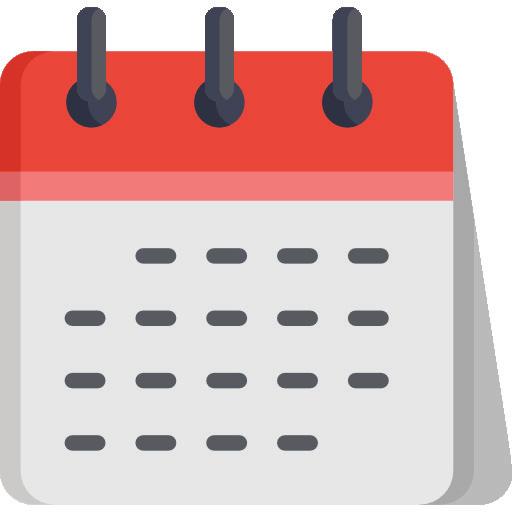
LEARNING MANUAL
WOMEN
LEARNING MANUAL FOR WOMEN IN POLITICAL PARTICIPATION (WPP) 134 135
this activity, the participants will be able to: Know how to communicate politically. How
politician
communicating to supporters and opponents. Objectives:
hour
and facilitator
role
and
flipchart and paper. Activity 5: Political communication Government/administration parliaments, courts Association networks and social movements Media system Polled opinions Audiences Published opinions Politicians Lobbyists Civil Society-actors Arenas of political communication Periphery Political system Center Civil society Everyday talk in episodic publics
talk in episodic publics communication in weak publics Institutionalized discourses and negotiation Modes of communication How to write a press release
REGIONAL ACADEMY
FOR
IN POLITICAL PARTICIPATION (WPP) REGIONAL ACADEMY
Time Needed Methodology Materials After completion of
to behave as a
while
1
Group discussion
presentation,
play
short video. Marker,
Everyday
Best days to send 1. TUESDAY 2. WEDNESDAY 3. THURSDAY WHY?
Best time to send
SHEET
Tuesday’s open rate is over 22%, and it is also the most popular day to send press releases, followed by Wednesday.
Between 9am and 2pm WHY? The open rate is over 45% at those times. After lunch, the open rate drops to a low of 15%. Consider time zones: GMT: Greenwich Mean Time CAT: GMT +2 CET: GMT +1 WHY?
Elevator Speeches
An elevator speech is a short highly focused 30 second way of sharing your message.


The name reflects the fact that an elevator speech can be delivered in the time span of an elevator ride. Usually it is unplanned and often a on-on-one conversation.

REGIONAL ACADEMY LEARNING MANUAL FOR WOMEN IN POLITICAL PARTICIPATION (WPP) REGIONAL ACADEMY LEARNING MANUAL FOR WOMEN IN POLITICAL PARTICIPATION (WPP) 136 137 REGIONAL ACADEMY LEARNING MANUAL FOR WOMEN IN POLITICAL PARTICIPATION (WPP) 130 The perfect press release HOW TO CRAFT The Perfect Press Release into a bit more detail and include a The perfect press release HOW TO CRAFT 8. This
the
your
Political Interviews
section should contain
boilerplate of
organisation.
It involves interviewing a political candidate with the intention of getting information from them.
Activity 6: Public speaking
Activity 6: Public speaking
Activity 6: Public speaking
Content of an elevator speech

THE MESSAGE:
What do you need your audience to know
THE STORY & KEY DATA:
Connect the message specifically to your work, with a quick fact and story
THE ASK:
Consider who you are talking to, what they care about and what it is within thier power to impact. Make a specific request.
THE ELEVATOR SPEECH:
Packages the above in a way that is short, personal and memorable.
Objective After completion of this activity, the participants will:
To know how to speak in public confidently.
Learn how to stay calm in a provocating situation.
Objectives
After completion of this activity, the participants will be able to:
Objectives 1 hour
Objective After completion of this activity, the participants will:
To know how to speak in public confidently.
Understand the real meaning of public relations.
Time Needed
Learn how to stay calm in a provocating situation.
Understand the difference between PR and advertizing.
Objectives: 1 hour
Methodology
Materials
Time Needed Methodology
Large group discussion, facilitator presentation, role play.
Understand what is news
Use social media in Public Relations
Materials
Time Needed
Political Public Speaking
Political Public Speaking
Core programme modules covered
Flipchart paper, markers, tape, chalk or rope
Find out if PR is measured or not
Large group discussion, facilitator presentation, role play.
1 hour
Flipchart paper, markers, tape, chalk or rope
Core programme modules covered
Role play, demonstration, large group discussion
These can be focused on specific aspects of speaking e.g. content / structure / audience engagement / Q&A handling / vocal skills / handling nerves / movement or body language.
Methodology Materials
These can be focused on specific aspects of speaking e.g. content / structure / audience engagement / Q&A handling / vocal skills / handling nerves / movement or body language.
Flipchart and paper, markers, tape
The 4 types of public speaking REGIONAL ACADEMY LEARNING MANUAL FOR WOMEN IN POLITICAL PARTICIPATION (WPP) 134

The 4 types of public speaking
Speaking to inform
Speakiing to persuade
Speaking to actuate
Speaking to entertain
REGIONAL ACADEMY LEARNING MANUAL FOR WOMEN IN POLITICAL PARTICIPATION
LEARNING
PARTICIPATION (WPP) 138 139
REGIONAL ACADEMY
MANUAL FOR WOMEN IN POLITICAL PARTICIPATION (WPP) REGIONAL ACADEMY LEARNING MANUAL FOR WOMEN IN POLITICAL
(WPP) 133
Staging
Preparation
• Messaging






















• Themes
• Structure
• Managing attention spans

• Audience cantered
• Audience analysis
• Making an impact
• Visual aids
• Audience engagement
• Being memorable
• Using humour
• Voice development
• Body language
• Personal impact and appearance
• Movement
• Handling Q&A heckling
• Projecting gravitas
• Developing your personal style
• Presenting as part of a team
• Chairing moderating
• Presentations
Five Things Everyone Should Know About Public Relations
What is Public Relations?
Here’s what the Public Relations Society of America, PRSA agreed upon after a few thousand submissions: “Public relations is a strategic communication process that builds mutually beneficial relationships between organisations and their publics.”
How is public relation different than advertising?
It’s Unpaid vs. Paid. Earned vs. Purchased. Credible vs. skeptical. Public relations tastes great, advertising is less filling.
There’s an old saying: “Advertising is what you pay for, publicity is what you pray for.”
Here’s a good chart from a previous column:
• Staging
is



of
between

• Handling nerves Time Needed
Methodology Materials
Five Things Everyone Should Know About Public Relations
What is Public Relations?
Here’s what the Public Relations Society of America PRSA agreed upon after a few thousand submissions: “Public relations is a strategic communication process that builds mutually beneficial relationships between organizations and their publics.”

How is public relation different from advertising?

It’s Unpaid vs. Paid. Earned vs. Purchased. Credible vs. skeptical. Public relations tastes great, advertising is less filling.
There’s an old saying: “Advertising is what you pay for, publicity is what you pray for.”
Here’s a good chart from a previous column: Advertising
“This is important“
What is news? Before hiring a PR firm or starting your own campaign, it’s important to understand the
REGIONAL ACADEMY LEARNING MANUAL FOR WOMEN IN POLITICAL PARTICIPATION (WPP)
(WPP) 140 141
REGIONAL ACADEMY LEARNING MANUAL FOR WOMEN IN POLITICAL PARTICIPATION
Delivery Other
After completion of this activity, the participants will be able to: Understand the real meaning
public relations. Understand the difference
PR and advertising. Understand what
news Use social media in Public Relations Find out if PR is measured or not Objectives: 1 hour Role play, demonstration, large group discussion Flipchart and paper, markers, tape Activity 7: Public Relations
is
Guaranteed placement
creative
Ads
More
Public Relations Paid Builds Exposure Audience
sceptical
Complete
control
are mostly visual
expensive “Buy this product“ Earned Builds Trust Media gives third-party validation No guarantee, must persuade media Media controls final version
PR uses language Less expensive
What is news?
Before hiring a PR firm or starting your own campaign, it’s important to understand the nature of news. There are only two ways to make news:
1) Create a story or 2) Follow a story.
Remember, journalists, speakers, bloggers and other influencers are not stenographers. They will ask “What’s in it for me and my audience?”
In other words, pretend you are on the receiving end. Answer this: What’s the story? Why should I care? Why should I care NOW?
Here are more criteria to consider: Is it new? Is it unusual? Is there a human interest angle? Here are the two ways to make news.
Can social media replace traditional media?

Social media can augment PR efforts and serve as an amplifier. “Boring doesn’t work on social media,”
“The last thing you want to do is take a press release and post it to a social network. It’s much better to taILOr your announcement in a human way for each social network your audience will care about. On Twitter, come up with an exciting way to say your announcement in 107 characters, remember you’ll need to save 23 characters for your link.
Can you measure PR?
Probably yes. But it’s not an exact science. There are many people and firms who have created many models, spreadsheets, and estimates. And let’s be clear. They are all estimates.
Activity 8: Public branding
Objectives: 1 hour
After completion of this activity, the participants will be able to:
Have a good understanding of the term branding in politics
Know how to differentiate public branding from PR in politics.
Know the steps in public branding.
Time Needed
Methodology
Materials
What is the public branding?
Facilitator presentation, pair and group discussion
Marker, flipchart and paper
The public brand is a relative newcomer to the public sphere. It is a lever that allows public organisations to get across their identity, assert their legitimacy and provide markers for the evaluation of their actions.
What are the steps in public branding? Here are four steps to building a successful brand.
Define how you want to be perceived
Organize your business based on this promise
Communicate your promise Be consistent
What is the difference between public branding and PR?
In a nutshell, public relations are about managing relationships while branding is centred on creating an identity.
REGIONAL ACADEMY LEARNING MANUAL FOR WOMEN IN POLITICAL PARTICIPATION (WPP)
ACADEMY LEARNING MANUAL FOR WOMEN IN POLITICAL PARTICIPATION (WPP) 142 143
REGIONAL
Activity 9: Case Studies
After completion of this activity, the participants will be able to: Have good understanding of the term branding in politics. Get visual image of branding that text.
While serving as Minister of Foreign Affairs, she has made significant contributions during Rwanda’s turn at the UN Security Council between 2013 and 2014 in aspects such as conflict resolution. She was also involved in the ongoing African Union reforms.
It was during her time as Foreign Affairs Minister that she expressed interest or the position
She is currently serving as the Secretary General of the International Organisation Organisation of Francophonie (OIF), the post she occupies since 2018.
Time Needed
Objectives: 1 hour
Methodology
Materials
Case of Louise Mushikiwabo
Pair discussion, small groups, large groups
Marker, flipchart and paper
Birth: Mushikiwabo was born in 1961 near Kigali of parents she describes as “from the generation of independence”.
Education: Mushikiwabo attended primary and secondary school in Kigali before joining the National University of Rwanda (currently University of Rwanda) in 1981 studying a bachelor’s degree in English. She graduated in 1984 taking on a job as a high school teacher for about two years.
She then moved to the United States in 1986 for further studies where she enrolled for a master’s degree in Languages and Interpretation at the University of Delaware, specializing in French.
Career: On graduation, Mushikiwabo in 1988, continued to work in the United States in multiple capacities for about 20 years before moving to Tunisia to join the African Development Bank where she served in various capacities including as Communications Director.

Rwanda Government: In March 2008, she was invited by President Paul Kagame to join the government team as the Minister of Information before later becoming Minister of Foreign Affairs in 2009.
Publications: In 2016, she co-authored a book “Rwanda Means the Universe”, an intergenerational and autobiographical socio-historical memoir. The book largely focused on the subject of the 1994 Genocide against the Tutsi.
She has also published numerous articles in print and digital media.
Awards and recognition: Mushikiwabo is a recipient of the 2004 Outstanding Humanitarian Award from the American University and School of International Studies.
In May 2018, Jeune Afrique a reputable French news magazine listed her as one among - the most influential African personalities on the continent.
Activity 10: Conclusion
Objectives:
After completion of this activity, the participants will be able to:
Recall all the content enclosed in the module. Have a clear connection between the activities practised in the Module.
Time Needed
Methodology
Materials
30 minutes
Large group discussion and facilitator presentation
Flipchart and paper, markers, tape
The facilitator starts by reminding the participants that they reached the end of the Module 5 and share the overview of the Objectives: of the Module.
They discuss briefly the Objectives: of the Module and go on to draw conclusions and trying to bring the content of the Module to the home country.
Share with the participants the common discussion outcomes of discussions on the most activities covered in the Module: communication, public Relations and Branding skills.
The facilitator makes sure that the content of the Module is transmitted to the participant.
REGIONAL ACADEMY LEARNING MANUAL FOR WOMEN IN POLITICAL PARTICIPATION (WPP)
PARTICIPATION (WPP) 144 145
REGIONAL ACADEMY LEARNING MANUAL FOR WOMEN IN POLITICAL
Steps
1. Welcome participants to Module 6: Gender and Gender mainstreaming and quickly review some of the key points covered during Module 5: Communication, public Relations and Public Branding by helping participants to link this with the previous Modules.
2. Have participants turn to the first page of Module 6 in their Handbooks and review the Objectives: of the Module with them. Ask them what they think is the relevance between the reality and the Module. How does it relate to real life? Explain that during this Module their active participation is of key importance.
REGIONAL ACADEMY LEARNING MANUAL FOR WOMEN IN POLITICAL PARTICIPATION (WPP) REGIONAL ACADEMY LEARNING MANUAL FOR WOMEN IN POLITICAL PARTICIPATION (WPP) 146 147 MODULE 6: GENDER AND GENDER MAINSTREAMING Objectives: After completion of this module, the participant will
knowledge of: • Gender and GBV • Gender
• Gender
• Gender responsive budgeting • Women economic empowerment S/N ACTIVITY TIME 1 2 3 4 5 6 7 8 Introduction Gender and GBV Gender mainstreaming Gender analysis Gender reponsive budgeting Resource mobilization Women economic empowerment Conclusion
1
1
1 hour 1 hour 30
Needed
Materials
have
mainstreaming
analysis
Total: 7hours 30 minutes
hour 1 hour
hour 1 hour
Minutes Time
Methodology
After completion of this activity, the participants will be able to: Explain gender-based violence Understand the forms of gender-based violence Elaborate examples of gender-based violence Objectives: 30 minutes Pair work, demonstration, large group discussion Flipchart and paper, markers Activity 2: Gender and GBV Time Needed Methodology Materials After completion of this activity, the participants will be able to: Understand the outline of the module Know the activities to be covered in the module Know the time the module will be covered. Objectives: 30 minutes Pair work, demonstration, large group discussion Flipchart and paper, markers Activity 1: Introduction
What is Gender?
What is Gender?
Gender is used to describe those characteristics of men and women which are socially determined, in contrast to those which are biologically determined. The word ‘gender’ was used by Ann Oakley and others in the 1970s to emphasise that everything women and men do, and everything expected of them, with the exception of their sexually distinct functions (childbearing etc.) can change, and does change, over time and according to changing and varied social, economical, political, and cultural factors.
Gender is used to describe those characteristics of men and women which are socially determined, in contrast to those which are biologically determined. The word ‘gender’ was used by Ann Oakley and others in the 1970s to emphasise that everything women and men do, and everything expected of them, with the exception of their sexually distinct functions (childbearing etc.) can change, and does change, over time and according to changing and varied social, economical, political, and cultural factors.
People are born female or male, but learn to be girls and boys who grow into women and men. They are taught what the appropriate behaviour and attitudes, roles and activities are for them, and how they should related to other people.
People are born female or male, but learn to be girls and boys who grow into women and men. They are taught what the appropriate behaviour and attitudes, roles and activities are for them, and how they should related to other people.
This learned behaviour is what makes up gender identity, and determines gender roles and responsibilities. Gender roles vary greatly from one culture to another, and from one social, political, and economic group to another within the same culture.
This learned behaviour is what makes up gender identity, and determines gender roles and responsibilities. Gender roles vary greatly from one culture to another, and from one social, political, and economic group to another within the same culture.
Why is Gender important
Why is Gender important
Since the mid 1980s there has been a growing consensus that sustainable development requires an understanding of both women’s and men’s roles and responsibilities within the community and their relations to each other. This has come to be known as the Gender and Development (GAD) approach.
Since the mid 1980s there has been a growing consensus that sustainable development requires an understanding of both women’s and men’s roles and responsibilities within the community and their relations to each other. This has come to be known as the Gender and Development (GAD) approach.
The main objective of GAD is mainstreaming women’s needs and perspectives into all activities. Mainstreaming acknowledges that all development operations have a gender impact and do not automatically benefit men and women equally.
The main objective of GAD is mainstreaming women’s needs and perspectives into all activities. Mainstreaming acknowledges that all development operations have a gender impact and do not automatically benefit men and women equally.
Thus it is necessary to adopt GAD approach for development programmes to benefit both men and women, and also for sustainable development and positive impacts on the society as whole.
Thus it is necessary to adopt GAD approach for development programmes to benefit both men and women, and also for sustainable development and positive impacts on the society as whole.
REGIONAL ACADEMY LEARNING MANUAL FOR WOMEN IN POLITICAL PARTICIPATION (WPP) 141


Strong, arrogant, violent, domineering, decisive, non-communicative.

Sex and Gender
Biology differentiates the sexes.
Society differentiates male and female roles.
Weak, modest, peaceful, submissive, indecisive, communicate.
Gender roles ascribed to men and women vary greatly from culture to culture.
Sex: An aspect of one’s biological makeup that depends on whether one is born with distinct male or female genitals and a genetic program that releases either male or female hormones to stimulate the development of one’s reproductive system.
Gender: One’s sense of being male or female and playing masculine or feminine roles in ways defined as appropriate by one’s culture and society.
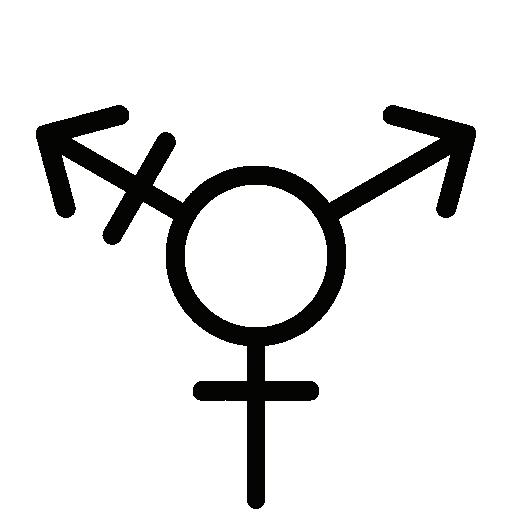


 REGIONAL ACADEMY LEARNING MANUAL FOR WOMEN IN POLITICAL PARTICIPATION (WPP)
REGIONAL ACADEMY LEARNING MANUAL FOR WOMEN IN POLITICAL PARTICIPATION (WPP)
(WPP) 148 149
REGIONAL ACADEMY LEARNING MANUAL FOR WOMEN IN POLITICAL PARTICIPATION
Stereotypes
Men are
Women are
Why Gender Considered as Women’s Empowerment?
Although ‘gender and development’ includes both women and men, however, in most cases focus is given to only women. It is because of imbalance and unequal status of women in most of the societies where women do not have the same opportunities and personal freedom as men do. Therefore, there is a need to focus women as compared to men. It is like two glasses, where one is half full and another is empty, thus the empty glass should get water first and when both glasses become equal then fill both.
If someone tries to fill both glasses without noticing the level of water it won’t work. Similarities and differences of women and men In general terms, gender refers to the
social constructions of masculinity and femininity. Masculinity denotes the qualities, behaviours and attitudes traditionally associated with or deemed appropriate for men; femininity for women. However, gender is often not fully understood in terms of its application as a form of analysis in the field of peace and security.
Take for example the continued use of ‘gender’ as synonymous with ‘women’. One consequence of this is that ‘men’ are treated as the default category (the ‘norm’), exempt from any consideration of gender. Another consequence is that this results in little attention for sexual and gender minorities. We argue that gender should be understood as a system of power, encompassing gendered selves, institutions, and symbolic meanings.
GBV can take various forms:
Forms of gender-based violence
Physical: it results in injuries, distress and health problems. Typical forms of physical violence are beating, strangling, pushing, and the use of weapons.
Sexual: it includes sexual acts, attempts to obtain a sexual act, acts to traffic, or acts otherwise directed against a person’s sexuality without the person’s consent.
Psychological: includes psychologically abusive behaviours, such as controlling, coercion, economic violence and blackmail. 43% of women in the 28 EU countries have experienced some form of psychological violence by an intimate partner.
Examples of gender based violence
Domestic violence includes all acts of physical, sexual, psychological and economic violence that occur within the family, domestic unit, or between intimate partners.

What is Gender Based Violence (GBV)
GBV is violence directed against a person because of that person’s gender or violence that affects persons of a particular gender disproportionately.
Violence against women is understood as a violation of human rights and a form of discrimination against women and shall mean all acts of gender-based violence that result in, or are likely to result in;
• Physical harm
• Sexual harm,
• Psychological harm,
• Economic harm,
• Suffering to women.
It can include violence against women, domestic violence against women, men or children living in the same domestic unit. Although women and girls are the main victims of GBV, it also causes severe harm to families and communities.
These can be former or current spouses also when they don’t share the same residence. Sex-based harassment includes unwelcome verbal, physical or other non-verbal conduct of a sexual nature with the purpose or effect of violating the dignity of a person.
Rate of gender based violence and its consequences at workplace
Papua New Guinea, gender-based violence (GBV) is widespread, with 94 percent of employers saying their staff has likely experienced GBV. This violence affects women at home and at work. The impacts on the workplace are many and varied: The threat of violence at work increases liabilities, creates occupational safety and health risks, and reduces productivity by affecting victims’ performance.
of employers in Papua New Guinea say their staff have likely experienced cases of GBV
 REGIONAL ACADEMY LEARNING MANUAL FOR WOMEN IN POLITICAL PARTICIPATION (WPP)
REGIONAL ACADEMY LEARNING MANUAL FOR WOMEN IN POLITICAL PARTICIPATION (WPP)
(WPP) 150 151
REGIONAL ACADEMY LEARNING MANUAL FOR WOMEN IN POLITICAL PARTICIPATION
94%
It also contributes to turnover and hinders career progression.For the private sector, these expenses add up, with direct costs of GBV adding 3 percent to 9 percent to total payroll expenses and indirect costs adding another 45 percent.



To address this and other gender-related challenges, a group of companies from Papua New Guinea came together under the umbrella of the IFC-sponsored Business Coalition for Women (BCFW). By developing and implementing GBV policies and working jointly to change public perceptions, coalition members have been successful in supporting their employees and reducing the costs of GBV.
Activity 3: Gender mainstreaming
Objectives:
After completion of this activity, the participants will be able to:
Know what is gender mainstreaming
Tell what the principles of gender mainstreaming are


Articulate the challenges of gender mainstreaming
Time Needed
Methodology
Materials
1 hour
Pair work, demonstration, large group discussion
Flipchart and paper, markers
Gender mainstreaming is a strategy to improve the quality of public policies, programmes and projects, ensuring a more efficient allocation of resources. Better results mean increased well-being for both women and men, and the creation of a more socially just and sustainable society.
The five principles of gender mainstreaming








1. Gender sensitive language


Texts referring to or addressing both women and men must make women and men equally visible. This applies to, amongst others, forms, documents, telephone directories, texts on the intranet and the internet, advertising for events, folders, posters and films.
Attention must also be paid to a gender-sensitive choice of images when preparing public relations material
3. Equal access to and utilization of services
• Services and products must be assessed as to their different effects on women and men.
• It is important to identify:
• Who uses the services (women or men or both)?
• Who are the clients (women or men or both)?
• Who are the target groups?
• Do women and men have different needs?
• Are the different circumstances of women and men taken into account when planning and designing services?
• Do all target groups access to the same sources of information?
• Who benefits most?
• Which group would suffer most if they could not use the services offered?
• Are the offices providing the service structurally gendered and barrier free, (i.e. the waiting areas, lighting, access without steps, signage)?.
2.
Gender specific data collection and analysis

Data must be collected, analysed and presented by gender. Social dimensions, such as age, ethnicity, income and level of education should also be reflected where possible.
Gender-specific analysis of the initial situation must provide the basis for all decisions.
REGIONAL ACADEMY LEARNING MANUAL FOR WOMEN IN POLITICAL PARTICIPATION (WPP)
(WPP) 152 153
REGIONAL ACADEMY LEARNING MANUAL FOR WOMEN IN POLITICAL PARTICIPATION
4. Women and men are equally involved in decision making
There are binding targets for a balanced gender ratio at all levels of decision making.
Measures and strategies geared towards a balanced gender ratio must be taken at all levels of decision making.
This is also important when appointing working groups, project teams, commissions and advisory boards, as well as when organising events, e.g. when selecting speakers.
Workplaces must be structurally gendered and barrier free where possible (e.g. gendered signage, sufficient lighting, avoiding potentially frightening situations as in poorly accessible basement archives, access without steps, social rooms for different occupations).
5. Equal treatment is integrated into steering processes
Steering instruments include quality management and gender budgeting, amongst others. It is important to note that:
Paying attention to the different circumstances of women and men enhances the success rate, effectiveness and maximum utilisation of staff and funds.
All targets related to people are defined in terms of full equality and the targets attained are therefore presented by gender.
Controlling routine as a matter of course includes gender-specific evaluation of results and a systematic steering of the gender ratio, in other words, the development and implementation of (new and adapted) targets, strategies and measures.
Activity 4: Gender Analysis
Objectives:
After completion of this activity, the participants will be able to:
What are gender analysis tools?
What should be included in gender analysis?
What are the different domains of gender analysis? What is the gender analysis matrix?
Why is gender analysis important in any project?
Time Needed
Methodology Materials
Gender Analysis
30 minutes
Pair work, demonstration, large group discussion
Flipchart and paper, markers
Gender analysis refers to the variety of methods used to understand the relationships between men and women, their access to resources, their activities, and the constraints they face relative to each other. Gender analysis provides information that recognizes that gender, and its relationship with race, ethnicity, culture, class, age, disability, and/or other status, is important in understanding the different patterns of involvement, behaviour and activities that women and men have in economic, social and legal structures.
What are gender analysis tools?
The Gender Analysis Tool, produced by Global Affairs Candada (Formerly Canadian International Development Agency. CIDA), can be used for examining the differences between the roles that women and men play and for better understanding how these differences impact on their lives in different circumstances.
What should be included in gender analysis?
A gender analysis includes information on women, men, girls and boys in terms of their division of labour, roles and responsibilities, access to, and control over, resources, and their relative condition and position in society.
What are the different domains of gender analysis?
Use the GAF, which is composed of four domains (access to assets, beliefs and perceptions, practices and participation, and institutions, laws, and policies, with power cross-cutting the four domains), to organize information about gender differences from existing sources.
REGIONAL ACADEMY LEARNING MANUAL FOR WOMEN IN POLITICAL PARTICIPATION (WPP)
(WPP) 154 155
REGIONAL ACADEMY LEARNING MANUAL FOR WOMEN IN POLITICAL PARTICIPATION
What is Gender Mainstreaming?

Gender mainstreaming is a strategy for developing policies, legislation, programs, projects, society and community’s development plans from gender equality perspective in order to benefit both women and men.
GENDER MAINSTREAMING
• A strategy
•
• Access over resources, opportunities and rewards and benefits for labor.
• Specific need and interests are addressed.
• Participation and contribute in decision-making.
REGIONAL ACADEMY LEARNING MANUAL FOR WOMEN IN POLITICAL PARTICIPATION (WPP)
(WPP) 156 157
REGIONAL ACADEMY LEARNING MANUAL FOR WOMEN IN POLITICAL PARTICIPATION
Policies, legislations, programs, projects society and community development plans.
Mainstreaming is a process Gender Analysis throughout Project Cycle Resource Allocation Gender focal Points or Units Building Blocks of a Gender Mainstreaming Strategy
Gender analysis/stakeholders analysis
Gender needs assessment
Gender planning
Gender-specific planning
Capacity building on gender equality
Gender sensitive monitoring and evaluation
Relevant gender expertise
Adequate resources
Knowledge sharing on gender mainstreaming Design Gender-analysis / Needs assessment Planning Gender planning 2 Implementation Gender-specific action/ Capacity building 3 Monitoring 4 Gender-sensitive monitoring / evaluation Evaluation 5 Knowledge sharing 1 Gender expertise
•
•
•
•
•
•
•
•
•
Principles of Gender Mainstreaming

• Gender Equality
• Incorporating Gender into Politics
• Including Women in Decision Making
• Prioritizing Gender Equality
•
Activities
1
Gendered diagnostic study.
Engagement with actors and presentation of strategy.
Capacity building (gender).
Integration of gender in tools





2
MYCOTOXIN GENDER MAINSTREAMING IMPACT PATHWAY Outcomes 3
Outputs

Sex disaggregated qualitative data to inform baseline survey (gender mainstreamed tools).
Literature reviews and primary research papers containing a gender component.
Publishable gender strategy implementation process paper.
Gendered nature of aflatoxin exposure identified.
Gender specific areas of mitigation of exposure identified.
Women's access to exposure prevention and mitigation technologies enhanced (including intra-household technology access gap).
Enhanced and equitable nutrition and health benefits because of increased good quality food availability.
Ultimate Impact 4
Increased food security.
Improved nutrition and health. Reduction in rural poverty.
More sustainable natural resources.
ACADEMY LEARNING MANUAL FOR WOMEN IN POLITICAL PARTICIPATION (WPP)
ACADEMY LEARNING MANUAL FOR WOMEN IN POLITICAL PARTICIPATION (WPP) 158 159
REGIONAL
REGIONAL
Analysis Objectives: Planning Project selection Monitoring Evaluation Gender Mainstreaming
Shifts in Institutional Culture
Gender
(WPP) 160 161
Analysis
REGIONAL ACADEMY LEARNING MANUAL FOR WOMEN IN POLITICAL PARTICIPATION (WPP) REGIONAL ACADEMY LEARNING MANUAL FOR WOMEN IN POLITICAL PARTICIPATION
Gender
Gaps in the status and participation of women and men could hinder overall project outcomes.
Project outcomes that may close the gaps in the status and participation of women and men.
Possible differential effects the project might have on men and women.
mainstreaming
mainstreaming
Cycle Analysis Implementation
Mainstreaming
Gender disaggregated data (quantitative) Gender scanning checklist (qualitative) Monitoring & Evaluation GENDER MAINSTREAMING Evaluation Assessing impacts Initiation A Problem definition Project Design and organisation Public participation involving people Design analysis visions and Objectives: Design-making Choice of measures Implementation Adaptation monitoring Maintenance Monitoring adaptation
strategies. Gender
entry points. Specific measures to avoid/mitigate potential gender that may be caused by the project. Program
Gender
Process
What is Gender Analysis Matrix?
A gender-responsive budget is a budget that works for everyone (women and men, girls and boys) by ensuring gender-equitable distribution of resources and by contributing to equal opportunities for all. Gender-responsive budgeting is essential both for gender justice and for fiscal justice.
The Gender Analysis Matrix is an analytical tool that uses participatory methodology to facilitate the definition and analysis of gender issues by the communities that are affected by them. Using the Gender Analysis Matrix will provide a unique articulation of issues as well as develop gender analysis capacity from the grassroots level up.
The Gender Analysis Matrix is based on the following principles:
All requisite knowledge for gender analysis exists among the people whose lives are the subject of the analysis.
Gender analysis does not require the technical expertise of those outside the community being analysed, except as facilitators.
Gender analysis cannot be transformative unless the analysis is done by the people being analysed.
Stated gender Objectives:
Categories of analysis
LEVELS OF ANALYSIS
Stakeholder Group 1
Stakeholder Group 2
Stakeholder Group 3
Labour
This refers to changes in tasks, level of skill required (skilled versus unskilled, formal education, training) and labour capacity (how many people and how much they can do; do people need to be hired or can members of the household do it?)
Time
This refers to changes in the amount of time (3 hours, 4 days, and so on) it takes to carry out the task associated with the project or activity.
Resources
This refers to the changes in access to capital (income, land, credit) as a consequence of the project, and the extent of control over changes in resources (more or less) for each level of analysis.
Culture
Cultural factors refer to changes in social aspects of the participants’ lives (changes in gender roles or status) as a result of the project.
Why is gender analysis important in any project?
Gender analysis is an essential element of socio-economic analysis. A comprehensive socioeconomic analysis would take into account gender relations, as gender is a factor in all social and economic relations. An analysis of gender relations provides information on the different conditions that women and men face, and the different effects that policies and programs may have on them because of their situations.
Such information can inform and improve policies and programs, and is essential in ensuring that the different needs of both women and men are met. At the local level, gender analysis makes visible the varied roles women, men, girls and boys play in the family, in the community, and in economic, legal and political structures.
A gender perspective focuses on the reasons for the current division of responsibilities and benefits and their effect on the distribution of rewards and incentives.
Activity 5: Gender responsive budgeting
After completion of this activity, the participants will be able to:
Objectives: 1 hour
Understand the meaning of gender responsive budgeting.
Understand why gender responsive budgeting is important.
Know where GRB was successful
Time Needed
Methodology
Materials
Pair work, demonstration, large group discussion
Flipchart and paper, markers
Why is gender responsive budgeting important?
Gender-responsive budget analysis, along with legislation, and other practical policy measures can address gender bias and discrimination.
REGIONAL ACADEMY LEARNING MANUAL FOR WOMEN IN POLITICAL PARTICIPATION (WPP)
(WPP) 162 163
REGIONAL ACADEMY LEARNING MANUAL FOR WOMEN IN POLITICAL PARTICIPATION
It is a step not only towards accountability to women’s rights, but also towards greater public transparency and can shift economic policies leading to gains across societies.
Gender Responsive Budgeting (GRB) Steps




Analysis (Issue)





Case of where is gender responsive budgeting successful
Morocco is one of the leading countries in the field of gender-responsive budgeting. Morocco has a long history of gender responsive budgeting work with sustained, high-level political will to address gender equality. Since the adoption of a new finance law in January 2014, the needs of women and girls are increasingly being reflected in how governments spend and the gender priorities are integrated throughout the budgeting process.
Ongoing efforts have resulted in GRB being progressively anchored in Morocco’s budget reform process. Experience with results-based and gender-responsive public finance management for more than 10 years in Morocco resulted in the adoption of the new organic law of finance, by the Council of Government, which legally institutionalizes gender equality throughout budget processes.
Taking the GRB processes a step forward, the new legislation explicitly mentions that gender equality must be taken into account in the definition of Objectives:, results and indicators of performance of the line budgets. The new organic law also institutionalizes the Gender Report as an official document that is part of the annual Finance Bill – an important achievement.
Annually, Morocco produces a Gender Report that contains information on the work conducted by each sector disaggregated by gender (where data allows), which has become an important accountability and monitoring tool, advancing implementation of GRB from one year to the next. By 2012, a total of 27 departments joined the report, corresponding to more than 80% of the State’s overall budget.
The report is successful in requiring reporting from more traditional sectors (for GRB), such as health and education, as well as non-traditional sectors, such as ministries of infrastructure and transport.
By 2012, a total of 27 departments joined the report, corresponding to more than 80% of the State’s overall budget. The report is successful in requiring reporting from more traditional sectors (for GRB), such as health and education, as well as non-traditional sectors, such as ministries of infrastructure and transport.
The Department of Literacy now conducts budget planning of its programmes based on its “targets” which are largely women, who now constitute 85 per cent of the beneficiaries of such literacy programmes in Morocco. This approach, which began in 2009, has allowed the Department to better adapt to the needs of its beneficiaries.
As a result, several different programmes are also being developed according to age (15-24; 25-45 years and 45+), as well as employment status (employee or looking for employment). Another breakthrough was the inclusion of provisions in favour of gender equality in the country’s new Constitution in July 2011.

Article 19 explicitly enshrines gender equality in the enjoyment of civil, political, economic, social, cultural and environmental rights. The new Constitution also introduces the principle of gender equality in fact through several articles that mention the commitment of governments to work towards the creation of conditions to allow the achievement of gender equality and equal representation of women and men in all areas, and access to decision-making bodies.
 REGIONAL ACADEMY LEARNING MANUAL FOR WOMEN IN POLITICAL PARTICIPATION (WPP)
REGIONAL ACADEMY LEARNING MANUAL FOR WOMEN IN POLITICAL PARTICIPATION (WPP)
(WPP) 164 165
REGIONAL ACADEMY LEARNING MANUAL FOR WOMEN IN POLITICAL PARTICIPATION
Situational
Is the policy gender sensitive? (Activities) Is budget allocated adequate (Inputs) Was expenditure spent as planned (Outputs) Did Expenditure ameliorate Gender gaps? (Outcome)
Activity6: Resource mobilization
After completion of this activity, the participants will be able to:
Key elements of a resource mobilization strategy
The process and dialogue involved in developing an RM Strategy are as important as the final document itself. Therefore, it is essential that key stakeholders are involved in all of the following stages of its development:
Design a Resource Mobilization Strategy and Action Plan.
Elaborated key elements of a resource mobilization strategy.
Time Needed
Objectives: 1 hour
Methodology Materials
Pair work, demonstration, large group discussion
Flipchart and paper, markers
What is resource mobilization?
Resource mobilization refers to all activities involved in securing new and additional resources for your organisation. It also involves, a better use and maximizing of existing resources.
Rationale
The advantage of having an RM strategy and action plan in place are that it:
1. 2. 3. 4. 5. 6. 7
Focuses RM efforts on the higher level results of the programme framework.
Coordinates the approach to resource partners.
Avoids confusing messages to resource partners.
Works to prevent ‘in-house’ competition for resources.
Avoids ‘piece-meal’’ efforts; 6. prioritizes the need to enhance RM capacities at all levels; 7. creates joint ownership and accountability.
Leads to planned, upfront, pipeline resources.
Ultimately, leads to comprehensive programme delivery and broad impact.
A. A quick check: are you ready to start?
B. Strategic position
C. Review the resource requirements for the programme framework (RRs, CPF etc.) as well as specific programme or projects prioritized therein
D. Analyse the external resource environment
E. Establish the goal and intended outcomes of the RM Strategy as well as guiding principles for resource partner engagement
F. Identify potential resource partners and match resource partners’ interests with your priority areas of work G. Develop an Action Plan
H. Develop means to monitor and evaluate progress of the RM Strategy.
Main challenges of gender mainstreaming
Advances in law and policy are limited by a number of critical challenges that perpetuate gaps in implementation, upscaling and accountability, and prevent effective programmatic responses.
Gender inequality Impunity
Inadequate human, technical and financial investments
Weak coordination and monitoring mechanisms
Insufficient data and research
Limited attention to neglected groups and issues
Dearth of evaluations and evidence base to guide programmes
Limited scope and coverage of services and interventions
Low demand for services by survivors
Fragmentation of efforts to prevent and respond to violence
REGIONAL ACADEMY LEARNING MANUAL FOR WOMEN IN POLITICAL PARTICIPATION (WPP)
(WPP) 166 167
REGIONAL ACADEMY LEARNING MANUAL FOR WOMEN IN POLITICAL PARTICIPATION
Activity 7: Women Economic empowerment























Importance of Empowerment
Investing in women’s economic empowerment sets a direct path towards gender equality, poverty eradication and inclusive economic growth. Women make enormous contributions to economies, whether in businesses, on farms, as entrepreneurs or employees, or by doing unpaid care work at home. But they also remain disproportionately affected by poverty, discrimination and exploitation.
Gender discrimination means women often end up in insecure, low-wage jobs, and constitute a small minority of those in senior positions. It curtails access to economic assets such as land and loans. It limits participation in shaping economic and social policies. And, because women perform the bulk of household work, they often have little time left to pursue economic opportunities.

After completion of this activity, the participants will be able to: Understand what is women’s economic empowerment. Be acquainted with why economic empowerment is important.
Objectives: 1 hour







































































Time Needed
Methodology

Materials

















Pair work, demonstration, large group discussion
Flipchart and paper, markers
What is women economic empowerment




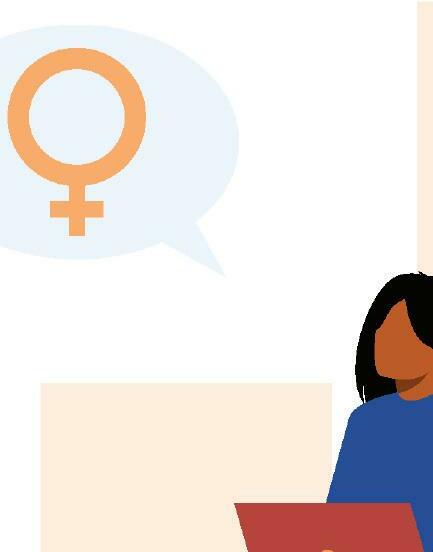

















Women Economic empowerment is the capacity of women and men to participate in, contribute to and benefit from growth processes in ways that recognise the value of their contributions, respect their dignity and make it possible to negotiate a fairer distribution of the benefits of growth.


Economic empowerment is the crying need of this hour. “Wage employment means economic power” (Elliott, 2008, p. 86). Through employment women earn money and it enables women and girls to become ‘bread earners’, contributing members of households with a strong sense of their own economic independence. “Economic empowerment is a powerful tool against poverty” (Biswas, 2010, p. 27). The Djakarta Declaration (1994) critically examines that, “empowerment of women is not only equal consideration; it was a necessary precondition for sustainable economic and social development.”
If funding sources comprise the “supply side” of political finance, then controls on expenditure inform the “demand side”. These controls usually take the form of limits on campaign spending by parties, candidates and third parties (e.g. non-party campaigners) in the run-up to elections.




















Countries that impose spending limits have used different approaches to calculate the expenditure limit. Some set a specific absolute figure that does not vary, some calculate the limit based on the average monthly salary or minimum wage, and still others calculate the spending limit in conjunction with the number of voters or inhabitants in the electoral area. Whatever approach is taken, the limit set must be reasonable.
If it is set too high, it will have “no bite” and essentially be meaningless. If the limit is set too low, it may not allow for adequate electoral campaigning and could also tempt some contestants to circumvent the limit. The law must clearly define the concept of electoral expense. This means that the types of activity covered must be clear and the length of the campaign (regulated) period specified in order to ensure the spending limit is effective.

REGIONAL ACADEMY LEARNING MANUAL FOR WOMEN IN POLITICAL PARTICIPATION (WPP)
IN POLITICAL PARTICIPATION (WPP) 168 169
REGIONAL ACADEMY LEARNING MANUAL FOR WOMEN
It is also important to clear about whose expenditures are subject to the limit - ideally limits should apply to all who are making election-related expenditure (e.g. political parties, candidates and non-party campaigners) although the limits need will not be all set at the same level. In addition to expenditure limits, some countries also include bans on certain types of spending. The most common are bans on the misuse of state resources, prohibitions on media advertising and votebuying activities.
Transparency rules
Transparency is a central consideration of any political finance regime: information about where parties and candidates get their money and how they spend it shines light into potentially murky waters that can breed suspicion and obscure corruptive transactions. Reporting and disclosure requirements vary from country to country as do the approaches taken in implementing such requirements. The key elements, subject to country context, can be depicted as follows:
Oversight bodies receive reports, monitor compliance, publish information
Oversight and enforcement
The final component of any political finance regime is the need for an effective oversight mechanism. This means that there has to be entity/entities that are tasked with overseeing compliance with the law and that there are sanctions that apply in the case of non-compliance.
There are different models of oversight bodies in use around the world. Some countries assign the oversight function to the election management body; some vest this role in a governmental ministry. Other options include allocating the oversight remit to a court, a state audit agency or a specialised body. As discussed more fully below, the oversight body must be impartial, independent, and have adequate resources.
Regardless of which entity shoulders the oversight responsibility, the oversight body needs to have the right powers, policies, people and procedures to do its job. And, importantly, it must have the political will to fulfil its remit. Sanctions may range from administrative penalties, forfeiture, mandatory corrective action, loss of public funding, de-registration and/or criminal punishment.
The purpose of sanctions should be to redress wrongdoing, punish the offender so that they do not benefit from their malfeasance and to deter future non-compliance. There is an international consensus that sanctions should be “effective, proportionate and dissuasive”.
Of course, it is not enough that legislation provides for such sanctions unless they are used and used in an objective and non-partisan manner. It thus is important to ensure there is “an effective means of redress against administrative decisions”, such as the imposition of sanctions.
Key principles and international standards
Political finance regulation starts with the premise that political parties and candidates play a vital role in a democracy and need adequate funding to be effective. It is also essential to recognise that regulation in this sensitive area requires a balancing of fundamental rights and freedoms.
On the one hand, international agreements not only establish the right to participate in public affairs and to vote, they also recognise the right of association/assembly, the right of privacy and freedom of expression. These rights and freedoms are central in the context of political and electoral discourse. On the other hand, some regulation or infringement of these fundamental rights and freedoms are tolerated to ensure that the electoral process remains free and fair.
For example, freedom of expression would weigh in favour of not limiting the amount of money an individual can contribute in support of or in opposition to a particular candidate or party. However, to allow unlimited contributions could foster undue influence of wealthy donors and thus undermine the fairness of an election campaign. The important question then is where to draw the line between these competing interests.
Clarity of purpose and Enforceability.
The impact of debt servicing on women’s rights. As realising women’s rights, the role of public debt in Africa, a 2018 Gender and Development Network (GADN) report demonstrated;
“Public debt and its servicing are ameet their commitments on gender equality and the promotion of women’s rights. The costs of servicing this debt are disproportionately borne by women, while the funds borrowed are rarely spent in ways that prioritise women’s rights.”
 REGIONAL ACADEMY LEARNING MANUAL FOR WOMEN IN POLITICAL PARTICIPATION (WPP)
REGIONAL ACADEMY LEARNING MANUAL FOR WOMEN IN POLITICAL PARTICIPATION (WPP)
(WPP) 170 171
REGIONAL ACADEMY LEARNING MANUAL FOR WOMEN IN POLITICAL PARTICIPATION
Journalists, civil society groups and other members of the public access published information
Political parties and candidates keep records/report financial information
Transparency
The five key components of financial literacy
Financial











ACADEMY LEARNING MANUAL FOR WOMEN IN POLITICAL PARTICIPATION (WPP)
ACADEMY LEARNING MANUAL FOR WOMEN IN POLITICAL PARTICIPATION (WPP) 172 173 Example of Gender and trade (Trade and Gender Toolbox: How will the Economic Partnership Agreement between the EU and the EAC affect Kenyan women?) Gradual removal of the barriers to EAC imports from the EU Variation in tariff revenues Increased competition for domestic products Restructuring of some Kenyan firms Employment and real wage changes Women’s empowerment or de-empowerment Modification of taxation Modification in public expenditures Changes in purchasing power Changes in public spending Women’s empowerment or deempowerment Increase or decrease of unpaid care work Changes in gender disparities and in women’s welfare Tools: Monitoring indicators Tools: CGE estimation Tool: Checklist Tool: CGE estimation Time Needed Methodology Materials After completion of this activity, the participants will be able to: Understand what is financial literacy Be aware of its components How to access Financial Literacy How to improve Financial Literacy Objectives: 1 hour Pair work, small groups and presentation Flipchart and paper, markers Activity 8: Financial literacy
REGIONAL
REGIONAL
financial challenges might be out of your control, but financial planning can equip you to handle
your way. Being empowered to make good financial choices
financial literacy, and
adult needs.
Earn: Understanding your paycheck
Some
whatever comes
is called
it’s something that every
1.
literacy
and
spending, saving, and investing,
is the ability to understand
effectively use various financial skills, including personal financial management, budgeting, and investing.Before you can start
you need to know how much money you make. If you make
the same amount each month, this part is pretty easy. Take a good look at your paycheck to identify your gross and net income, and note any other deductions, such as employersponsored health insurance or a retirement plan.
If you’re one of the 32% of Americans whose income varies from month to month, calculating your income can be a little more difficult, but it’s still important. Learn how to calculate gross and net income based on your historical earnings here. Once you’ve determined your monthly net income, you’re ready to spend (responsibly!) with a personal budget.
2. Spend: Creating a personal budget
A personal budget is just a plan for how you want to spend your money, but it’s also the most useful tool for achieving your financial goals. To create a monthly personal budget, you’ll need to track your spending over the course of one month, and then break everything down into categories. These can be broad, as in the popular 50 30 20 budgeting rule, or specific, for those of us who want to get into the nitty gritty of our spending habits.
3. Save: Determining your financial goals
Everyone knows it’s important to save money, but it’s hard to spend less than you earn without specific financial goals to work towards. Your financial goals will depend on your unique situation, but should include:
• Saving for an emergency fund. Setting aside some money in a designated emergency fund will give you peace of mind, and also prevent a financial setback from overtaking your life. Financial experts recommend having at least three months’ worth of basic living expenses in an emergency fund.
• Planning for retirement. The experts agree: The earlier you start saving for retirement, the better. Most financial planners suggest setting aside at least 10% of your takehome pay each month for retirement savings
• Saving for a big purchase. Whether you’re hoping to buy a car, a home, or pay for graduate school, the sooner you start saving, the less you’ll have to put aside each month.

• Paying off personal debts. Most people have some kind of debt, whether that’s student loans, credit card debt, or both. Check the interest rates on your loans: Paying off loans on time (or ahead of schedule) can save you thousands of dollars in interest.
4. Borrow: Credit cards, loans, and your credit score
Even if you’re a diligent saver, at some point you may have to borrow money to cover a large expense like a home or car. Maybe you borrowed money as a college student and are currently dealing with student loans or credit card debt. Borrowing isn’t necessarily a bad thing—as long as you know how to compare loans and maintain a healthy credit score
APR (Annual Percentage Rate) is the key to comparing loans and credit cards. APR takes into account both the interest rate and fees to give you a more accurate idea of how much interest you’ll pay each year. A low APR means you’ll pay less interest over time, but how do you get one?
In general, the higher your credit score, the less interest you’ll be charged. That means that if you’ve had financial difficulties in the past, you can get stuck in a vicious cycle where all of your money goes to paying off interest. That’s why building healthy credit is one of the most important steps to becoming financially literate.
Keeping a balance on your credit card is one of the easiest ways to rack up debt, but choosing the right credit card and using it responsibly can actually help you improve your credit score. Learn more about how credit cards work in our complete guide.
 REGIONAL ACADEMY LEARNING MANUAL FOR WOMEN IN POLITICAL PARTICIPATION (WPP)
REGIONAL ACADEMY LEARNING MANUAL FOR WOMEN IN POLITICAL PARTICIPATION (WPP)
(WPP) 174 175
REGIONAL ACADEMY LEARNING MANUAL FOR WOMEN IN POLITICAL PARTICIPATION
5. Protect: Preventing fraud and buying insurance
Once you’ve set yourself up with a solid budget and investment strategy, it’s important to protect the money that you’ve made. This means regularly reviewing your bank accounts and credit card statements for mistakes or suspicious activity; keeping documents and passwords secure to prevent scams and identity theft; and buying the right kind of insurance to protect yourself in the event of an emergency.
How to Assess Your Financial Literacy
An easy way to assess your financial literacy is to ask yourself some questions about your own personal finances.Do you know how to create a personal budget?
• Do you have an emergency fund that covers at least three months of basic living expenses?
• Do you have a plan for retirement?
• If you have debt, do you have a plan to pay it off?
• Do you know your credit score and how to improve it?
How to improve your financial literacy right now
If you answered no to some (or most!) of the questions above, don’t worry. There are a few concrete things you can do right now to take control of your finances and improve your financial literacy.
• Create a personal monthly budget. Your budget is the foundation of your financial health, and it’s pretty easy to get started. Learn how to create a personal budget here.
• Start an emergency fund. Experts recommend setting aside at least three months’ worth of basic living expenses in case of an unexpected financial burden like a layoff or large medical expense.
• Make a plan for retirement. The easiest way to start investing is with a retirement account: a 401(k), a traditional IRA, or a Roth IRA are all great options.
• Make a plan to get out of debt. If you’re caught in a cycle of debt, making a plan to pay it off can save you thousands of dollars in interest.
• Determine your credit score and learn how to improve it. Improving your credit score is another way to save money on interest.
Activity 9: Conclusion
Objectives:
After completion of this activity, the participants will be able to:
Recall all the content enclosed in the Module
Have a clear connection between the activities practised in the module.
Time Needed
Methodology
Materials
Steps
30 minutes
Large group discussion and facilitator presentation
Flipchart and paper, markers, tape
The facilitator starts by reminding the participants that they reached the end of the Module 6 and share the overview of the Objectives: of the Module.
They take a review in brief on the Objectives: of the Module. And go on to draw conclusions and trying to bring the gender responsive budgeting to the home country context.
Share with the participants the common discussion outcomes of discussions on the most activities covered in the Module: Gender and Gender mainstreaming. The facilitator makes sure that the content of the Module is transmitted to the participant.
ACADEMY LEARNING MANUAL FOR
IN POLITICAL PARTICIPATION (WPP)
LEARNING MANUAL FOR WOMEN IN POLITICAL PARTICIPATION (WPP) 176 177
REGIONAL
WOMEN
REGIONAL ACADEMY
Activity 1: Introduction
Women’s Political Influence and Sustainability
•
•
• Political sustainability
•
• Negotiation
• Coalition building
• Political succession
After completion of this activity, the participants will be able to:
Objectives: 30 minutes
Understand the outline of the module
Know the activities to be covered in the module
Know the time the module will be covered.
Time Needed
Methodology
Materials
Steps
Pair work, demonstration, large group discussion
Flipchart and paper, markers
1. Welcome participants to Module 7: Women’s political influence and Sustainability and quickly review some of the key points covered during Module 6: Gender responsive budgeting and resource mobilization by helping participants to link this with the previous Modules.
2. Have participants turn to the first page of Module 7 in their Handbooks and review the Objectives: of the Module with them. Ask them what they think is the relevance between the reality and the Module. How does it relate to real life? Explain that during this Module their active collaboration is of key importance.
Activity 2: How to make influence in politics
Objectives: 30 minutes
Time Needed
Methodology
After completion of this activity, the participants will be able to: Make an influence in politics as an average citizen
Make an influence as a politician
Materials
Pair work, demonstration, large group discussion
Flipchart and paper, markers
REGIONAL ACADEMY LEARNING MANUAL FOR WOMEN IN POLITICAL PARTICIPATION (WPP) REGIONAL ACADEMY LEARNING MANUAL FOR WOMEN IN POLITICAL PARTICIPATION (WPP) 178 179
MODULE 7:
Objectives:: After completion of this module, the participant will have knowledge of:
How to make influence in politics
Advocacy and lobbying in politics
Experience and record keeping
S/N ACTIVITY
1 2 3 4 5 6 7 8
TIME
Introduction How to make influence influence in politics Political sustainability Advocacy and lobbying in politics Negotiation Coalition build Experience and record keeping Political succession
Total: 8hours 30 minutes 1 hour 1 hour 1 hour 1 hour 1 hour 1 hour 1 hour 9 Conclusion 30 minutes
HOW TO BE A POLITICAL INFLUENCE AS AN AVERAGE CITIZEN
How does an average citizen make an impact on politics? Getting involved can seem daunting, but by following the below steps to engage, and utilizing the many resources out there, you can be on your way to being a political influence.
Staying informed, identifying your elected officials, communicating with officials, especially through calls and attending town halls, and writing public comments are all ways to make your voice heard!
HOW TO BE A POLITICAL INFLUENCE AS AN AVERAGE CITIZEN
Navigating the political system can be a little (or a lot) daunting. This article is meant to serve as a beginning guide to becoming more of a participating citizen.
The chart to the right includes four key ways to begin engaging. Each of the outer grey circles are accompanied by an infographic below that includes four steps and an explanatory paragraph.
The green circles are thing you must always do. References are in the fine print at the bottom.
HOW TO BE AN INFLUENCE
REGIONAL ACADEMY LEARNING MANUAL FOR WOMEN IN POLITICAL PARTICIPATION (WPP)
(WPP) 180 181
165
REGIONAL ACADEMY LEARNING MANUAL FOR WOMEN IN POLITICAL PARTICIPATION
REGIONAL ACADEMY LEARNING MANUAL FOR WOMEN IN POLITICAL PARTICIPATION (WPP)
CALL YOUR ELECTED OFFICIALS IDENTIFY YOUR ELECTED OFFICIALS VOTE ATTEND A TOWN HALL WRITE PUBLIC COMENT STAY INFORMED
35TIPSfor
35 TIPS for influencingp eople 9
influencing people
Advocacy is all about changing minds and bringing others to your point of view. How exactly do you do that? Actually, there are many ways. Here are 35 tips to consider, whether you are creating a campaign or trying to convince the boss to get you some training.
1
Who exactly is my target audience?
2
What is the target audience's relationship with me?
What keeps my audience up at night?
Everyone has something that can be improved, but until you look deeply for what that is, you could be looking to influence a problem that doesn't exist Address exactly what your idea changes for your audience
Principles of influence that will help you earn the trust of those around you
Knowing your audience at a deep level can take you from merely "convincing" to being truly "influential."
Research what drives them, what they're working on, what they read, etc
What's going on in their world?
Look at their relationship to you and how that could affect their receptiveness to your message What's your history? 3
Understanding how they perceive the world around them is key
4
What do they already know about the subject?
People want to see that you've done your homework
1
Make it their idea
People are much more inclined to Coworker: We really need to push for their own idea rather than someone else's Maybe you want to build a mobile friendly version of your website, but aren't sure if your co-worker will agree. Your conversation could go a bit like this.
Coworker: We really need to increase online orders this quarter
You: I've read that more people these days are placing orders on mobile devices Its too bad we don't have a mobile-friendly site
Coworker: Maybe we should build a mobile-friendly version of our site?
You: Do you think so? Yeah, that might work
You may not get the credit for the idea, but if you have an end goal in mind, using this tactic helps to get others on board
Ask for favors?
2
How will this subject or idea impact their work?
You need to find new angles - which means you've got to understand what information people already have, and come at it from another direction 5
There's a benefit to everything, and by addressing the impact from all perspectives, you'll be seen as more of an expert
6
What will keep them from adopting my message or idea?
7 8
Laying out clear, concrete objectives, and going through them systematically will save you the trouble of answering questions about barriers later - its all about preparation
What are their potential talking points and next steps?
Often, they'll be able to influence others, so make sure they're prepared and fully ready to do so.
How does what I'm presenting fit into my audience's big picture?
Not everyone has a huge vision for every part of their work, but everyone puts things into a broader context Make sure your ideas fit into that context
It may seem counter-intuitive, but studies have shown that asking someone for favors will actually make them more likely to help you out in future.
Why? Your brain figures that if you were for a person, they must be someone you like!
3
Shoot for the moon, land on the stars
Another strategy for getting what you want? Ask for too much Individuals will feel bad for turning down your first request, making them more likely to say yes to your second request (which is what you really wanted in the first place)
REGIONAL ACADEMY LEARNING MANUAL FOR WOMEN IN POLITICAL PARTICIPATION (WPP)
LEARNING MANUAL FOR WOMEN IN POLITICAL PARTICIPATION (WPP) 182 183
REGIONAL ACADEMY
4
Sincere appreciation In How to Win Friends and Influence People, Dale Carnegie notes that people crave sincere appreciation - not empty flattery (Most of us have pretty good BS meters)
Questions over demands
People are more inclined to be agreeable and follow your lead when you offer questions rather than demands For example, "Could you get this done by this afternoon?" Vs "Get this done by this afternoon." You'll get the same results, but demands leave others feeling resentful, while questions encourage others to prove themselves to you
Find common ground
Lay the praise on thick
6
Use confident speech
7
You both watch Game of Thrones (AND read the books?)
and
You both spend your weekends scouring beaches with metal detectors? Find a common interest or connection with those you want to influence, and milk it for all it's worth If you really want to be clever, do some Facebook stalking to learn more about the individual you want to win over. Then make sure those coincidental common interests come up in conversation
9
Show genuine interest in others
If you want a team of devoted followers, it's essential that you show interest in those around you Was a co-worker's kid sick yesterday? Ask how he's feeling today 11
Pretend
In many ways, life is a selffulfilling prophecy Imagine yourself as the person you wish to be In other words, fake it 'till you make it If you want to be influential, begin by thinking of yourself that way
If you want to get someone on your side, don't be stingy with your praise. Praise makes others feel good about themselves, making them in turn feel good about you, the praise dispenser. Just make sure it's genuine 8
13
Cut out the "umm", "well", and "like" words, which inadvertently make you sound less confident.
What keeps my audience up at night?
14
Give someone a good reputation to follow
Set the bar high for someone, and they will strive to meet it Set expectations, and they'll follow them An example might be telling Fred - and others on your team - that Fred is going to create an awesome company newsletter because he's so good with that stuff You can bet Fred will try his best to make that newsletter match the praise he's received 10
Use names in conversations
This strategy is similar to setting high expectations for others, but is much more subtle. In an episode of This American Life, researchers conducted a study on how expectations affect others. In study, they give subjects a task to complete with rats. Half of the
subjects are told they are given smart rats, while other half are told they are being stupid rats. In reality, the rats are all the same, and yet the "smart" rats performed considerably better than the "dumb" rats because the subjects were handling the rats differently as a result of their
expectations (the smarter rats were held more gently, resulting in better performance). You may be completely unaware of how your inner thoughts and expectations affect those around you, but they certainly do.
15 Mirroring
Studies have shown that individuals act more favorably towards those who mimic them. Of course your mimicry can't be ridiculously obvious. However, subtle things like mannerisms, posture, and speech patterns can easily be copied and reflected.
16
Use the scarcity principal Marketers often use scarcity to push products, so if you want to push someone towards a decision, try lines like "we won't get a chance like this again," or "this is really a once-in-alifetime opportunity.".
What's in a name? Our names are part of our identity, and using someone's name in conversation makes them feel validated Use an individual's name when you're talking to them, and they'll be sure to like you more. 12
17
Listen and listen well
When it comes to getting what you want from others, listening is everything People need to feel like they're being heard.
19
Smile
Studies have shown smiling can make those around you feel happier, and more receptive to your way of thinking
18
Throw down a challenge
This is gem from Dale Carnegie's Howto Win Friends and Influence People. Carnegie noted that turning an objective into a challenge is often a great way to get people motivated. A little friendly competition can go a long way!
Toss out the criticism
If you really want to get someone on your side, you'll want to avoid criticism as much as possible. Sometimes it's unavoidable, but seek to understand why someone is making an error, and then begin with a compliment or common ground. Be tactful with your criticism!
20
Admit mistakes
When you make a mistake, admit it quickly and clearly. Apologize for wrongdoings. Holding yourself accountable for errors shows that you're a considerate, trustworthy person.
ACADEMY LEARNING
FOR
IN
(WPP)
FOR WOMEN IN POLITICAL PARTICIPATION (WPP) 184 185
REGIONAL
MANUAL
WOMEN
POLITICAL PARTICIPATION
REGIONAL ACADEMY LEARNING MANUAL
5
Meet face to face
Big conversations deserve to be dealt with face to face, or at least via phone. Taking the time to meet with someone in person shows respect and also lets you read the person and get a sense of how they're feeling.
Consider your wardrobe
Different colors inspire different emotional responses, so it's worth taking a minute to think about your outfit before asking a favor. Blue can make you appear trustworthy and secure, whereas red makes you come off powerful, and energetic, but possibly dangerous.
Parroting
Similar to mirroring parroting is when you paraphrase what someone has said to you back at them Also known as reflective listening this practice makes the other individual feel that you are listening and engaging with them
Start with "yes" questions
Begin by asking questions that you know will be answered with a "yes" before building up to your true request - you'll be more likely to get the "yes" you really want
Posture is power
Want to come off powerful? Posture is everything Studies have shown that leaning back and spreading yourself out makes you feel powerful (and appear so to others)
Activity 3: Political sustainability
Time Needed Methodology Materials
What is political sustainability?
Nod your head
Studies have shown that people who physically nod while listening to an idea are more likely to be in agreement with it Our physical body can often influence our cognitive thoughts When someone sees you nodding in conversation, they will feel encouraged to follow suit. They'll suddenly find themselves nodding, and therefore more inclined to go with your idea when you present it.
Political sustainability refers to efforts and projects undertaken that support a party or platform’s overall political goals why addressing issues. Political sustainability focuses on protecting civil liberties and democratic institutions.
Case of Ghana’s Durable Democracy The Roots of Its Success
Whether democracy will play a central role in Africa’s future has been an open question for most of the continent’s postcolonial history, and perhaps no events so vividly signify democratic progress as do elections. But by focusing on the details of the contests that define democratic transitions, it is easy to overlook the deeper roots of effective democratic governance, which lie in strong institutions and the political cultures that support them.
The presidential election of December 2016 in Ghana is the seventh since its return to democracy in 1992 was a reminder that the country is a case study in both of those positive tendencies. The election, won by Nana Akufo-Addo of the New Patriotic Party (NPP), was free, fair, and competitive, and the handling of the vote was praised abroad. What sets Ghana apart is a long-standing history of institutional strength and nation-building.
Preserving those advantages will require the more equitable distribution of the gains of the country’s economic progress in the years ahead. What holds Ghana together? In the years before European colonization, the territory that now constitutes Ghana was no stranger to strong government: it was controlled by several kingdoms, among which, in the late seventeenth century, emerged the Ashanti Empire. In the eighteenth and nineteenth centuries, the Ashanti developed a robust central administration and army; at the empire’s peak, it occupied a large part of what is now modern Ghana.
http://www.searchenginejournal.com/art-influencing-29-tactics-get-want-others/124337/ http://www.inc.com/mark-miller/if-you-can-answer-these-10-questions-you-can-influence-anyone.html
At the time of its independence in 1957, Ghana already had a centuries-long statistics.
FOR WOMEN IN POLITICAL PARTICIPATION (WPP) 186 187
REGIONAL ACADEMY LEARNING MANUAL FOR WOMEN IN POLITICAL PARTICIPATION (WPP) REGIONAL ACADEMY LEARNING MANUAL
21 22
23
24
25
26
completion of this
the
will be able to: Be aware of elements of political discussion Understand theories of political sustainability Objectives: 1 Hour Pair work, demonstration, large
After
activity,
participants
group discussion Flipchart and paper, markers, prepared power point
culture, and its new leaders were relatively well equipped to develop a strong government supported by robust institutions. Like its neighbours, Ghana has experienced its share of communal violence most notably, in 1994, when fighting in the country’s north left between 1,000 and 2,000 people dead and is home to a wide array of ethnic groups. Ghana’s stability is one result of its success at safeguarding a widely held national identity from internal tensions.
The tradition of promoting that identity began in the years after Ghana’s independence, when Kwame Nkrumah, the country’s first prime minister and president, banned regional, religious, and ethnic political parties and, fearing Ghana’s fragmentation, opposed any movement toward federalism. To strengthen society’s link to the state, Nkrumah promoted equal access to education through free schooling; he also sought to establish Ghana’s economic independence through massive infrastructure projects such as the Volta River Dam (Arditti, 2017).

Stakeholders theory






















Meaning of Advocacy




































Advocacy can be defined as the practical use of knowledge for purposes of social changes. These changes can be directed to government policies, laws, procedures, or sometimes to ourselves. Advocacy is therefore an act of supporting an issue and persuading the decision makers on how to act in order to support that issue. This definition tells, in fact, that advocacy is a process, not a one-way activity. By this definition it is clear that advocacy is an effective process aimed at achieving some specific results (Alliance for Justice, 2016).




 REGIONAL ACADEMY LEARNING MANUAL FOR WOMEN IN POLITICAL PARTICIPATION (WPP)
REGIONAL ACADEMY LEARNING MANUAL FOR WOMEN IN POLITICAL PARTICIPATION (WPP)
(WPP) 188 189
REGIONAL ACADEMY LEARNING MANUAL FOR WOMEN IN POLITICAL PARTICIPATION
Market-led Technology-led Citizen-led State-led Poilitics of transformation Accumulation Truth Rule Political Stakeholders Employees Clients Government Donors Patners Volunteer Families Volunteers Employee Families Communities Time Needed Methodology Materials After completion of this activity, the participants will be able to: Define what is advocacy and lobbying Understand the role of advocacy Know the types of activities included into advocacy. Objectives: 1 hour Pair work, demonstration, large group discussion Flipchart and paper, markers, prepared power point Activity 4: Advocacy and lobbying in politics
The role of Advocacy
Advocacy can help your organisation achieve its political goals whatever they may be, including:

1. Improving public services such as transportation, information, etc. 2. Education 3. Accessibility 4. Development of Community based services 5. Public health 6. Greater accountability of elected representatives of local and national authorities 7. Decentralization of government decision-making process and public services, 8. New laws that better protect the civil rights associations, including the legal recognition and other civil society organisations.
Advocacy can be divided in three types of activities, including:
Representation: to speak on their own or in other’s name in public Mobilization: to encourage others to speak in public with you Empowerment: to let others know they have the right to speak in public and have the right to be heard.
Meaning of Lobbying
Advocacy often involves specific lobbying of decision makers. Lobbying is a complex and sensitive task; one must approach very well prepared. In Anglo-Saxon tradition, this word means the lobby of the House of Parliament. In that lobby, the ones who wanted some issue to be resolved in their favour, were waiting for members of Parliament and tried to make an impact on them (i.e. lobbying) to decide in favour of the issue they were interested in.
Therefore, lobbying is a term that includes activities of influencing the decision makers, both political and all other decisions for which the Community or individuals are concerned about.
Lobbying is a targeted activity and is mainly consisting of a direct influence on decisionmaking persons (Centre for Society Orientation, 2013).
Activity 5: Negotiation
Objectives:
After completion of this activity, the participants will be able to:
Define what is negotiation
Understand the role process of negotiation
Know the rules of negotiation
Time Needed
Methodology
Materials
What is negotiation?
1 hour
Pair work, demonstration, large group discussion
Flipchart and paper, markers, prepared power point
Negotiation is a method by which people settle differences. It is a process by which compromise or agreement is reached while avoiding argument and disputes. In any disagreement, individuals understandably aim to achieve the best possible outcome for their position (or perhaps an organisation they represent) (SkillsYouNeed, 2020).
How is advocacy different from lobbying?
Lobbying is only one kind of advocacy. Not all advocacy is lobbying but all lobbying is advocacy.
Stages of Negotiation
In order to achieve a desirable outcome, it may be useful to follow a structured approach to negotiation. For example, in a work situation, a meeting may need to be arranged in which all parties involved can come together. The process of negotiation includes the following stages:
• Preparation
• Discussion
REGIONAL ACADEMY LEARNING MANUAL FOR WOMEN IN POLITICAL PARTICIPATION (WPP)
(WPP) 190 191
REGIONAL ACADEMY LEARNING MANUAL FOR WOMEN IN POLITICAL PARTICIPATION
ADVOCACY LOBBYING
•
• Clarification of goals
•
Negotiate towards a Win-Win outcome
• Agreement
Implementation of a course of action
Preparation
Before any negotiation takes place, a decision needs to be taken as to when and where a meeting will take place to discuss the problem and who will attend. Setting a limited timescale can also be helpful to prevent the disagreement continuing.
This stage involves ensuring all the pertinent facts of the situation are known in order to clarify your own position. In the work example above, this would include knowing the ‘rules’ of your organisation, to whom help is given, when help is not felt appropriate and the grounds for such refusals. Your organisation may well have policies to which you can refer in preparation for the negotiation. Undertaking preparation before discussing the disagreement will help to avoid further conflict and unnecessarily wasting time during the meeting.
Discussion
During this stage, individuals or members of each side put forward the case as they see it, i.e. their understanding of the situation. Key skills during this stage include questioning, listening and clarifying. Sometimes it is helpful to take notes during the discussion stage to record all points put forward in case there is need for further clarification. It is extremely important to listen, as when disagreement takes place it is easy to make the mistake of saying too much and listening too little. Each side should have an equal opportunity to present their case.
Clarifying Goals
From the discussion, the goals, interests and viewpoints of both sides of the disagreement need to be clarified. It is helpful to list these factors in order of priority. Through this clarification, it is often possible to identify or establish some common ground. Clarification is an essential part of the negotiation process, without it misunderstandings are likely to occur which may cause problems and barriers to reaching a beneficial outcome.
Negotiate Towards a Win-Win Outcome
This stage focuses on what is termed a ‘win-win’ outcome where both sides feel they have gained something positive through the process of negotiation and both sides feel their point of view has been taken into consideration. A win-win outcome is usually the best result. Although this may not always be possible, through negotiation, it should be the ultimate goal. Suggestions of alternative strategies and compromises need to be considered at this point. Compromises are often positive alternatives which can often achieve greater benefit for all concerned compared to holding to the original positions.
Agreement
Agreement can be achieved once understanding of both sides’ viewpoints and interests have been considered. It is essential to for everybody involved to keep an open mind in order to achieve an acceptable solution. Any agreement needs to be made perfectly clear so that both sides know what has been decided.
Implementing a Course of Action
From the agreement, a course of action has to be implemented to carry through the decision.
Seven rules of investigation
• Avoid leaking information.
• Avoid ultimatums.
• Listen more than talk
• Move from rhetoric to actionable ideas
• Get independent/neutral help.
• Be the first to cooperate (give a concession)
• Work on creating personal connections
REGIONAL ACADEMY LEARNING MANUAL FOR WOMEN IN POLITICAL PARTICIPATION (WPP)
(WPP) 192 193
REGIONAL ACADEMY LEARNING MANUAL FOR WOMEN IN POLITICAL PARTICIPATION
How is a coalition formed?
A political coalition occurs when two or more political parties enter into a formal agreement to cooperate with a view to achieving a majority in parliament and, on that basis, form a government. The parties that agree to govern in coalition share similar phILOsophies and policies, otherwise coalitions would not work.
Activity 7: Experience and record keeping
Objectives: 1 hour
After completion of this activity, the participants will be able to:
Define coalition
Understand the tools of coalition planning
Know how the coalition is formed
Time Needed
Methodology
Materials
What Is a Coalition?
Pair work, demonstration, large group discussion
Flipchart and paper, markers, prepared power point
A coalition is an organisation of diverse interest groups that join their human and material resources to produce a specific change that they are unable to deliver as independent individuals or separate organisations (ORISE, 2020).
What is coalition building?
Coalition building is an art. When members share responsibility, goals, decisions, and leadership and energetically and enthusiastically work toward a common goal, the coalition has the potential for great success (ORISE, 2020).
Coalition Planning Tools
• Plan Quality Index (PQI)
• State Plan Index (SPI)
• Coalition Action Plan Form.
• Coalition Roles & Job Descriptions.
• Coalition Vision, Mission & Goals.
• Coalition Bylaw Contents.
• The Strategic Planning Process.
Objectives:
After completion of this activity, the participants will be able to:
Define experience and record keeping
Understand what defines experience
Understand the type of record keeping
Time Needed
Methodology
1 hour
Pair work, demonstration, large group discussion
Materials
Flipchart and paper, markers, prepared power point
 REGIONAL ACADEMY LEARNING MANUAL FOR WOMEN IN POLITICAL PARTICIPATION (WPP)
REGIONAL ACADEMY LEARNING MANUAL FOR WOMEN IN POLITICAL PARTICIPATION (WPP)
(WPP) 194 195
REGIONAL ACADEMY LEARNING MANUAL FOR WOMEN IN POLITICAL PARTICIPATION
Activity 6: Coalition building
What is record keeping experience?
Noun. the maintenance of a history of one’s activities, as financial dealings, by entering data in ledgers or journals, putting documents in files, etc.
What defines experience?
The process of doing and seeing things and having things happen to you.
Skill or knowledge that you get by doing something.
The length of time that you have spent doing something (such as a particular job).
What are the types of record keeping?
Make sure you keep track of these types of records. Accounting records. Accounting records document your business’s transactions. Bank statements. Bank statements are records of all your accounts with the bank.
• Legal documents.
• Permits and Licenses.
• Insurance documents.
• Negotiation treaties
• Manifesto
• Conventions
• Declarations
Activity 8: Political succession
Time Needed
What does Political succession mean in politics?
Order of succession, in politics, the ascension to power by one ruler, official, or monarch after the death, resignation, or removal from office of another, usually in a clearly defined order.
Flipchart and paper, markers, prepared power point
Democratic Succession and transition

What does Political succession mean in politics?
Democratic successions and transitions at the level of government tend to go hand in hand with one another. In parliamentary systems, personnel changes in the position of prime minister usually reflect wider changes in the party composition of the government, and are effectively part of them.
Order of succession, in politics, the ascension to power by one ruler, official, or monarch after the death, resignation, or removal from office of another, usually in a clearly defined order.
However, in many established parliamentary regimes, including those renowned for their capacity to bring about ‘wholesale alternations’ in government, such as the UK and other Westminster democracies, a significant share of newly incoming prime ministers happens to inherit the office from an incumbent from their own party between two parliamentary elections (Helms, 2018). By contrast, in systems with coalition government, transitions in terms of a changing party complexion of the government do not necessarily include leadership change at the top.
REGIONAL ACADEMY LEARNING MANUAL FOR WOMEN IN POLITICAL PARTICIPATION
REGIONAL ACADEMY LEARNING MANUAL FOR WOMEN IN POLITICAL PARTICIPATION (WPP)
(WPP) 196 197
REGIONAL ACADEMY LEARNING MANUAL FOR WOMEN IN POLITICAL PARTICIPATION
Methodology Materials After completion of this activity, the participants will be able to: Define succession in politics Understand the succession in domestic and in nondemocratic regimes Describe the challenges of succession in Africa Objectives: 1 hour Pair work, demonstration, large group discussion Flipchart and paper, markers, prepared power point
(WPP) 178 Methodology Materials Pair work, demonstration, large group discussion
If the dominant governing party stays in power after the break-up of the previous government, which marks one if not the only variant of partial alternations in government (see Otjes, 2020: 43–45), their leader may chair a new team of coalition partners. This pattern can be found in several parliamentary democracies, though few can compete with Italy’s historical track record (1948–1994) of persistent and returning leaders chairing governments (see Verzichelli and Cotta, 2000).
Succession in non-democratic regimes
Patterns of succession and transition tend to be fundamentally different in non-democratic regimes. For one thing, autocratic regimes are effectively defined by not allowing major transitions to happen. In autocratic contexts, major alternations in power usually mark the end of a regime; though the old regime is by no means certain to be succeeded by a more democratic regime (Geddes et al., 2014, 2018: 211–217).
In fact, of the 32 cases of autocratic breakdown identified by Del Panto for the period 2000–2015, no less than 21 transitions led to the installation of a new autocratic regime (Del Panto, 2019). Some more particular patterns between successions and transitions can be identified. As Baturo has suggested, presidential successions in partly democratic and nondemocratic regimes may become a source of regime change towards democracy.
Succession in Africa
The experiences of the transitions in Africa constitute a major source of instability and human insecurity on the continent. In Ivory Coast, Kenya, Zimbabwe and Sudan, the process of determining the next leader resulted in political upheavals leaving in their wake massive human rights abuses, acrimony, ill-feeling and humanitarian crises.
The vast majority of African countries (33 out of the 51 countries in the dataset, or 65%) have leaders who have been in power less than 10 years.
Clearly, there has been a tremendous amount of leadership turnover in Africa over the last decade. In fact, since 2010, there have been 30 new leaders (or, that is, 30 succession turns). That is roughly 7.5 successions per year in the last four years, compared to 5.6 successions per year between 2000 and 2010.

Underscoring the stakes at play, a majority of African elections in 2020 was held in countries confronting or emerging from conflict, including Burkina Faso, Burundi, the Central African Republic, Côte d’Ivoire, Ethiopia, Niger, and Somalia. These countries faced crises sparked from previous exclusive power structures, militant Islamist insurgencies, and the challenges of building inclusive national visions from polarized policies. Consequently, the strong link between governance and security in Africa was on full display in 2020.
Country
Togo
Elections in Africa 2020
Type of Election Date
Presidential February 22
Burundi Presidential and Legislative May 20 Malawi Presidential June 23 Ethiopia Parliamentary August 29 Guinea Presidential October 18
Seychelles Presidential October 22 - 24 Tanzania Presidential and Legislative October 28
Cote d’Ivoire Presidential and Legislative October 31
Burkina Faso Presidential and Legislative November 22 Ghana Presidential and Legislative December 7
Central African Republic Presidential and Legislative December 27 Niger Presidential and Legislative December 27 Somalia Parliamentary December
* In addition, there are 8 legislative elections this year: Comoros ( January 19 ), Cameroon ( February 9 ), Guinea ( March 1 ), Chad ( January - March ), Gabon ( April 4 ), Mali ( May 2 ), Egypt ( November ) and Liberia ( December 8 ). Postponed due to coronavirus
REGIONAL ACADEMY LEARNING MANUAL FOR WOMEN IN POLITICAL PARTICIPATION (WPP)
(WPP) 198 199
REGIONAL ACADEMY LEARNING MANUAL FOR WOMEN IN POLITICAL PARTICIPATION
1950 - 1959 1960
1969 1970 1979 1980
1989 1990 - 1999 2000
2009 2010
present
-
-
-
-
• Between 1950 and 1959, there were 8 succession turns, or 0.8 successions a year.
• Between 1960 and 1969 and between 1970 and 1979, there were 47 succession turns, or 4.7 successions a year.
• Between 1980 and 1989, there were 41 succession turns, or 4.1 successions a year.
• Between 1990 and 1999, there were 69 succession turns, or 6.9 successions a year.

• Between 2000 and 2009, there were 56 succession turns, or 5.6 successions a year.
• Between 2010 and 2014, there have been 30 succession turns, or 7.5 successions a year.
Importance of Political Succession
The politics of leadership succession is of crucial importance to the development of political regimes more generally. While smooth successions can increase the performance, legitimacy and stability of a given regime, badly handled or failed successions can put a regime under serious pressure and even trigger its very end.
Leadership succession marks a truly ubiquitous phenomenon with manifold and wideranging implications, which explains the major attention that issues of succession have received in the international literature. Most contributions to the field continue, however, to focus on political succession in either democratic or non-democratic regimes. This training manual is built on an integrated perspective on key aspects of leadership succession at the level of political chief executives in democracies and autocracies.
A comparative assessment across time and space reveals several features that challenge established notions, and stereotypes, of leadership succession in democratic and autocratic regimes. The empirical ambivalences identified suggest that the way leaders come to and fall from power should be made a more explicit part of conceptualisations of political regimes, and comparative evaluations of their respective democratic quality. (Helms, 2020).
Regular Successions:
A leader’s entry or exit occurs through explicit rules or established conventions. Examples include direct election in democracies, hereditary succession in monarchies, designation of a successor by a dictator, party rules (such as the Chinese Communist Party), and so on.
Irregular Succession:
A leader’s entry or exit does not occur through explicit rules or established conventions. Examples include military coups, rebellions, assassinations, and so on.
Activity 9: Conflict resolution
Objectives:
After completion of this activity, the participants will be able to:
Define conflict resolution
Understand the conflict resolution strategies
Elaborate the steps in conflict resolution
Describe the Principles of conflict resolution in traditional African societies
Time Needed Methodology
1 hour
Pair work, demonstration, large group discussion
Materials
Flipchart and paper, markers, prepared power point
Conflict resolution is a way for two or more parties to find a peaceful solution to a disagreement among them. The disagreement may be personal, financial, political, or emotional. When a dispute arises, often the best course of action is negotiation to resolve the disagreement.
REGIONAL ACADEMY LEARNING MANUAL FOR WOMEN IN POLITICAL PARTICIPATION (WPP)
(WPP) 200 201
REGIONAL ACADEMY LEARNING MANUAL FOR WOMEN IN POLITICAL PARTICIPATION
5 Conflict Resolution Strategies We All Use
People deal with conflict in a variety of ways, therefore you need different conflict resolution strategies.
This is based on the assumption that people choose how cooperative and how assertive to be in a conflict. It suggests that everyone has preferred ways of responding to conflict, but most of us use all methods under various circumstances. It is helpful to understand the five methods, particularly when you want to move a group forward.
Collaborating Accomodating Avoiding
Competing Cooperative Uncooperative COOPERATIVENESS ASSERTIVE
Strategy #1: Avoiding
Avoiding is when people just ignore or withdraw from the conflict. They choose this method when the discomfort of confrontation exceeds the potential reward of resolution of the conflict. While this might seem easy to accommodate for the facilitator, people aren’t really contributing anything of value to the conversation and may be withholding worthwhile ideas. When conflict is avoided, nothing is resolved.
Strategy #2: Competing





Competing is used by people who go into a conflict planning to win. They’re assertive and not cooperative. This method is characterized by the assumption that one side wins and everyone else loses. It doesn’t allow room for diverse perspectives into a well-informed total picture. Competing might work in sports or war, but it’s rarely a good strategy for group problem solving.
Strategy #3: Accommodating
Accommodating is a strategy where one party gives in to the wishes or demands of another. They’re being cooperative but not assertive. This may appear to be a gracious way to give in when one figures out s/he has been wrong about an argument. It’s less helpful when one party accommodates another merely to preserve harmony or to avoid disruption. Like avoidance, it can result in unresolved issues. Too much accommodation can result in groups where the most assertive parties commandeer the process and take control of most conversations.
Strategy #4: Collaborating
Collaborating is the method used when people are both assertive and cooperative.A group may learn to allow each participant to make a contribution with the possibility of co-creating a shared solution that everyone can support.
A great way to collaborate and overcome conflict is to reach out and get in touch with them.
Strategy #5: Compromising
Another strategy is compromising, where participants are partially assertive and cooperative. The concept is that everyone gives up a little bit of what they want, and no one gets everything they want. The perception of the best outcome when working by compromise is that which “splits the difference.” Compromise is perceived as being fair, even if no one is particularly happy with the final outcome.
Because people are born problem solvers, the biggest challenge is to overcome the tendency to immediately come up with a solution. Let me say that again. The most common mistake in problem solving is trying to find a solution right away. That’s a mistake because it tries to put the solution at the beginning of the process, when what we need is a solution at the end of the process.
Here are seven-steps for an effective problem-solving process.
1. Identify the issues.
• Be clear about what the problem is.
• Remember that different people might have different views of what the issues are.
• Separate the listing of issues from the identification of interests (that’s the next step!).
2. Understand everyone’s interests.
• This is a critical step that is usually missing.
• Interests are the needs that you want satisfied by any given solution. We often ignore our true interests as we become attached to one particular solution.
• The best solution is the one that satisfies everyone’s interests.
• This is the time for active listening. Put down your differences for a while and listen to each other with the intention to understand.
• Separate the naming of interests from the listing of solutions.
REGIONAL ACADEMY LEARNING MANUAL FOR WOMEN IN POLITICAL PARTICIPATION (WPP)
(WPP) 202 203
REGIONAL ACADEMY LEARNING MANUAL FOR WOMEN IN POLITICAL PARTICIPATION
Compromising Assertive Unassertive
3. List the possible solutions (options)
• This is the time to do some brainstorming. There may be lots of room for creativity.
• Separate the listing of options from the evaluation of the options.
4. Evaluate the options.
• What are the pluses and minuses? Honestly!
• Separate the evaluation of options from the selection of options.
5. Select an option or options.
• What’s the best option, in the balance?
• Is there a way to “bundle” a number of options together for a more satisfactory solution?
6. Document the agreement(s).
• Don’t rely on memory.
• Writing it down will help you think through all the details and implications.
7. Agree on contingencies, monitoring, and evaluation.
• Conditions may change. Make contingency agreements about foreseeable future circumstances (If-then!).
• How will you monitor compliance and follow-through?
• Create opportunities to evaluate the agreements and their implementation. (“Let’s try it this way for three months and then look at it.”)
Effective problem solving does take some time and attention more of the latter than the former. But less time and attention than is required by a problem not well solved. What it really takes is a willingness to slow down. A problem is like a curve in the road. Take it right and you’ll find yourself in good shape for the straightaway that follows. Take it too fast and you may not be in as good shape.
In the pre-colonial days, there were many principles guiding conflict resolution in the traditional African societies. Those who want their conflicts resolved must have confidence in the tribunal that would resolve the dispute. These include elders, chiefs, priests, priestesses, secret cult etc. The disputants must have confidence in them. They (disputants) must be ready to submit themselves to the constituted authorities. These conflicts could be interpersonal conflicts and intercommunal conflicts.
The methods of performing conflict resolution in the traditional African societies are as follows: mediation, adjudication, reconciliation, arbitration and negotiation. It also includes employing extra-judicial devices and usage of legal maxims to persuade or convince the disputants about the implication or otherwise of their behavior. These methods have been effective in traditional African Society.
Mediation
Mediation is an old method of conflict management surrounded by secrecy. It involves non-coercive intervention of the mediators(s), called third party either to reduce or go beyond or bring conflict to peaceful settlement. Olaoba, described mediation as a method of conflict resolution that had been so critical to traditional society. The mediators usually endeavoured that peace and harmony reigned supreme in the society at whatever level of mediation. This is also usually expressed with thepronouncement of no winner, no loser as stated by the helf beliefs(Isurmona 2005).
Adjudication
In traditional African society, adjudication involves bringing all disputants in the conflict to a meeting usually in the chambers or compounds of family heads, quarter heads and palace court as the case maybe. Dialogue was linked with the ad judicatory processes in the traditional setting (Olaoba, 2005).
Reconciliation
This was the most significant aspect of conflict resolution. It is the end product ofadjudication. After the disputants have been persuaded to end the dispute, peace was restored. This restoration of peace and harmony was always anchored on the principle of give a little and get a little. This idea buttresses the idea of the disputing parties to give concessions. A feast was usually organized to confirm the readiness of the conflicting parties towards reaching points of compromise (Ibid).
Negotiation
Negotiation, the secret is to harmonize the interests of the parties concerned. Thus, even when the conflict involves a member against his or her society, there is an emphasis on recuperation and reinsertion of errant member back into its place in society. The recovery of a dissident member can just as well be seen as the restoration of the harmony and integrity of the community, as the assertion of value consensus and social cohesion, so that the management of the conflict favours the concerns of both parties (Ibid, pp. 220-221).
REGIONAL ACADEMY LEARNING MANUAL FOR WOMEN IN POLITICAL PARTICIPATION (WPP)
(WPP) 204 205
REGIONAL ACADEMY LEARNING MANUAL FOR WOMEN IN POLITICAL PARTICIPATION
Activity 10: Conclusion
After completion of this activity, the participants will be able to:
MODULE 8:
Recall all the content of the Module
Relate the different activities covered in the Module
Time Needed
Objectives: 30 minutes
Methodology
Materials
Steps
Pair work, demonstration, large group discussion
Flipchart and paper, markers, prepared power point
Transformative Leadership For Women in Politics
Objectives:
After completion of this module, the participant will have knowledge of:
• Define what is transformative Leadership for women in politics
• Define gender justice and women’s rights
• Understand the Transformative change and power
• Recognize the Transformative leadership for women’s rights
1. In the activity 9: “Conclusion” there is a review of some of the key points covered during the introduction to the training (goals, training rules, group roles).
2. Reviewing the Objectives: of Module 7 “Women’s Political influence” with the participants. Explain this activity they are going to take a review on what was covered during the whole Module. This activity will focus on identifying the participants’ knowledge on the covered Module 7 and assess that they mastered the topics under the module and help to upgrade the weaker ones.
3. Participants think about all the activities and reflect in pair of groups on how to link these activities by examples and cases in their daily life experience
4. Take quick review in the handout and answer any question for the participants to master the content of the Module.
• Understand Transformative leadership for women’s rights at the organisational level.
Module 8: Overview
S/N Activity
Time 1 Introduction 30 minutes
Women’s transformative leadership in Africa. 1 hour
Gender justice and women’s rights 1 hour
Transformative change and power 1 hour
Transformative leadership qualities for women’s in politics 1 hour 6 Conclusion 30 minutes
Total: 5 Hours
(WPP) 206 207
REGIONAL ACADEMY LEARNING MANUAL FOR WOMEN IN POLITICAL PARTICIPATION (WPP) REGIONAL ACADEMY LEARNING MANUAL FOR WOMEN IN POLITICAL PARTICIPATION
2
3
4
5
Activity 1: Introduction
Activity 2: Women’s transformative leadership in Africa
Objectives:
After completion of this activity, the participants will be able to:
Have an overview of the content of the module Know the time it will take to accomplish the module Have the overview ot the required materials
Time Needed
Methodology
30 minutes
Pair work, demonstration, large group discussion
Materials
Flipchart and paper, markers, prepared power point
Transformational leadership is a process in which leaders try to raise the consciousness of followers by Idealised influence, Inspirational motivation, Intellectual simulation and Individualized consideration. (Muenjohn, 2012).
Objectives:
After completion of this activity, the participants will be able to:
Define what is transformative leadership
Understand why the transformative leadership
Know barriers to transformative leadership
Time Needed Methodology
1 Hour
Pair work, demonstration, large group discussion
Materials
Flipchart and paper, markers, prepared power point
What is Transformative Leadership?
Transformative leadership is about making or influencing positive change and addressing inequity. The concepts of critique and promise are central: transformative leaders see a problem and ask themselves ‘what can I do to solve it?. Transformative leadership is principled leadership: rooted in ethics and built on a foundation of integrity.
It is driven by self-awareness and a deep sense of purpose. Often, a leader’s focus for change is inspired by his or her personal experience. Transformative leaders are creative visionaries, who care deeply about promoting a more equitable society and improving the lives of others. They exhibit qualities such as courage, altruism, empathy and resilience.
Personal authenticity is a key feature: transformative leaders are influential because of their character traits, even those not conventionally associated with leadership.
Why Transformative Leadership?
Today Africa has a resource matched by very few regions of the world: a growing population of youth. By 2050, Africa is projected to have the youngest labour force in the world. Yet these youth will not be able to reach their full potential and contribute to transformational change in their societies and economies without developing skills and capacities across a range of areas including cognitive skills, non-cognitive or “transferable skills,” with the latter being particularly important for leadership.
African youth of today will operate in a vastly different and globally interconnected world, where knowledge generation and exchange is extremely rapid, and information is freely available. The challenge is to translate this knowledge into usable information applicable to specific situations. Young leaders’ success will depend on their ability to collaborate and network across geographic and cultural boundaries, and to understand and apply innovative solutions to challenging issues, including how to build economies in a sustainable manner.
REGIONAL ACADEMY LEARNING MANUAL FOR WOMEN IN POLITICAL PARTICIPATION (WPP)
(WPP) 208 209
REGIONAL ACADEMY LEARNING MANUAL FOR WOMEN IN POLITICAL PARTICIPATION
Barriers To Women’s Transformative Leadership In Africa
African women have become transformative leaders, providing insight into how to overcome systemic barriers to women’s leadership. Barriers that are reflected in the statistics on women and girls’ participation across all levels of education, politics and formal employment.
Young women in Sub-Saharan Africa face significant obstacles to receiving a quality education, a region with the highest gender gap in education of any in the world (World Economic Forum, 2013). Millions of girls are missing from schools across Africa.
Forty-seven percent of young women in Africa never attend school or leave before completing their education, versus 36 percent for young men. Enrolment rates for girls in Sub-Saharan Africa fall off significantly in lower secondary school, where just 45 percent of girls are enrolled, compared to 53 percent for boys (UNESCO, 2013); and just 5 percent of young women go on to a university education, where there are just 6 young women for every 10 young men (UNESCO Institute of Statistics, 2010).
These barriers at all levels of education limit women’s ability to fully realize their potential as transformative leaders.
Achieving gender justice to tackle poverty
Gender justice as the full equality and equity between women and men in all spheres of life, resulting in women jointly, and on an equal basis with men, defining and shaping the policies, structures and decisions that affect their lives and society as a whole.
Further improvements in legislation and policy are necessary but not sufficient. We believe that transforming gender and power relations, and the structures, norms and values that underpin them, is critical to ending poverty and challenging inequality.
We believe that women taking control and taking collective action are the most important drivers of sustained improvements in women’s rights, and are a powerful force to end poverty not only for women and girls, but for others too.
 REGIONAL ACADEMY LEARNING MANUAL FOR WOMEN IN POLITICAL PARTICIPATION (WPP)
REGIONAL ACADEMY LEARNING MANUAL FOR WOMEN IN POLITICAL PARTICIPATION (WPP)
(WPP) 210 211
REGIONAL ACADEMY LEARNING MANUAL FOR WOMEN IN POLITICAL PARTICIPATION
47% 36% 45% 53% Never attend school or leave before completing Enrolled into lower secondary school 6 FOR EVERY 10 Admitted into university Time Needed Methodology
Materials
After completion of this activity, the participants will be able to: Achieve gender justice to tackle poverty Put women’s rights at the heart of all we do Objectives: 1 hour Pair work, demonstration, large group discussion Flipchart and paper, markers, prepared power point Activity 3: Gender justice and women’s rights
Putting women’s rights at the heart of all we do
Whether we are responding to an emergency, working on long terms projects with communities, or campaigning for lasting change, we tackle the inequality and deep-rooted discrimination that makes and keeps women poor. We work closely with women’s rights organisations as partners and allies in order to address gender inequalities effectively.
Supporting women’s access to resources
Support women in their fight to have equal opportunities to secure jobs and fair pay as men, and have an equal chance to work their way out of poverty.
Raising women’s voices
Support women in their efforts to take part in decision-making at all levels and promote leadership and participation of women.
Ending violence against women and girls
Stop violence against women by changing laws and challenging culturally accepted practices that treat women as second-class citizens.
Striving for gender equality in emergency response
TaILOr activities towards meeting the different needs of women and men in a way that promotes equality between them.
Activity 4: Transformative change and power
After completion of this activity, the participants will be able to: Know that transformation is a process Understand what transformation is about Understand Outcomes Sought
• Our emotions become more alive and expressive. The range of feelings and our reactions to the organisation shifts.
• Our place within the organisation becomes clearer. Our relationship and connectedness to and within the organisation and how we show up shifts.
• Our actions become more consistent and congruent with who we are and how we fit in the organisation. Our behaviours become more conscious thereby eliminating patterned responses that no longer serve us.
• Our creativity appears as we increase our capacity for responsiveness and ability to access resources within ourselves as well as within the organisation.
• Our paradigms shift such that our overall perspective and mode of operating enable more connectivity and congruence between individuals and the organisation.
Transformation is about “Being the Change”
Transformative change embraces Gandhi’s prophetic words that “we must be the change we want to see happen in the world.” The process of transformative change always mirrors what it seeks to create. While honouring the lessons of the past and planning for the future, transformational change has a strong focus on what’s happening right now, in the present... the point of infinite possibilities.
For example, in individual change processes, while appreciating the impact of our past and establishing goals for the future, the power of transformative change is in actually becoming the fullness of who we are right here, right now. Or if we intend to create an organisation culture to meet the changing economy more effectively, we must “be the change” right now by initiating an inclusive process of change.
Outcomes Sought
Time Needed
Objectives: 1 hour
Methodology
Materials
Transformation is a Process
Pair work, demonstration, large group discussion
Flipchart and paper, markers, prepared power point
Transformation is a process through which who we are, individually and organisationally, is changed so deeply that the following are altered:
• Our identity as an individual as well as a part of the organisation. Our very way of perceiving, thinking, reflecting, and making meaning about ourselves and the organisation shifts.
The transformative change process leads to a capacity to more skilfully practice presence, authenticity and interdependence throughout the organisation. This is directly related to having greater awareness, clarity, and comfort with what is happening within the organisation. Breakthroughs in ways of knowing, thinking, and accessing creativity increases as judgmental constructs dissolve. Our character is impacted in a way that is observable, felt and experienced by others. There is an increased ability to respond from a place of vision and compassion rather than ego or self-interest.
REGIONAL ACADEMY LEARNING MANUAL FOR WOMEN IN POLITICAL PARTICIPATION (WPP)
(WPP) 212 213
REGIONAL ACADEMY LEARNING MANUAL FOR WOMEN IN POLITICAL PARTICIPATION
Activity 5: Transformative leadership for women’s rights
Objectives:
After completion of this activity, the participants will be able to:
Know that transformation is a process
Understand what transformation is about Understand Outcomes Sought
Time Needed
Methodology
Materials
1 hour
Pair work, demonstration, large group discussion
Flipchart and paper, markers, prepared power point
Women’s political participation and leadership
The advancement of women’s leadership has traditionally been focused on increasing women’s political participation. This is an important strategy because there is evidence to suggest that increasing the participation of women in politics and public life makes a significant difference for women and society.
The visibility of women in public office encourages greater political engagement and mobilization of a broad spectrum of women. It helps to shift people’s perceptions of what a leader is, and challenges the idea that only men can be/are leaders. It can also give women the confidence to apply for positions of public leadership (UNICEF 2006).
However, working to promote women’s political and public leadership may be ineffective if we ignore the broader political and structural context in which this is taking place, and the relevant informal sources of power and decision-making that are active in that context. This is because conventional leadership is often situated in existing power structures.
Usually these are founded in hierarchical and exclusionary patterns of power over. Globally, decision-making spaces are still male-dominated. Leaders who become part of these structures are encouraged to model prevailing power behaviours which may compromise on their principles, and are rewarded for doing so. Merely ensuring that women hold formal positions of power is therefore not enough (Blondet, 2005).
Transactional vs Transformational
Transactional Leadership Transformational Leadership
Leadership is responsive and its basic orientation is dealing with present issues
Leadership is proactive and forms new expectations in followers
Works within the organisational culture Works to change the organisational culture by implementing new ideas
Activity 6: Role model and characteristics of a good leader
Objectives:
After completion of this activity, the participants will be able to:
• Understand the traits of a role model
• Understand the characteristics of a good leader
Time Needed Methodology
1 hour
Pair work, demonstration, large group discussion
Materials
Flipchart and paper, markers, prepared power point
We certainly wouldn’t expect superhuman behaviour from the people looking to us for guidance, nor would we want them to expect flawless behaviour from themselves. If not flawless behaviour, what characteristics and actions do they look for? Here are seven frequently mentioned qualities:
1. Demonstrate confidence and leadership. A good role model is someone who is always positive, calm, and confident in themselves. You don’t want someone who is down or tries to bring you down. Everyone likes a person who is happy with their achievements, but continues to strive for bigger and better
2. Don’t be afraid to be unique. Whatever you choose to do with your life, be proud of the person you’ve become, even if that means accepting some ridicule. You want role models who won’t pretend to be someone they are not, and won’t be fake just to suit other people.
3. Communicate and interact with everyone. Good communication means listening as well as talking. People are energized by leaders who explain why and where they are going.
REGIONAL ACADEMY LEARNING MANUAL FOR WOMEN IN POLITICAL PARTICIPATION (WPP)
(WPP) 214 215
REGIONAL ACADEMY LEARNING MANUAL FOR WOMEN IN POLITICAL PARTICIPATION
Great role models know they have to have a consistent message and business plan, and repeat it over and over again until everyone understands.
4. Show respect and concern for others. You may be driven, successful, and smart, but whether you choose to show respect or not speaks volumes about how other people see you. Everyone notices if you are taking people for granted, not showing gratitude, or stepping on others to get ahead.

5. Be knowledgeable and well rounded. Great role models aren’t just “teachers.” They are constant learners, challenge themselves to get out of their comfort zones, and surround themselves with smarter people. When team members see that their role model can be many things, they will learn to stretch themselves in order to be successful.
6. Have humility and willingness to admit mistakes. Nobody is perfect. When you make a bad decision, let those who are watching and learning from you know that you made a mistake and how you plan to correct it. By apologizing, accepting accountability, and correcting course, you will be demonstrating an often overlooked part of being a role model.
7. Do good things outside the job. People who do the work, yet find time for good causes outside of work, such as raising money for charity, saving lives, and helping people in need get extra credit. Commitment to a good cause implies a strong commitment to the business.




True role models are those who possess the qualities that we would like to have, and those who have affected us in a way that makes us want to be better people. They help us to advocate for ourselves and take a leadership position on the issues that we believe in.
The characteristics of a good leader

1. Integrity
The importance of integrity should be obvious. Though it may not necessarily be a metric in employee evaluations, integrity is essential for the individual and the organisation.



It’s especially important for top-level executives who are charting the organisation’s course and making countless other significant decisions. Our research shows that integrity may actually be a potential blind spot for organisations. Make sure your organisation reinforces the importance of integrity to leaders at various levels.


2. Ability to Delegate
Delegating is one of the core responsibilities of a leader, but it can be tricky to delegate effectively. The goal isn’t just to free yourself up — it’s also to enable your direct reports, facilitate teamwork, provide autonomy, lead to better decision-making, and help your direct reports grow. In order to delegate well, you also need to build trust with your team.
3. Communication


Effective leadership and effective communication are intertwined. You need to be able to communicate in a variety of ways, from transmitting information to coaching your people. And you must be able to listen to, and communicate with, a wide range of people across roles, social identities, and more. The quality and effectiveness of communication across your organisation directly affect the success of your business strategy, too. Learn how better conversations can actually improve your organisational culture.
 REGIONAL ACADEMY LEARNING MANUAL FOR WOMEN IN POLITICAL PARTICIPATION (WPP)
REGIONAL ACADEMY LEARNING MANUAL FOR WOMEN IN POLITICAL PARTICIPATION (WPP)
(WPP) 216 217
REGIONAL ACADEMY LEARNING MANUAL FOR WOMEN IN POLITICAL PARTICIPATION
4. Self-Awareness



While this is a more inwardly focused skill, self-awareness is paramount for leadership. The better you understand yourself, the more effective you can be. Do you know how other people view you or how you show up at work? Take the time to learn about the 4 aspects of self-awareness and how you can dig into each component.
5. Gratitude
Being thankful can make you a better leader. Gratitude can lead to higher self-esteem, reduced depression and anxiety, and even better sleep. Few people regularly say “thank you” at work, even though most people say they’d be willing to work harder for an appreciative boss. Learn how to give thanks and practice more gratitude in the workplace.

6. Learning Agility
Learning agility is the ability to know what to do when you don’t know what to do. If you’re a “quick study” or are able to excel in unfamiliar circumstances, you might already be learning agile. But anybody can foster learning agility through practice, experience, and effort. Explore how great leaders are great learners, with strong learning agility to get started.
7. Influence
For some people, “influence” feels like a dirty word. But being able to convince people through logical, emotional, or cooperative appeals is a component of being an inspiring, effective leader. Influence is quite different from manipulation, and it needs to be done authentically and transparently. It requires emotional intelligence and trust-building. Learn more about the 4 keys to influencing others.
8. Empathy

Empathy is correlated with job performance and is a critical part of emotional intelligence and leadership effectiveness. If you show more empathy towards your direct reports, our research shows you’re more likely to be viewed as a better performer by your boss. Empathy can be learned, and in addition to making you more effective, it will also improve work for you and those around you.
9. Courage
It can be hard to speak up at work, whether you want to voice a new idea, provide feedback to a direct report, or flag a concern for someone above you. That’s part of the reason courage is a key skill for good leaders. Rather than avoiding problems or allowing conflicts to fester, courage enables leaders to step up and move things in the right direction. A psychologically safe workplace culture encourages speaking the truth.
10. Respect
Treating people with respect on a daily basis is one of the most important things a leader can do. It will ease tensions and conflict, create trust, and improve effectiveness. Respect is more than the absence of disrespect, and it can be shown in many different ways. Explore how you can cultivate a climate of respect at work.




 REGIONAL ACADEMY LEARNING MANUAL FOR WOMEN IN POLITICAL PARTICIPATION (WPP)
REGIONAL ACADEMY LEARNING MANUAL FOR WOMEN IN POLITICAL PARTICIPATION (WPP)
(WPP) 218 219
REGIONAL ACADEMY LEARNING MANUAL FOR WOMEN IN POLITICAL PARTICIPATION
Activity 7: Conclusion
After completion of this activity, the participants will be able to:
MODULE 9: Work Life Balance











Objectives: 30 minutes

Sum up the content of the whole module




Recall every activity covered in the module
Understand the link between the different activities of the module





Time Needed
Methodology
Materials
Pair work, demonstration, large group discussion
Flipchart and paper, markers, prepared power point
Concluding remarks are necessary at the end as to have a clear ending, we start with the introduction we also have to end with conclusion. This is because the module is aimed at understanding the transformative leadership for women in politics.
As the module aimed at understanding the transformative leadership for women in politics.
In this module, the previous five activities tried to understand women’s transformative leadership in Africa, gender justice and women’s rights, transformative change and power and transformative leadership for women’s rights.


Objectives:
After completion of this module, the participant will have knowledge of:




























































• Understand the benefits of a work-life balance
• Recognise the signs of an unbalanced life
• Learn about employer resources for a balanced lifestyle


• Master time management and goal setting
• Stress Management
• Draw a boundary between work and home


































• Create a balance at work and at home




 REGIONAL ACADEMY LEARNING MANUAL FOR WOMEN IN POLITICAL PARTICIPATION (WPP)
REGIONAL ACADEMY LEARNING MANUAL FOR WOMEN IN POLITICAL PARTICIPATION (WPP)
(WPP) 220 221
REGIONAL ACADEMY LEARNING MANUAL FOR WOMEN IN POLITICAL PARTICIPATION
TIME
1 Introduction 30 minutes 2 Understand the benefits of work life balance 1 hour 3 Recognize the signs of an unbalanced life 1 hour 4 Learn about employer resources for balanced lifestyle 1 hour 5 Master time management and goal setting 1 hour 6 Stress management 1 hour 7 Draw a boundary between work and home 1 hour 8 Create balance at work and at home 1 hour 9 Conclusion 30 minutes
TOTAL: 8 Hours
Work-life balance introduction
Work-Life balance refers to an effective management or striking a balance between the work which is remunerated and the personal or social responsibilities which an individual is expected to perform. Work life can influence organisational productivity and also the wellbeing of the employees in different ways (Prachi, 2020).
Activity 2: The benefits of a work-life balance
Objectives:
After completion of this activity, the participants will be able to:
Understand the benefits of work-life balance for employee
Recognize the benefits of work-life balance for the employer
Time Needed Methodology
1 hour
Pair work, demonstration, large group discussion
Materials
Flipchart and paper, markers, prepared power point
Work-life balance benefits for the employees
Activity 1: Introduction
Objectives:
After completion of this activity, the participants will be able to:
Have an overview of the content of the module
Know the time it will take to accomplish the module
Have the overview ot the required materials
Time Needed
Methodology
Materials
30 minutes
Pair work, demonstration, large group discussion
Flipchart and paper, markers, prepared power point
A good work-life balance can enable staff to feel more in control of their working life and lead to:
• increased productivity.
• less instances of sickness and absenteeism.
• a happier, less stressed workforce.
• staff feeling valued and that their personal and/or family life is important.
• improvements in employee mental health and well-being.
• more engaged staff
• greater employee loyalty, commitment and motivation
• staff less likely to leave
ACADEMY LEARNING MANUAL
IN
(WPP)
FOR
IN POLITICAL PARTICIPATION (WPP) 222 223 Module
REGIONAL
FOR WOMEN
POLITICAL PARTICIPATION
REGIONAL ACADEMY LEARNING MANUAL
WOMEN
9: Overview S/N ACTIVITY
Work-life balance advantages for employer

The benefits of a work-life balance initiative are not confined to just the workforce. Work-life policies and flexible working practices can also benefit the employer as it can:
• lower levels of absence, sickness and stress.
• increase competitiveness and productivity.
• boost staff morale.
• improve customer service.
• help you react to changing market conditions more effectively and meet customer demands through flexibility - for example, shift work, part-time work and flexitime can help you open longer without making your employees work longer hours.
• meet seasonal peaks and troughs in your business.
• lead to more committed and positive attitude in your staff.
• reduce staff turnover and minimise recruitment costs.
• become recognised as a business that people want to work for and therefore helping you attract top talent.
Activity 3: The signs of an unbalanced life
Methodology
Just about everybody goes through stressful times at work. Projects pile up, you stay late and take work home with you but the flow of emails doesn’t slow down. When this becomes the norm, it’s time to re-evaluate your work-life balance and make some healthy changes to avoid job burnout.
How do you know when it’s time to examine how your job fits into your life? Here are the indicative signs.
There are 6 indicative signs of work-life imbalance including
You stop taking care of your body.
You’re staying up too late or having trouble staying asleep. You’re sitting all day and not exercising. You’re getting most of your food from a vending machine or drive-thru window or not eating at all. You have a nagging pain or health concern but don’t feel like you have time to go to the doctor.
Your mental health is going downhill. You’ve started noticing signs of anxiety or depression. Are you feeling angry or irritable? You may even experience dread, restlessness, hopelessness, panic attacks, mood swings, and maybe even thoughts of suicide.
You just don’t care anymore. Your work no longer feels meaningful. You don’t feel connected to your colleagues or clients. You’re just going through the motions.
You feel incompetent. No matter what you do, it feels like it’s never enough. You’re always behind and the quality of your work may suffer. You worry constantly about your job performance. You fear (but maybe also secretly fantasize about) being fired.
There are no clear boundaries between work and home. Although you may have people around all the time and you’re constantly connected electronically, you no longer have the time or energy for meaningful interactions with family or friends. Your relationships begin to suffer.
REGIONAL ACADEMY LEARNING MANUAL FOR WOMEN IN POLITICAL PARTICIPATION (WPP)
(WPP) 224 225
REGIONAL ACADEMY LEARNING MANUAL FOR WOMEN IN POLITICAL PARTICIPATION
Time Needed
Know
Discover
1 hour Pair
Materials After completion of this activity, the participants will be able to:
the signs of unbalanced life
the way out of the unbalanced life Objectives:
work, demonstration, large group discussion Flipchart and paper, markers, prepared power point
You’re lonely.
Although you may have people around all the time and you’re constantly connected electronically, you no longer have the time or energy for meaningful interactions with family or friends. Your relationships begin to suffer.
There’s a way out of the hole
If any of this sounds familiar, don’t despair. Psychologist Amy Sullivan, PsyD, offers the following tips for taking control and getting things back in balance.
• Disconnect when you’re at home. “Put down the phone,” Dr. Sullivan says. “We don’t need to be available 24/7.” Constantly checking and responding to texts and emails raises stress levels, makes it difficult to connect with family members and negatively affects your sleep.
• Be more efficient at work. Focus on one task at a time and keep working on it until it’s complete. Don’t try to multitask. Close your email and turn off your phone when possible to minimize distractions. “If we’re efficient we finish our work, and then we’re able to go home and spend time with our family,” Dr. Sullivan says.
• Prioritize self-care. Make a decision to set aside time for exercise. Choose and plan for nutritious meals and quality time with friends and family. Make those things non-negotiable in your schedule.
• Get professional help. If the stress is really getting to you and impacting your mental health, don’t hesitate to talk to a therapist. Many employers offer employee assistance programs that can connect you with a mental health professional who has experience helping people manage their stress. Although hard work is prized in our culture, you don’t have to let your job take over your life. It’s OK and necessary to take care of yourself first.
Activity 4: Psychological counselling
Objectives:
After completion of this activity, the participants will be able to:
Comprehend what is psychologcal counselling
Know when to consult a psychological counselling
Understand emotional intelligence
Understand emotional intelligence in leadership
Time Needed
Methodology
Materials
1 hour
Pair work, demonstration, large group discussion
Flipchart and paper, markers, prepared power point
Psychological Counselling is a psychological specialty that encompasses research and applied work in several broad domains: counselling process and outcome; supervision and training; career development and counselling; and prevention and health. Some unifying themes among counselling psychologists include a focus on assets and strengths, person–environment interactions, educational and career development, brief interactions, and a focus on intact personalities.
What is Psychological Counselling?
Psychological Counselling as a psychological specialty facilitates personal and interpersonal functioning across the life span with a focus on emotional, social, vocational, educational, health-related, developmental, and organisational concerns. Through the integration of theory, research, and practice, and with a sensitivity to multicultural issues, this specialty encompasses a broad range of practices that help people improve their well-being, alleviate distress and maladjustment, resolve crises, and increase their ability to live more highly functioning lives.

REGIONAL ACADEMY LEARNING MANUAL FOR WOMEN IN POLITICAL PARTICIPATION (WPP)
(WPP) 226 227
REGIONAL ACADEMY LEARNING MANUAL FOR WOMEN IN POLITICAL PARTICIPATION
Counselling psychology is unique in its attention both to normal developmental issues and to problems associated with physical, emotional, and mental disorders. Populations served by Counselling Psychologists include persons of all ages and cultural backgrounds. Examples of those populations would include late adolescents or adults with career/educational concerns and children or adults facing severe personal difficulties.
Counselling Psychologists also consult with organisations seeking to enhance their effectiveness or the well-being of their members.
In case of Loss
Death is an unavoidable part of life, but that doesn’t make it any easier to deal with. Everyone handles the loss of a loved one whether a parent or a pet differently. Grieving openly or privately are both common, but avoiding the realities of loss can lead to longer, lingering problems.
A psychologist can help you find appropriate ways to cope with the death of someone close to you.
Stress and anxiety
Certain facets of life are stressful, and many situations from a job interview to relationship problems can cause you to feel anxious.
Stress and anxiety, if left to fester, can lead to social isolation, depression, and a slew of other problems.
A psychologist can help you manage stress and anxiety by finding the source or cause of your problems, as well as appropriate ways to overcome them.
Depression
Overwhelming feelings of helplessness or hopelessness are common signs of depression.
While some people believe that you can just “snap out” of depression, it rarely occurs.
Depression is a common mental health disorder where people lose interest in things, experience fatigue, and often have trouble managing their emotions. Psychologists can help you find the source of depression often the first step to feeling better, along with helping with negative thought processes.
Phobias
Being afraid of heights and spiders are common phobias, but some unusual and unfounded fears can create substantial problems in your life. For example, sitophobia (fear of eating) may lead to serious health problems. An experienced psychologist can help you begin to overcome your fears so that you can live without polyphobia (fear of many things) or phobophobia (fear of fear).
Family and relationship issues
Relationships, whether family, personal, or work-related, have their ups and downs. While relationships can be some of the best things in life, they can also be a source of stress and problems.
Working with a psychologist, either individually or in a group setting, can help iron out wrinkles that can form in even the strongest relationships.
Unhealthy habits and addictions
Some unhealthy habits such as smoking, drinking, and drug use are often used to escape larger underlying problems or to self-medicate. While your psychologist will help you get to those problems, they can also help you tackle the problems immediately facing your health, such as:
• addictions
• eating disorders
• stress management
• sleeping problems
Performance enhancement
Some of the most successful people achieve their goals by first visualizing them. Athletes often mentally prepare for a competition with as much intensity as they physically train their body. Others use this technique to proactively prepare for challenging life events. Just as you would rehearse a speech before giving it, your psychologist can help you prepare for big events so you can perform at your best, whether it’s the Olympics or a job interview.
Mental clarity
A psychologist can help you improve your mental clarity by acting as an unbiased set of ears. Often, people find their own solutions just by hearing themselves talk out loud in therapy. Simply getting their problems out in the open helps many people improve their mental clarity, be more able to concentrate, and become more task-oriented. Psychologists are trained to be great listeners.
REGIONAL ACADEMY LEARNING MANUAL FOR WOMEN IN POLITICAL PARTICIPATION (WPP)
(WPP) 228 229
REGIONAL ACADEMY LEARNING MANUAL FOR WOMEN IN POLITICAL PARTICIPATION
Sometimes multiple symptoms are caused by larger problems. Mental disorders can manifest themselves in several ways. They’re often disguised as something else and can only be uncovered with the help of a mental health professional. Some mental disorders with varying symptoms include:
• bipolar disorder
• major depressive disorder
• schizophrenia
• post-traumatic stress disorder
Finding the right help
A psychologist can be a helpful tool in your proverbial health kit. By helping you keep a clear mind and manage any stress, anxiety, phobias, and other problems you face, a psychologist can help you get the most out of life and keep you free from symptoms of depression and other mental health problems.
The first step is finding a local psychologist and beginning a relationship that’s open, communicative, and prosperous. After that, it’s all about working together to maximize your mental health and help you live a better life.
Accessing help
• Use the American Psychological Association’s psychologist locator.
• Search the Anxiety and Depression Association of America’s therapist directory.
• Find treatment with the Substance Abuse and Mental Health Services Administration’s behavioural health treatment locator.
• Check out this list on finding therapy for every budget.
Emotional intelligence (Otherwise known as emotional quotient or EQ) is the ability to understand, use, and manage your own emotions in positive ways to relieve stress, communicate effectively, empathize with others, overcome challenges and defuse conflict.

Emotional Intelligence in Leadership
You might picture someone who never lets his temper get out of control, no matter what problems he’s facing. Or you might think of someone who has the complete trust of her staff, listens to her team, is easy to talk to, and always makes careful, informed decisions. These are qualities of someone with a high degree of emotional intelligence.
What Is Emotional Intelligence?
Emotional intelligence or EI is the ability to understand and manage your own emotions, and those of the people around you. People with a high degree of emotional intelligence
know what they’re feeling, what their emotions mean, and how these emotions can affect other people.
For leaders, having emotional intelligence is essential for success. After all, who is more likely to succeed – a leader who shouts at his team when he’s under stress, or a leader who stays in control, and calmly assesses the situation?
According to Daniel Goleman, an American psychologist who helped to popularize emotional intelligence, there are five key elements to it:

1. Self-awareness.
2. Self-regulation. 3. Motivation. 4. Empathy.
5. Social skills.
The more that you, as a leader, manage each of these areas, the higher your emotional intelligence. So, let’s look at each element in more detail and examine how you can grow as a leader.
in Leadership
1. Self-awareness
If you’re self-aware, you always know how you feel, and you know how your emotions and your actions can affect the people around you. Being self-aware when you’re in a leadership position also means having a clear picture of your strengths and weaknesses, and it means behaving with humility. So, what can you do to improve your self-awareness?
• Keep a journal – Journals help you improve your self-awareness. If you spend just a few minutes each day writing down your thoughts, this can move you to a higher degree of self-awareness.
• Slow down – When you experience anger or other strong emotions, slow down to examine why. Remember, no matter what the situation, you can always choose how you react to it. (Our article on Managing Your Emotions at Work will help you understand what your emotions are telling you.)
2. Self-regulation
Leaders who regulate themselves effectively rarely verbally attack others, make rushed or emotional decisions, stereotype people, or compromise their values. Self-regulation is all about staying in control.
This element of emotional intelligence, according to Goleman, also covers a leader’s flexibility and commitment to personal accountability.
REGIONAL ACADEMY LEARNING MANUAL FOR WOMEN IN POLITICAL PARTICIPATION (WPP)
(WPP) 230 231
REGIONAL
ACADEMY LEARNING MANUAL FOR WOMEN IN POLITICAL PARTICIPATION
Mental disorders
Emotional Intelligence
So, how can you improve your ability to self-regulate?
• Know your values – Do you have a clear idea of where you absolutely will not compromise? Do you know what values are most important to you? Spend some time examining your “code of ethics.” If you know what’s most important to you, then you probably won’t have to think twice when you face a moral or ethical decision – you’ll make the right choice.
• Hold yourself accountable – If you tend to blame others when something goes wrong, stop. Make a commitment to admit to your mistakes and to face the consequences,whatever they are. You’ll probably sleep better at night, and you’ll quickly earn the respect of those around you.
• Practice being calm – The next time you’re in a challenging situation, be very aware of how you act. Do you relieve your stress by shouting at someone else? Practice deepbreathing exercises to calm yourself. Also, try to write down all of the negative things you want to say, and then rip it up and throw it away. Expressing these emotions on paper (and not showing them to anyone!) is better than speaking them aloud to your team. What’s more, this helps you challenge your reactions to ensure that they’re fair!
3. Motivation
Self-motivated leaders work consistently toward their goals, and they have extremely high standards for the quality of their work. How can you improve your motivation?
• Re-examine why you’re doing your job – It’s easy to forget what you really love about your career. So, take some time to remember why you wanted this job. If you’re unhappy in your role and you’re struggling to remember why you wanted it, try the Five Whys technique to find the root of the problem. Starting at the root often helps you look at your situation in a new way.
And make sure that your goal statements are fresh and energizing. For more on this, see our article on Goal Setting.
• Know where you stand – Determine how motivated you are to lead. Our Leadership Motivation Assessment can help you see clearly how motivated you are in your leadership role. If you need to increase your motivation to lead, it directs you to resources that can help.
• Be hopeful and find something good – Motivated leaders are usually optimistic, no matter what problems they face. Adopting this mind-set might take practice, but it is well worth the effort.
Every time you face a challenge, or even a failure, try to find at least one good thing about the situation. It might be something small, like a new contact, or something with long-term effects, like an important lesson learned. But there’s almost always something positive, if you look for it.
4. Empathy
For leaders, having empathy is critical to managing a successful team or organisation. Leaders with empathy have the ability to put themselves in someone else’s situation. They help develop the people on their team, challenge others who are acting unfairly, give constructive feedback, and listen to those who need it.
If you want to earn the respect and loyalty of your team, then show them you care by being empathic.
How can you improve your empathy?
• Put yourself in someone else’s position – It’s easy to support your own point of view. After all, it’s yours! But take the time to look at situations from other people’s perspectives. See our article on Perceptual Positions for a useful technique for doing this.
• Pay attention to body language – Perhaps when you listen to someone, you cross your arms, move your feet back and forth, or bite your lip. This body language tells others how you really feel about a situation, and the message you’re giving isn’t positive! Learning to read body language can be a real asset in a leadership role, because you’ll be better able to determine how someone truly feels. This gives you the opportunity to respond appropriately.
• Respond to feelings – You ask your assistant to work late – again. And although he agrees, you can hear the disappointment in his voice. So, respond by addressing his feelings. Tell him you appreciate how willing he is to work extra hours, and that you’re just as frustrated about working late. If possible, figure out a way for future late nights to be less of an issue (for example, give him Monday mornings off).
5. Social Skills
Leaders who do well in the social skills element of emotional intelligence are great communicators. They’re just as open to hearing bad news as good news, and they’re expert at getting their team to support them and be excited about a new mission or project.
Leaders who have good social skills are also good at managing change and resolving conflicts diplomatically. They’re rarely satisfied with leaving things as they are, but they don’t sit back and make everyone else do the work: they set an example with their own behaviour. So, how can you build social skills?
• Learn conflict resolution – Leaders must know how to resolve conflicts between their team members, customers, or vendors. Learning conflict resolution skills is vital if you want to succeed.
• Improve your communication skills - How well do you communicate? Our communication quiz will help you answer this question, and it will give useful feedback on what you can do to improve.
• Learn how to praise others: As a leader, you can inspire the loyalty of your team simply by giving praise when it’s earned. Learning how to praise others is a fine art, but well worth the effort.
REGIONAL ACADEMY LEARNING MANUAL FOR WOMEN IN POLITICAL PARTICIPATION (WPP)
(WPP) 232 233
REGIONAL ACADEMY LEARNING MANUAL FOR WOMEN IN POLITICAL PARTICIPATION
Activity 1: Introduction to the module
Mainstreaming The Political Participation Of Women With Disabilities

Objectives:
After completion of this module, the participant will have knowledge of:
• Relevance of mainstreaming disability for women political participation
• Legal framework for mainstreaming disability for women political participation
• Obstacles limiting WWD’s participation and representation in politics
• Strategies for effective w Mainstreaming disability for women political participation Module 10: Overview S/N ACTIVITY TIME 1 Introduction: Understanding Mainstreaming disability for women political participation 30 minutes 2 Legal framework for Mainstreaming disability for women political participation 1 hour 3 Disability mainstreaming in Politics 1 hour 4 Obstacles/ Barriers to disability mainstreaming in politics 1 hour
Objectives: 30 minutes
After completion of this activity, the participants will be able to:
Have an overview of the content of the module Know the time it will take to accomplish the module Have the overview ot the required materials
Time Needed Methodology
Pair work, demonstration, large group discussion
Materials
Flipchart and paper, markers, prepared power point
Introduction
Persons with disabilities can be found in all religious, social, political and economic groups. They can be born with a disability, or they can acquire a disability later in life, for example through accident, genetics, age or armed conflict. Persons with disabilities are part of society in many enriching ways: they are parents, students, entrepreneurs, athletes, artists, teachers, politicians and much more.
However, persons with disabilities are also among the most excluded communities worldwide. For years, societies around the world have regarded disability as something to be feared, pitied or cured. Negative myths and stigmas about persons with disabilities are common, such as the belief that they are incapable of making positive contributions to society. As a result, persons with disabilities encounter significant barriers in their efforts to access their basic rights, including the right to political participation.
ACADEMY LEARNING MANUAL FOR WOMEN IN POLITICAL PARTICIPATION (WPP)
MANUAL FOR WOMEN IN POLITICAL PARTICIPATION (WPP) 234 235
REGIONAL
REGIONAL ACADEMY LEARNING
MODULE 10:
5 Strategies for Mainstreaming disability for women political participation 1 hour 6 Conclusion 1 hour TOTAL: 3.5 Hours
Relevance
It is commonly said that “Disability is not inability”. The right to participate equally in political processes – to be voters, candidates, campaign staff, observers, political candidates and elected leaders – is especially important for persons with disabilities. Engaging in political processes through political parties and parliaments is an empowering opportunity for men and women with disabilities to voice their opinions on issues that are important to them, and to become leaders themselves.
Such engagement also creates ideal opportunities for political institutions to remove barriers and become more inclusive, accessible and truly representative of all citizens.
Defining disability
One of the most widely used definitions of disability is found in Article 1 of the UN Convention on the Rights of Persons with Disabilities (CRPD), which states that persons with disabilities “include those who have long-term physical, mental, intellectual or sensory impairments which in interaction with various barriers may hinder their full and effective participation in society on an equal basis with others.” The CRPD’s definition reveals two essential conditions when defining disability:
• First, “disability” includes persons who have a long-term physical, mental, intellectual or sensory impairment;
• Second, that impairment, combined with barriers (e.g., social, economic, political or environmental) that prevent a person’s full and equitable participation in society, adds another layer of disability.
It is particularly important to understand the second point, because the removal of barriers for persons with disabilities is a core principle of modern disability rights work.
Also, it is important to note that the CRPD does not place restrictions on what qualifies as a disability, since it recognizes that disability is an ever-evolving concept. Therefore, even if a disability type is not specifically named in the CRPD – as are diabetes, epilepsy and HIV – it can still fall under the CRPD’s definition and protection.
Understanding disability perspectives
Throughout history, there have been different views on disability. Although there are many perspectives (“models”) affecting persons with disabilities, scholars have identified four major models:
• Charity Model – The belief that persons with disabilities are suffering or helpless, that they lead sad lives, and that they deserve our pity and charity;
• Medical Model – The belief that disability is a problem that should be managed solely by health care professionals and that the goal should be to reduce or cure the disability, so that the person can appear as “normal” as possible;
• Social Model – The belief that disability is a result of interacting with an inaccessible environment and society. For example, if a person cannot access a presentation because there is no sign language interpreter, the “disability” is not the person’s deafness but the fact that there is no interpreter available; and
• Human Rights Model – The belief that persons with disabilities are equal to any other person, that they have the same human rights as anyone else and that states should protect these rights.
DISABILITY DATA IN AFRICA
• Of the 8 bilion people who make up the world’s populatation, 15% are pwd, WHO

• W40% of African population are pwd and 10-15% are school going childre, WHO
• 10-15 % are school going children
• According to UN statistic by African studies, there are over 600 million pwd throughout the world. 400 million live in developing countries and 80 million in Africa.
• Statistically, 40% of African populations are pwds, WHO, which translates to 300 million pwds in Africa.
• Majority of pwds in Africa are excluded from schools and opportunities for work, virtually guaranteeing that they live as poorest of the poor.
WORLD POPULATION
• 15% of world population are pwd
• 8% of pwds live in developing countries and women and girls with disabilities represent more than half of all pwd worldwide and 20% of all women.
• Women have higher prevalence than men
1`9.2% compared to 12% compared with men with disabilities
• Globally, women with disabilities are three times more likely to have unmet needs for
REGIONAL ACADEMY LEARNING MANUAL FOR WOMEN IN POLITICAL PARTICIPATION (WPP)
(WPP) 236 237
REGIONAL ACADEMY LEARNING MANUAL FOR WOMEN IN POLITICAL PARTICIPATION
Activity 2: Legal framework for mainstreaming disability for Women in Political Participation
Objectives:
After completion of this activity, the participants will be able to:
Understand the global legal framework for mainstreaming political participation for women with disability
Understand the continental legal framework for mainstreaming political participation for women with disability
Understand the regional legal framework for mainstreaming political participation for women with disability
Understand the national legal framework for mainstreaming political participation for women with disability
Continental Legal Framework
The African Charter on Humanity, 1981
African Decades For People with Disabilities, 2000-2009
The Solemn Declaration on Gender Equality in Africa, 2004
The Rights of People with Disabilities in Africa Charter, 2018
Regional legal Framework
The East African Community Treaty
National legal Framework
Angola Strategy to Protect People with Disabilities, 2019
Lesotho National Disability and Rehabilitation Policy, 2011
Botswana National policy on Care for People with Disabilities, 1996
Kenya Persons with Disabilities Act, 2003
Time Needed
Methodology
Materials
1 hour
Pair work, demonstration, large group discussion
Flipchart and paper, markers, prepared power point
Legal framework for Legal framework for mainstreaming political participation for women with disability
There are several legal instruments established at global, continental, regional and national level to foster political participation for women with disability.
• United nation conventions on rights of people with disabilities CEDAW
• Maputo protocol
• 1995 Beijing declaration and platform for action.
• Universal Declaration of Human Rights 1948. The global declaration addressed disability, and included input from the church and young people. It also addressed the rights of children.
• 1966 International Convention on Civil and Political Rights
• 1976 United Nation Security Council Resolution 1325
• Action International Convention on Economic, Social and Cultural Rights, 1976
• 1976 Convention against Torture and other Cruel, Humanitarian or Degrading Treatment or Punishment
• In 2016 a commitment was made during the World Humanitarian Summit, and inducted the achievements of the charter on inclusion of persons with disabilities.
Kenya persons with disabilities amendment bill 2019
Kenya National Plan of Action on Implementation of Recommendations made by the CRPD, 2015 – June 2022
Kenya National Disability Policy, 2003
Draft Kenya Public Service Disability Mainstreaming Policy, 2015
Kenya Special Needs National Policy, 2009
Constitution of Kenya, 2010
Kenya County Acts, 2014/2015/2016
Swaziland Plan of Action on Disability, 2013
Swaziland National Disability Policy, 2013
Zimbabwe Disabled Persons Act Review IMI Discussion paper MOPSLSW, 2013
(WPP)
REGIONAL ACADEMY LEARNING MANUAL FOR WOMEN IN POLITICAL PARTICIPATION
IN POLITICAL PARTICIPATION (WPP) 238 239
REGIONAL
ACADEMY LEARNING MANUAL FOR WOMEN
Activity 3: Disability mainstreaming in Politics
Objectives:
After completion of this activity, the participants will be able to:
Know disability mainstreaming in politics
Time Needed
Methodology
Materials
1 Hour
Pair work, demonstration, large group discussion
Flipchart and paper, markers, prepared power point
• Access to political environment for campaigns, buildings, podium, political part offices –election center
• Disability and politics budgeting’s and fundraising for WWD Disability political influence by WWD
• Disability political transformation by WWD in parliament or appointive position in executive
• Mainstreaming disability through activities training, programmes, campaigns targeting party
• Disability politics and security
• Disability politics and family life
• Monitoring and evaluation How do you know when it’s time to examine how your job fits into your life? Here are the indicative signs.
Activity 4: Obstacles/ barriers to Equal Political Participation
Objectives:
After completion of this activity, the participants will be able to:
Know persisting challenges/obstacles to equal participation for WWD
Time Needed
Methodology
Materials
Mainstreaming Disability in Politics
Persons with disabilities should have the same access and opportunities to participate in political life as any other empowered citizen. The removal of barriers not only benefits citizens with disabilities, but also society as a whole. As political parties and parliaments work to make their systems more equal for under-represented communities, they will find there are several advantages to becoming more inclusive.
• Legal frame work and disability data in politics WWD
• Disability governance and politics for WWD
• Country disability mainstreaming policy and frame plan for every organisation Access to information – deaf women, blind women, digital campaigns, media and disability
1 Hour
Pair work, demonstration, large group discussion
Flipchart and paper, markers, prepared power point
Despite international standards, obligations and existing good practices supporting the right to political participation, men and women with disabilities still encounter numerous barriers to joining political parties or parliaments.

• Lack of Societal Support: One of the most widespread obstacles for persons with disabilities in political life is a common belief that they are either uninterested in politics or that they are unable to participate in politics. Both men and women with disabilities are rarely encouraged to participate in politics at any level, whether as voters, party members, candidates, observers or elected officials.
• Education Gaps: Because it is often presumed that persons with disabilities are uninterested or unable to participate in political life, men and women with disabilities are rarely provided with opportunities to participate in civic or political education programmes, and materials for civic and voter education campaigns are often inaccessible.
REGIONAL ACADEMY LEARNING MANUAL FOR WOMEN IN POLITICAL
REGIONAL ACADEMY LEARNING MANUAL FOR WOMEN IN POLITICAL PARTICIPATION (WPP)
(WPP) 240 241
PARTICIPATION
• Restrictive Legal Framework: In many countries, the legal framework contains provisions that restrict or prohibit a citizen with a disability from participating in political life, including voting and candidacy processes.
• Inaccessible Physical Environments: Many existing structures were built at a time when there were no architectural codes to support accessibility.
• Low Incomes and Unemployment: Because of many of the obstacles already described, it is not unusual for persons with disabilities to be unemployed.
• Inadequate Staff Training: Political party and parliamentary staff are rarely trained on how to thoughtfully interact with persons with disabilities or support their accommodation needs.
• Multiple Layers of Discrimination: Aside from disability-specific barriers, it is important to be aware that there are often additional challenges for persons with disabilities who are also members of other under-represented communities.
Other Obstacles limiting WWD’s participation and representation in politics
• Barrier accessing political process
• Cultural and traditional barriers and lack of opportunity
• Barriers to achieve gender equality and are subjected to educational, social, cultural and economic disadvantages making it more difficult for them to take part in community life and political leadership roles
• Discriminatory practice in political institutions and local authorities limited knowledge among duty bearers on the their needs and rights
• Stereotypical perceptions of their capacities
• Lack of assistant services, device and facilitating measures
• Lack of family support and community
• Lack of information
WWD LEVEL OF POLITICAL REPRESENTATION IN AFRICA COUNTRY/REGION/CONTINENT
One in five women have disabilities. Their equal participation and inclusion in society has been hindered by systemic marginalization and structural barriers, which often lead to less access to education , health care (including sexual reproductive health ), information ( lack of sign language interpreters, Braille or computer software for the blind, public service, lack of civic education and political process and decision making. Women still represents a minority of decision makers’ worldwide and there is no official date on the representation of WWD in political decision making Some women with disabilities are playing prominent role in the public sphere, demonstrating their capacity and transformative role in political leadership
Activity 5: Strategies for effective WWD participation in politics
Objectives:
After completion of this activity, the participants will be able to:
Devise strategies for effective WWD participation in politics
Time Needed Methodology Materials
1 Hour
Pair work, demonstration, large group discussion
Flipchart and paper, markers, prepared power point
What can be done to increase women with disabilities access to political leadership roles in Africa?
• Women organisation to recognize WWD and include more in their organisation
• Women with disabilities to get education employment
• Political parties to enrol more women with disabilities as members
• Election management Authorities to encourage and support WWD and duty bearer capacity building
• Participation of WWD to be inclusive of another types of disabilities
• Need to targeted leadership interventions with youth WWD capacity building and mentorship support
• WWD candidates to be trained well
• More opportunities should be given to WWD to get education
• Networking with DPOs and organisations of women with disabilities
• Practice parliament for women with disabilities programme should start as early as yesterday. It encourages WWD to enter politics
• Promote service and vote education and encourage awareness on political rights
• Work with the media
• Political parties and security authority’s sensitization meeting on disability rights safe environment for WWD participation.
• Disability Quotas: Special temporary measures, such as quotas, are intended to more quickly resolve inequalities for persons with disabilities and increase their numbers in political party candidate lists and as members of parliament.
REGIONAL ACADEMY LEARNING MANUAL FOR WOMEN IN POLITICAL PARTICIPATION (WPP)
(WPP) 242 243
REGIONAL
ACADEMY LEARNING MANUAL FOR WOMEN IN POLITICAL PARTICIPATION
Activity 6: Conclusions
REFERENCES
After completion of this activity, the participants will be able to:
Objectives: 30 minutes
Sum up the content of the whole module
Recall every activity covered in the module Understand the link between the different activities of the module
Time Needed
Methodology
Materials
Pair work, demonstration, large group discussion
Flipchart and paper, markers, prepared power point
We are at the end of the 10th module which is also the last of the learning manual. This module was composed of 5 activities.
Helms, L. (2020). Leadership succession in politics: The democracy/autocracy divide revisited. The British Journal Of Politics And International Relations, 22(2), 328-346. https://doi. org/10.1177/1369148120908528 Van Deth, J. (2016). What Is Political Participation? Oxford Research Encyclopedia. Retrieved on 26 January 2021 from at: https://oxfordre.com/politics/ view/10.1093/acrefore/9780190228637.001.0001/acrefore-9780190228637-e-68#acrefore9780190228637-e-68-div1-3.
Arditti, G. (2017). Ghana’s Durable Democracy. Foreign Affairs. Retrieved 16 February 2021, from https://www.foreignaffairs.com/articles/ghana/2017-01-06/ghanas-durable-democracy?utm_ medium=email_notifications&utm_source=reg_confirmation&utm_campaign=reg_guestpass.
Prachi, J. (2020). Introducing Work Life Balance: Concern and Opportunities of Work Life Balance. Managementstudyguide.com. Retrieved 22 January 2021, from https://managementstudyguide. com/introducing-work-life-balance.htm.
ORISE. (2020). Coalition-Building Primer. Orau.gov. Retrieved 16 February 2021, from https:// www.orau.gov/cdcynergy/web/ba/Content/activeinformation/resources/Coalition_Building_ Primer.pdf.
SkillsYouNeed. (2020). What is Negotiation? - Introduction to Negotiation | SkillsYouNeed. Skillsyouneed.com. Retrieved 16 February 2021, from https://www.skillsyouneed.com/ips/ negotiation.html.
FAO. (2015). Chapter 1: What is decentralization?. Fao.org. Retrieved 27 January 2021, from http:// www.fao.org/3/Y2006E/y2006e05.htm.
MacDonald, R. (2004). Political Parties and the Recruitment of Women to State Legislatures. The Electronic Library, 22(1), 84-85. https://doi.org/10.1108/02640470410520203.
Healy, R. (2016). Political positioning. In C. Carroll (Ed.), The SAGE encyclopedia of corporate reputation (pp. 570-572). SAGE Publications, Inc., https://www.doi.org/10.4135/9781483376493. n218
UN Women. (2012). Women’s Human Rights and National Constitutions. Retrieved 19 January 2021, from http://constitutions.unwomen.org/~/media/files/un%20women/gecd/ datasource/ resources/womens%20human%20rights%20and%20 national%20consitutions%20guidance%20 note.pdf.
ACHPR. (2003). Maputo Protocol. Achpr.org. Retrieved 19 January 2021, from https://www.achpr. org/public/Document/file/English/achpr_instr_proto_women_eng.pdf.35
Government of the Republic of Malawi. (2006). Constitution of the Republic of Malawi, Retrieved 19 January 2021, from www.icrc.org/ihl-nat.nsf/0/4953f2286ef1f7c2c1257129003696f4/$FILE/ Constitution%20Malawi%20-%20EN.pdf.
Government of Southern Sudan. (2011). The Transitional Constitution of the Republic of South Sudan. Sudantribune.com. Retrieved 19 January 2021, from https://sudantribune.com/IMG/pdf/ The_Draft_Transitional_Constitution_of_the_ROSS2-2.pdf.
REGIONAL ACADEMY LEARNING MANUAL FOR WOMEN IN POLITICAL PARTICIPATION (WPP)
(WPP) 244 245
REGIONAL ACADEMY LEARNING MANUAL FOR WOMEN IN POLITICAL PARTICIPATION
REGIONAL ACADEMY LEARNING MANUAL FOR WOMEN IN POLITICAL PARTICIPATION (WPP)
(WPP) 246 247
REGIONAL ACADEMY LEARNING MANUAL FOR WOMEN IN POLITICAL PARTICIPATION
NOTES
Forum For African Women Educationalists


FAWE House, Chania Avenue, Off Wood Avenue, Kilimani P.O. Box 21394 - Ngong Road, Nairobi 00505, Kenya.
Tel: (254-020) 3873131/3873359
Fax: (254-020) 3874150
Email: Fawe@Fawe.org www.fawe.org




 PAD A RE ENKU N DLENI MENSFORUM ONGENDER
PAD A RE ENKU N DLENI MENSFORUM ONGENDER























 REGIONAL ACADEMY LEARNING MANUAL FOR WOMEN IN POLITICAL PARTICIPATION (WPP)
REGIONAL ACADEMY LEARNING MANUAL FOR WOMEN IN POLITICAL PARTICIPATION (WPP)

 REGIONAL ACADEMY LEARNING MANUAL FOR WOMEN IN POLITICAL PARTICIPATION (WPP)
REGIONAL ACADEMY LEARNING MANUAL FOR WOMEN IN POLITICAL PARTICIPATION (WPP)
 REGIONAL ACADEMY LEARNING MANUAL FOR WOMEN IN POLITICAL PARTICIPATION (WPP)
REGIONAL ACADEMY LEARNING MANUAL FOR WOMEN IN POLITICAL PARTICIPATION (WPP)









 REGIONAL ACADEMY LEARNING MANUAL FOR WOMEN IN POLITICAL PARTICIPATION (WPP)
REGIONAL ACADEMY LEARNING MANUAL FOR WOMEN IN POLITICAL PARTICIPATION (WPP)




 REGIONAL ACADEMY LEARNING MANUAL FOR WOMEN IN POLITICAL PARTICIPATION (WPP)
REGIONAL ACADEMY LEARNING MANUAL FOR WOMEN IN POLITICAL PARTICIPATION (WPP)















































 REGIONAL ACADEMY LEARNING MANUAL FOR WOMEN IN POLITICAL PARTICIPATION (WPP)
REGIONAL ACADEMY LEARNING MANUAL FOR WOMEN IN POLITICAL PARTICIPATION (WPP)

 REGIONAL ACADEMY LEARNING MANUAL FOR WOMEN IN POLITICAL PARTICIPATION (WPP)
REGIONAL ACADEMY LEARNING MANUAL FOR WOMEN IN POLITICAL PARTICIPATION (WPP)





 REGIONAL ACADEMY LEARNING MANUAL FOR WOMEN IN POLITICAL PARTICIPATION (WPP)
REGIONAL ACADEMY LEARNING MANUAL FOR WOMEN IN POLITICAL PARTICIPATION (WPP)










































 REGIONAL ACADEMY LEARNING MANUAL FOR WOMEN IN POLITICAL PARTICIPATION (WPP)
REGIONAL ACADEMY LEARNING MANUAL FOR WOMEN IN POLITICAL PARTICIPATION (WPP)





















































 REGIONAL ACADEMY LEARNING MANUAL FOR WOMEN IN POLITICAL PARTICIPATION (WPP)
REGIONAL ACADEMY LEARNING MANUAL FOR WOMEN IN POLITICAL PARTICIPATION (WPP)
























































 REGIONAL ACADEMY LEARNING MANUAL FOR WOMEN IN POLITICAL PARTICIPATION (WPP)
REGIONAL ACADEMY LEARNING MANUAL FOR WOMEN IN POLITICAL PARTICIPATION (WPP)

 REGIONAL ACADEMY LEARNING MANUAL FOR WOMEN IN POLITICAL PARTICIPATION (WPP)
REGIONAL ACADEMY LEARNING MANUAL FOR WOMEN IN POLITICAL PARTICIPATION (WPP)


































 REGIONAL ACADEMY LEARNING MANUAL FOR WOMEN IN POLITICAL PARTICIPATION (WPP)
REGIONAL ACADEMY LEARNING MANUAL FOR WOMEN IN POLITICAL PARTICIPATION (WPP)

























































































































 REGIONAL ACADEMY LEARNING MANUAL FOR WOMEN IN POLITICAL PARTICIPATION (WPP)
REGIONAL ACADEMY LEARNING MANUAL FOR WOMEN IN POLITICAL PARTICIPATION (WPP)












 REGIONAL ACADEMY LEARNING MANUAL FOR WOMEN IN POLITICAL PARTICIPATION (WPP)
REGIONAL ACADEMY LEARNING MANUAL FOR WOMEN IN POLITICAL PARTICIPATION (WPP)















































 REGIONAL ACADEMY LEARNING MANUAL FOR WOMEN IN POLITICAL PARTICIPATION (WPP)
REGIONAL ACADEMY LEARNING MANUAL FOR WOMEN IN POLITICAL PARTICIPATION (WPP)

 REGIONAL ACADEMY LEARNING MANUAL FOR WOMEN IN POLITICAL PARTICIPATION (WPP)
REGIONAL ACADEMY LEARNING MANUAL FOR WOMEN IN POLITICAL PARTICIPATION (WPP)




 REGIONAL ACADEMY LEARNING MANUAL FOR WOMEN IN POLITICAL PARTICIPATION (WPP)
REGIONAL ACADEMY LEARNING MANUAL FOR WOMEN IN POLITICAL PARTICIPATION (WPP)
















 REGIONAL ACADEMY LEARNING MANUAL FOR WOMEN IN POLITICAL PARTICIPATION (WPP)
REGIONAL ACADEMY LEARNING MANUAL FOR WOMEN IN POLITICAL PARTICIPATION (WPP)


























































































 REGIONAL ACADEMY LEARNING MANUAL FOR WOMEN IN POLITICAL PARTICIPATION (WPP)
REGIONAL ACADEMY LEARNING MANUAL FOR WOMEN IN POLITICAL PARTICIPATION (WPP)







